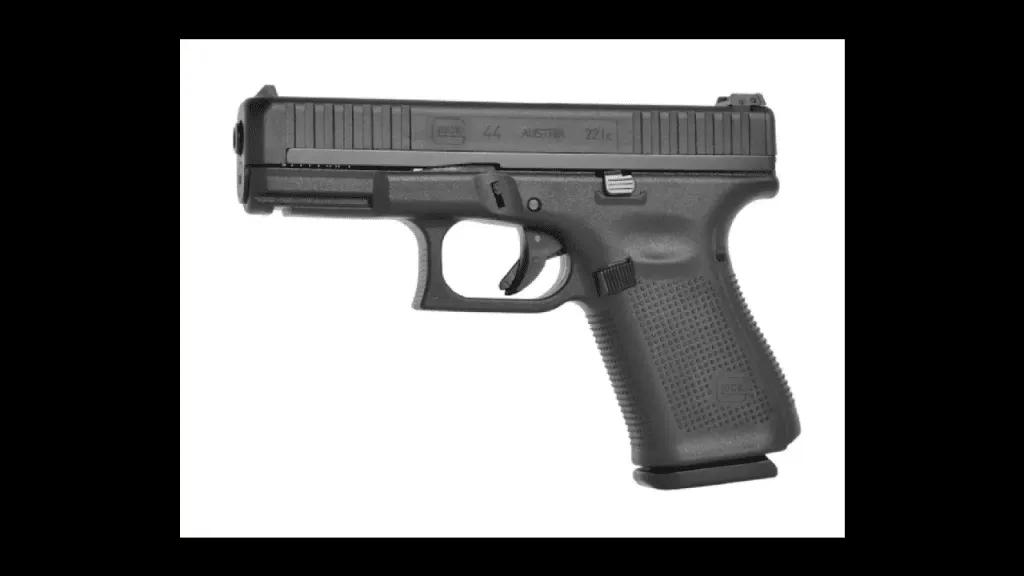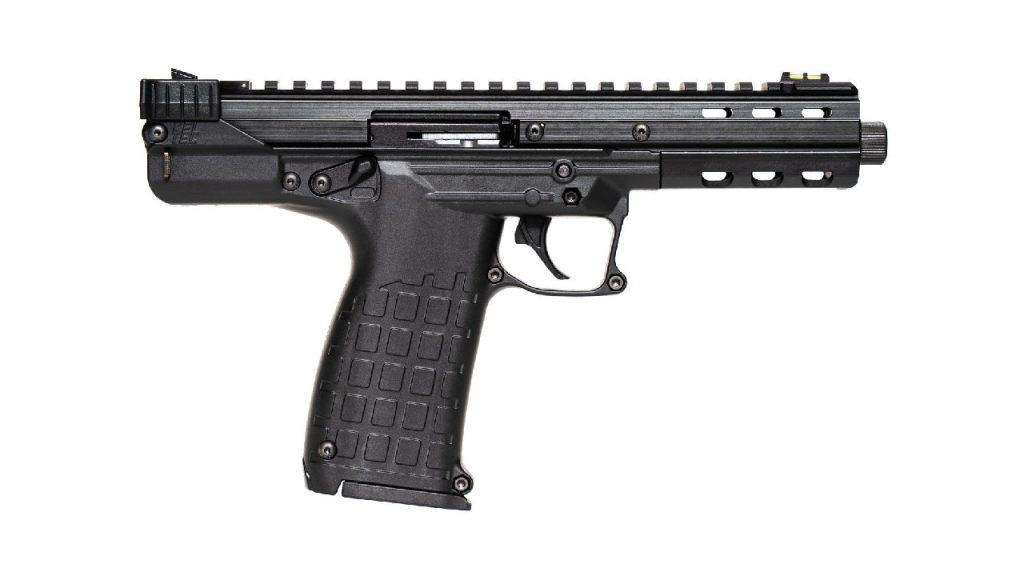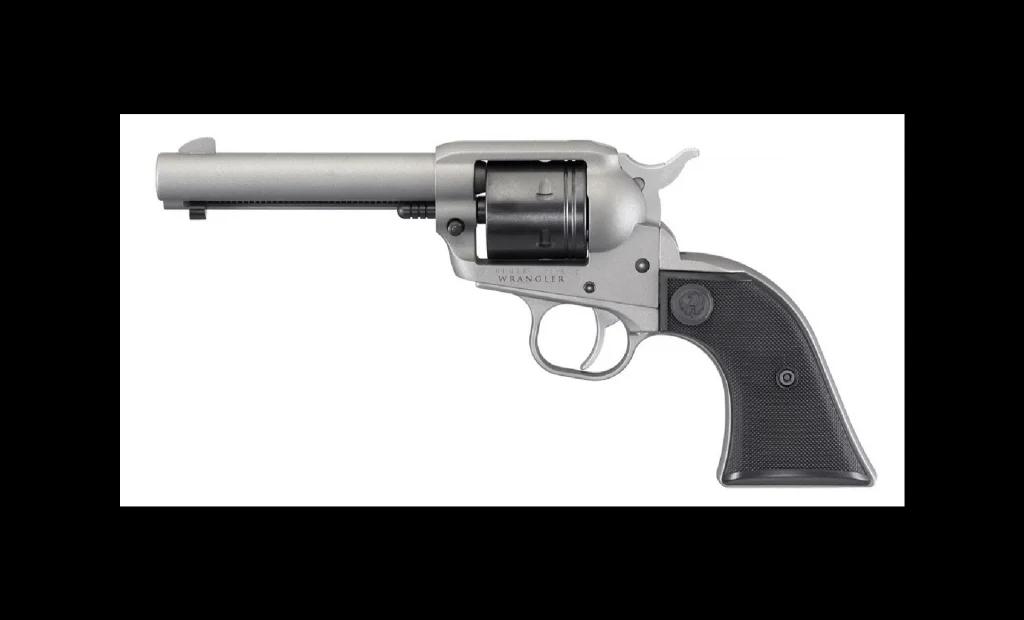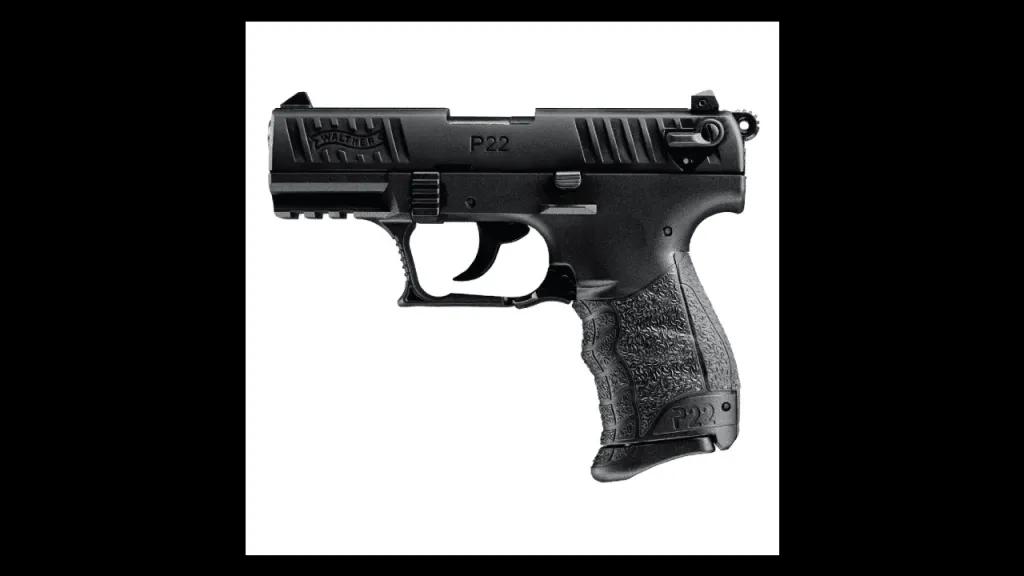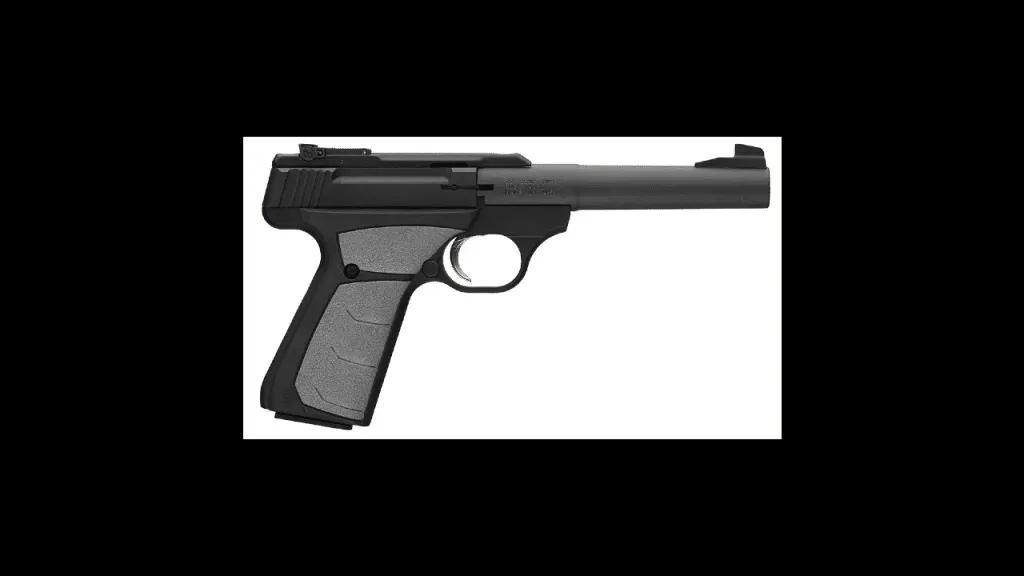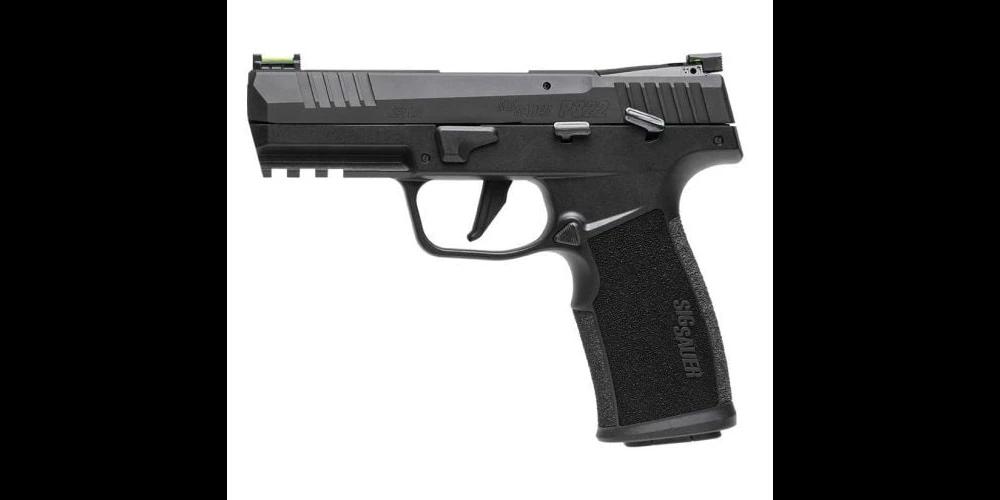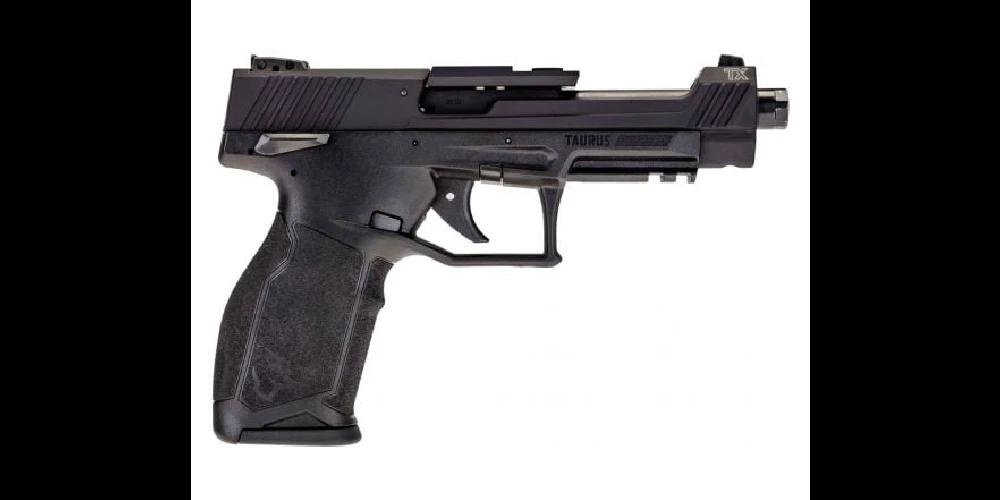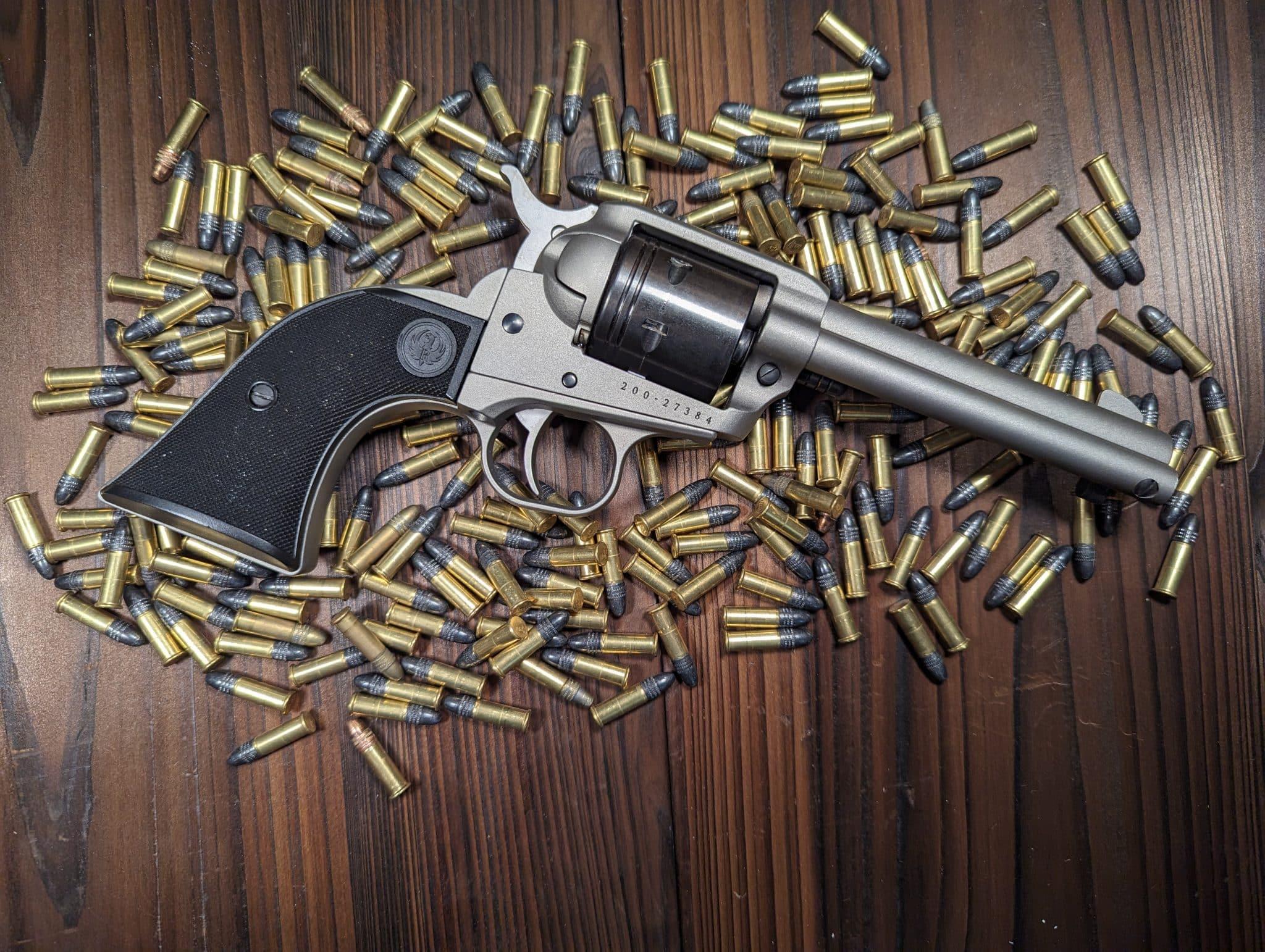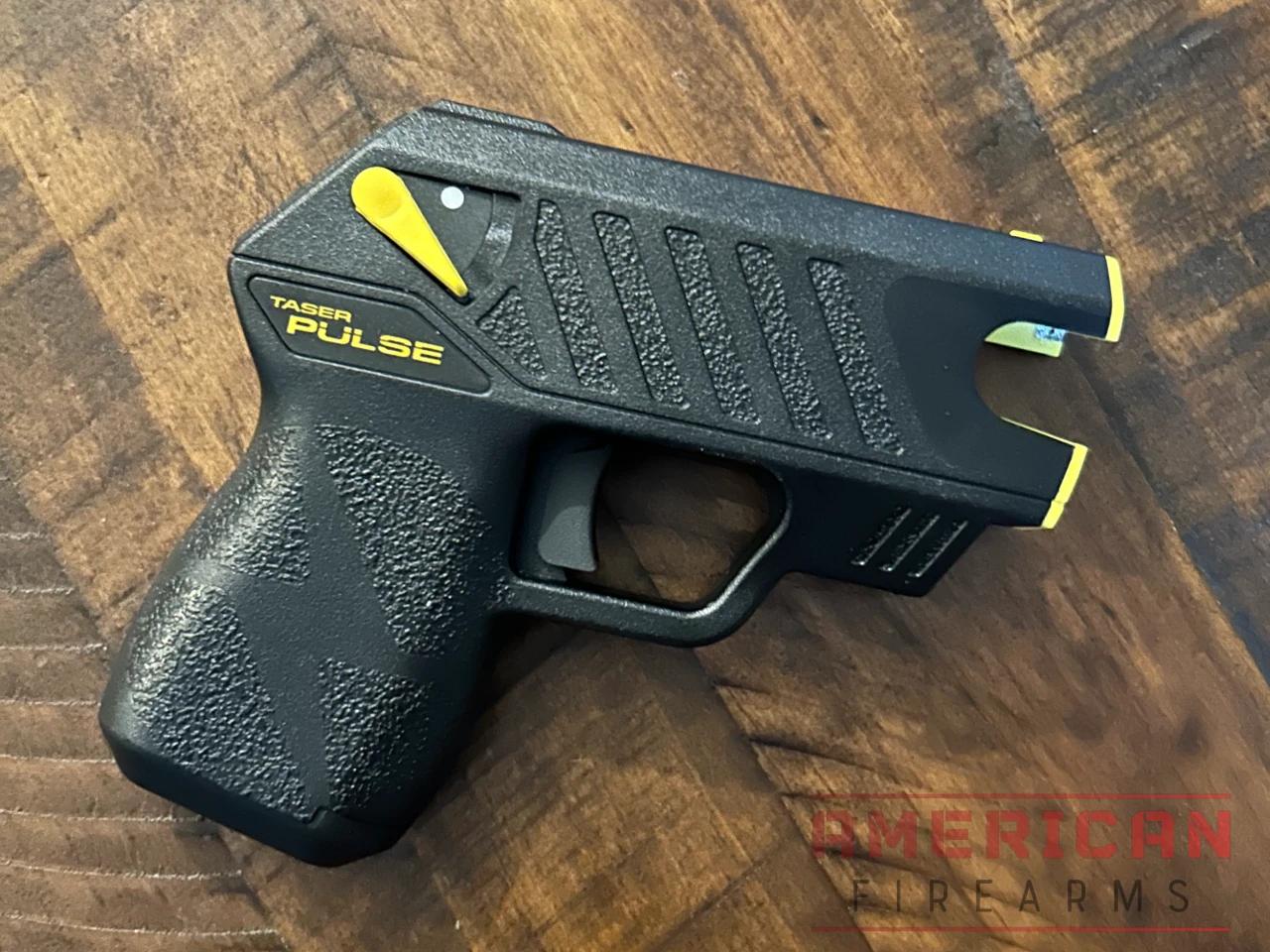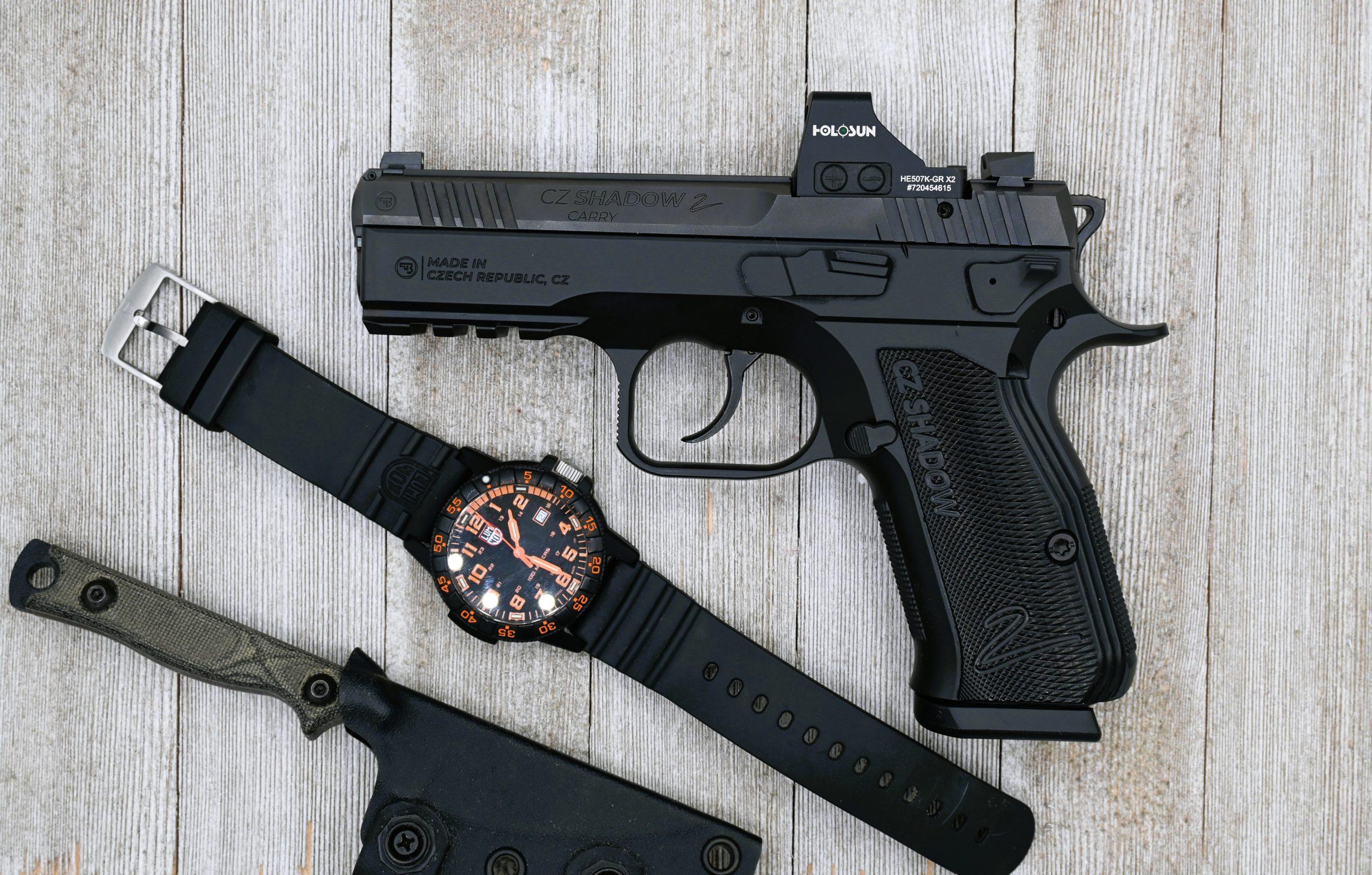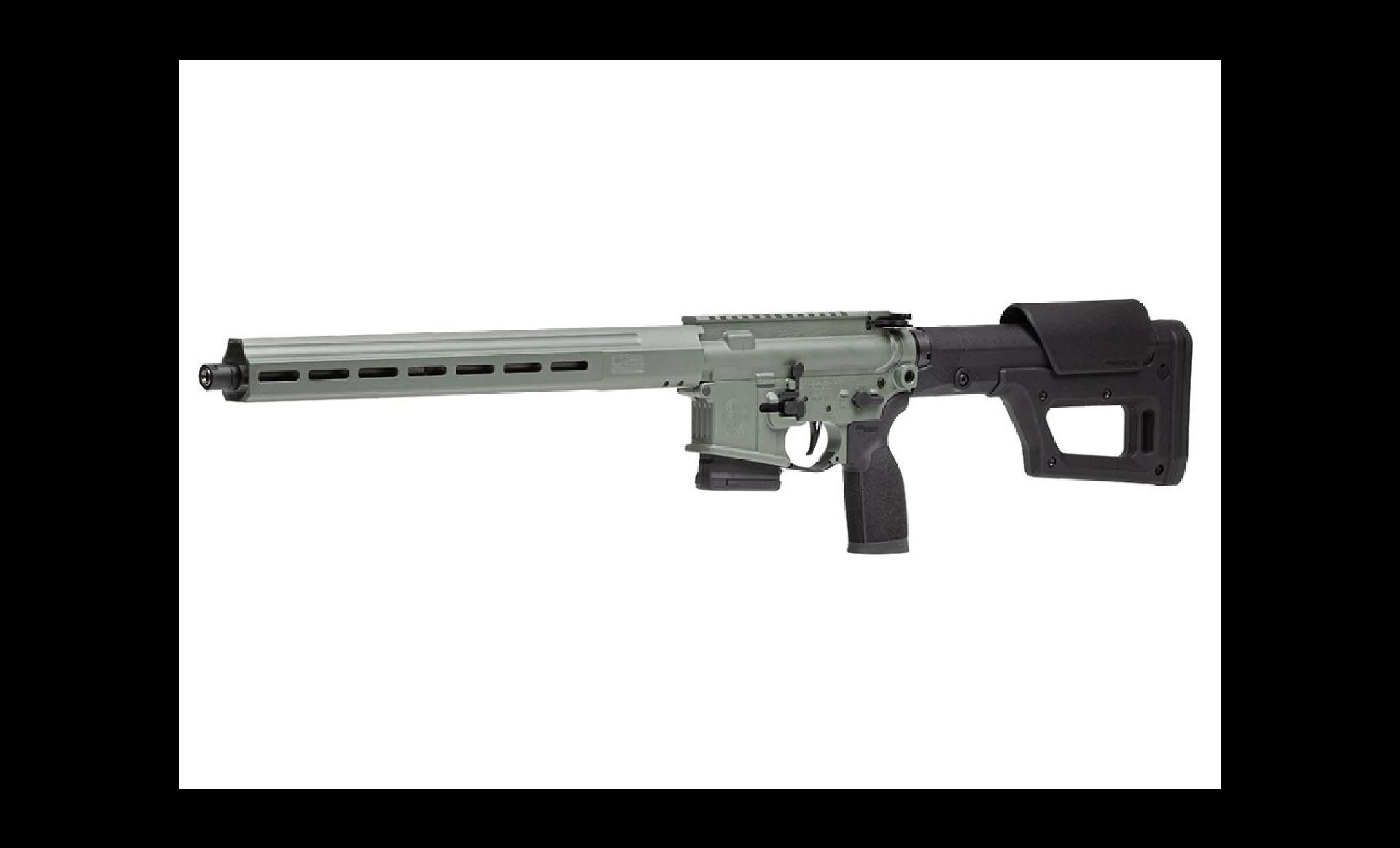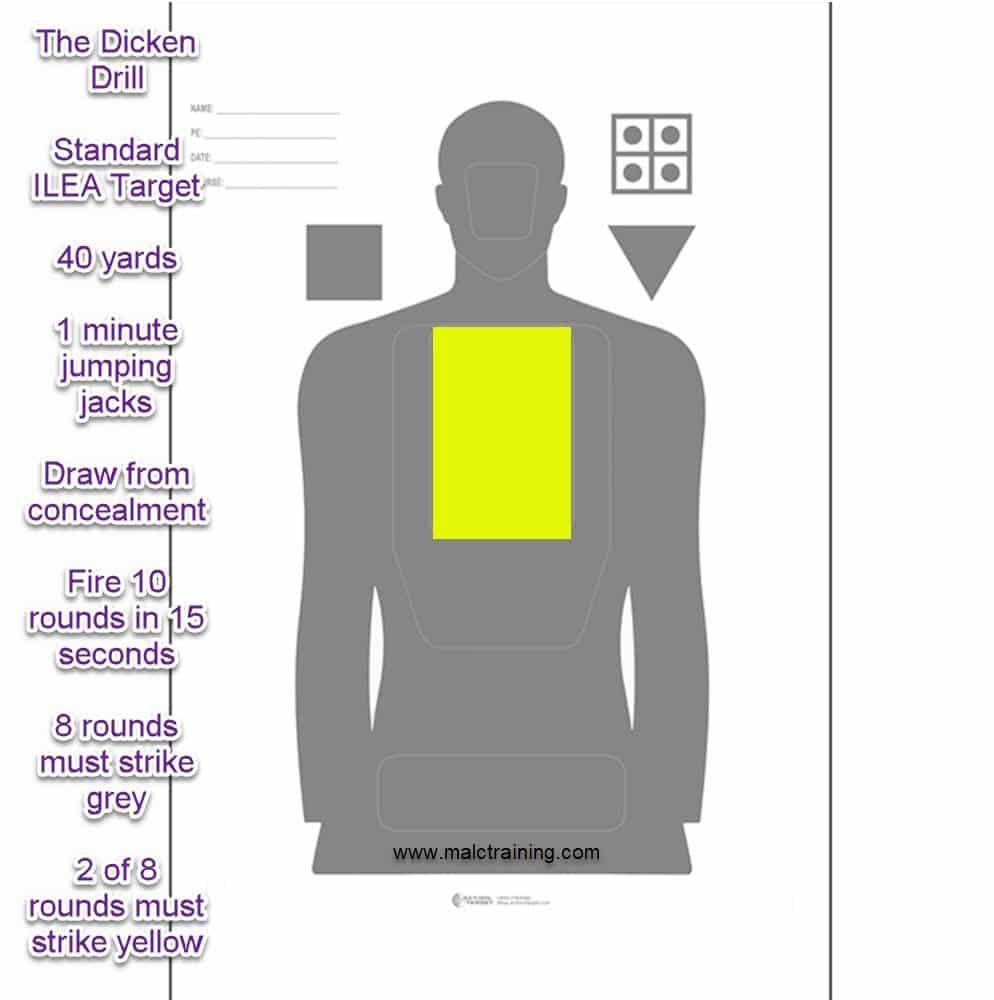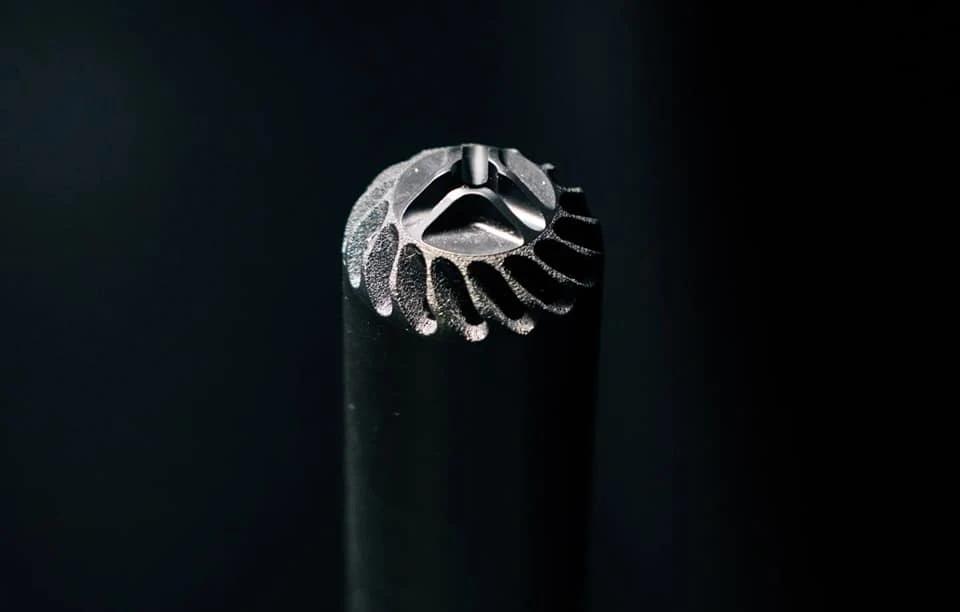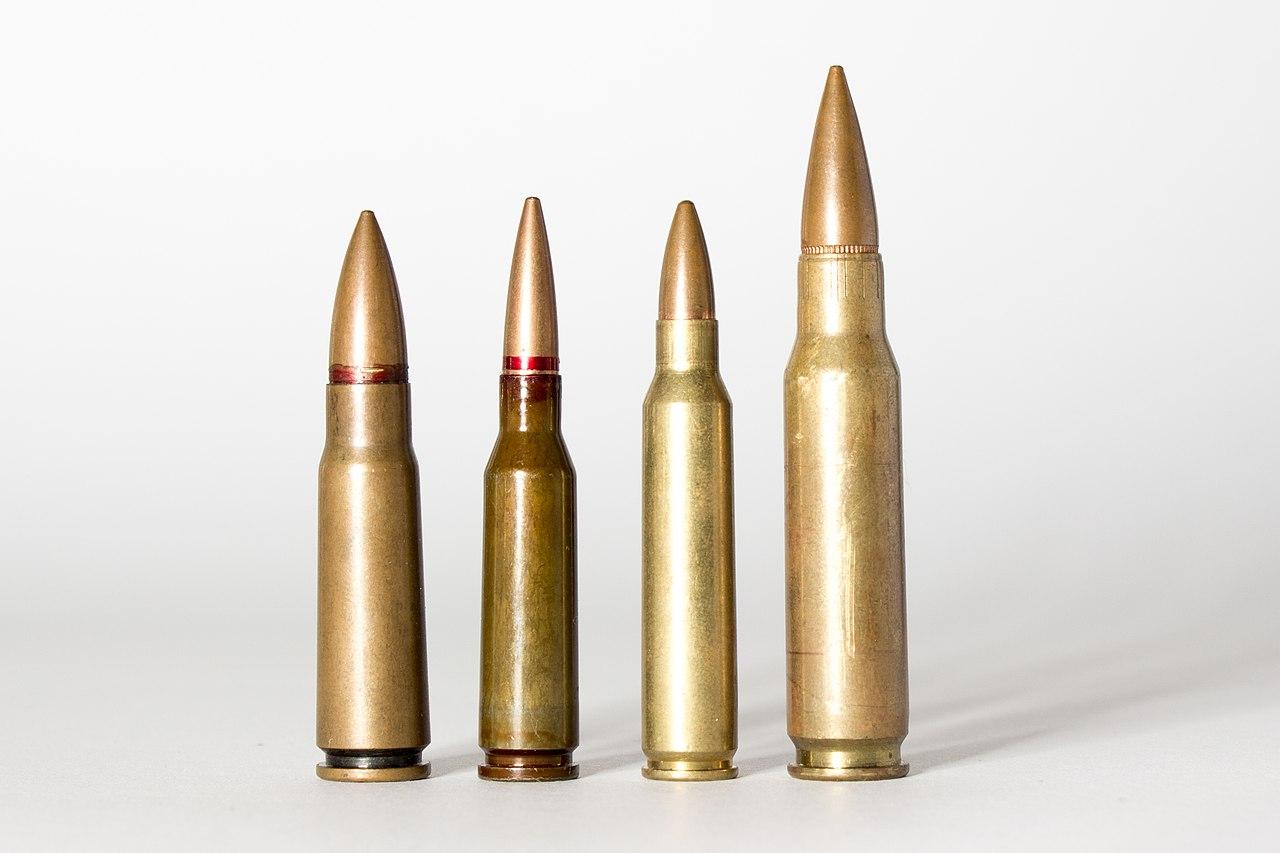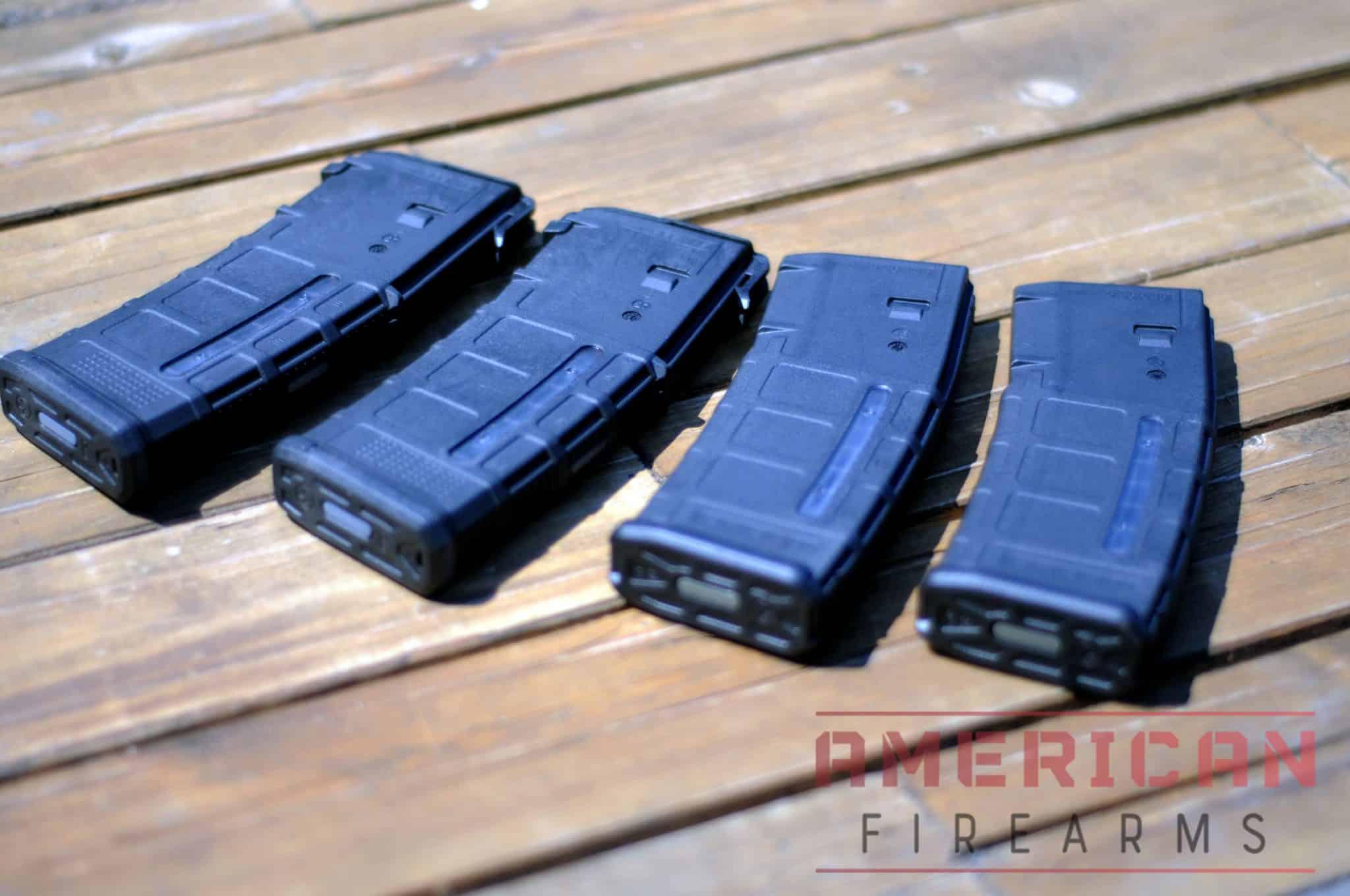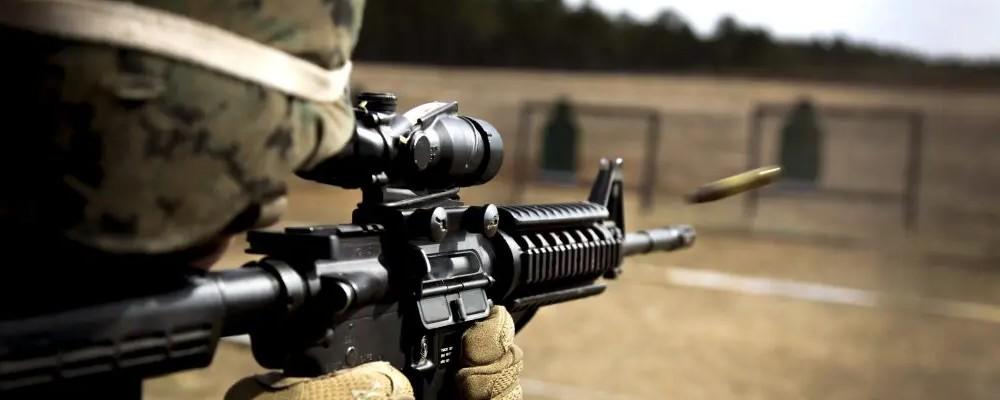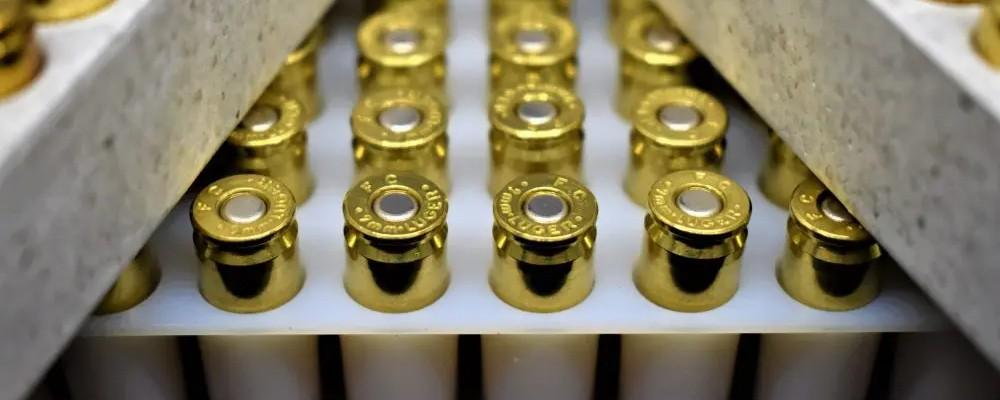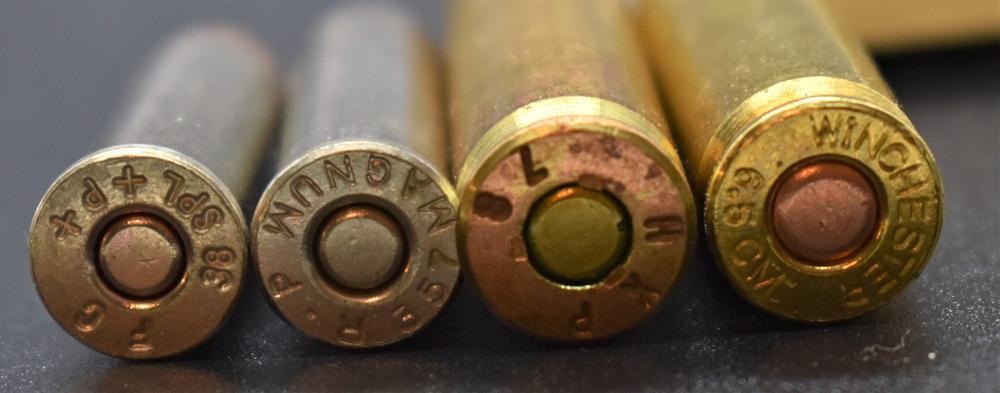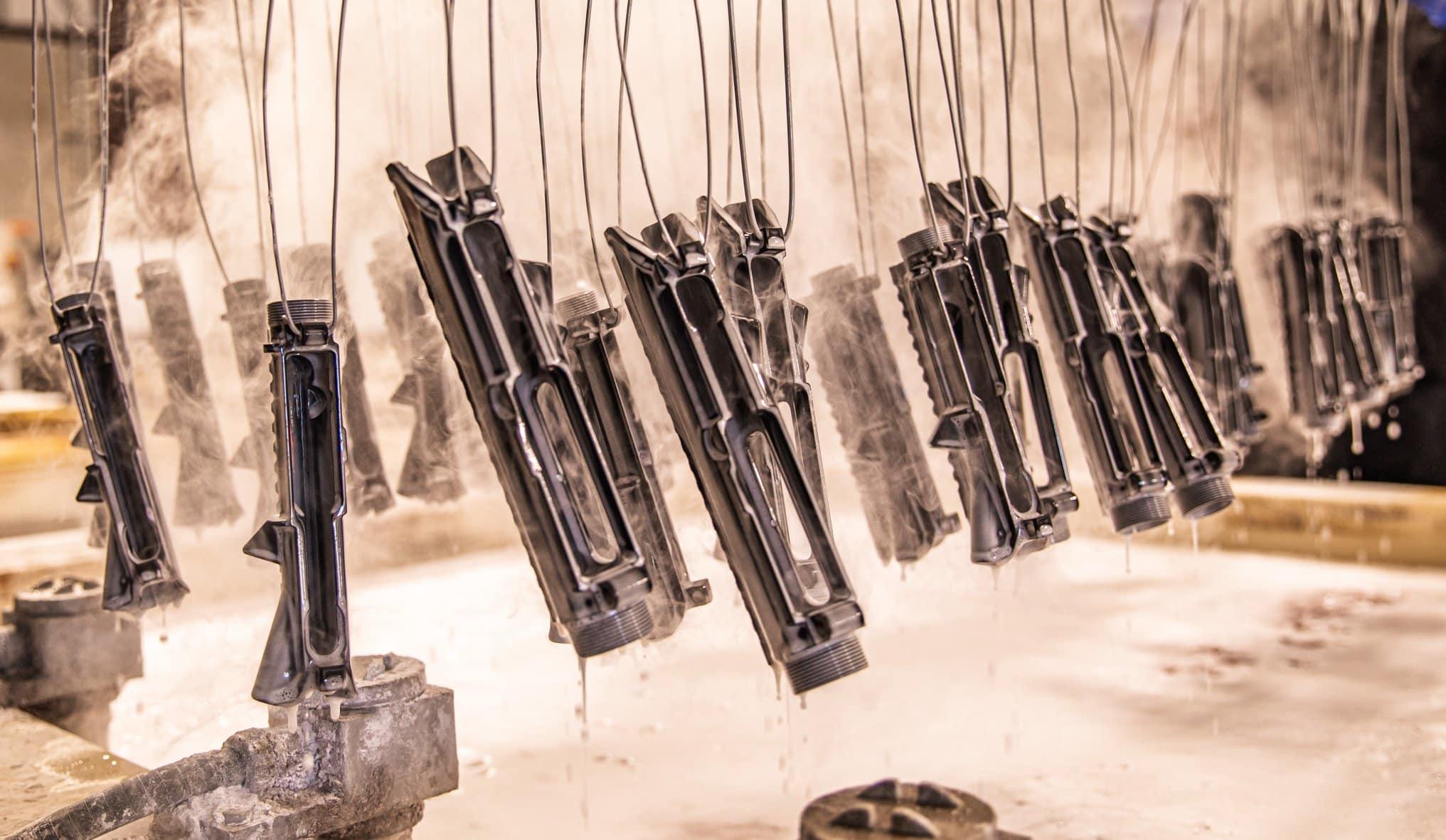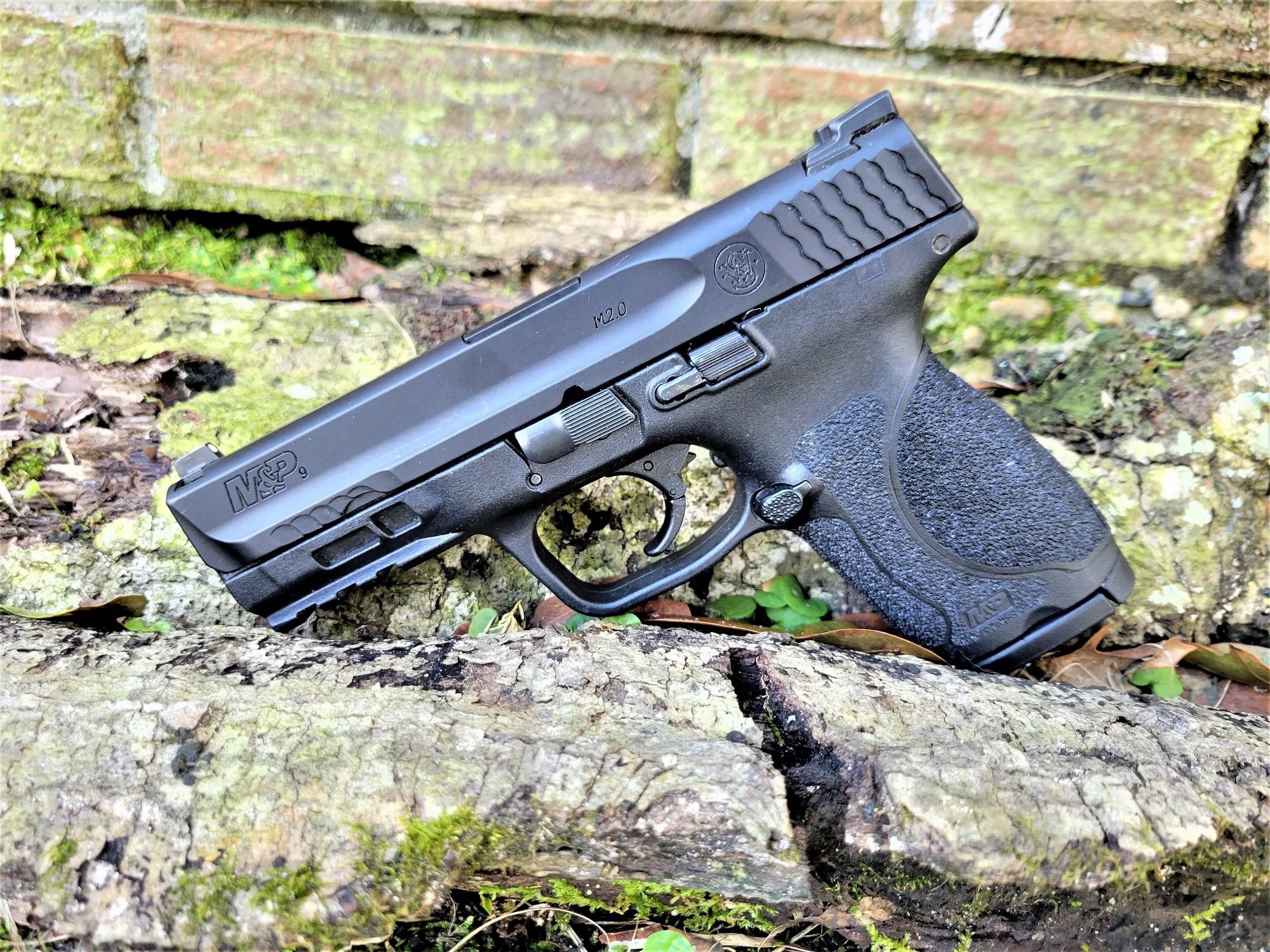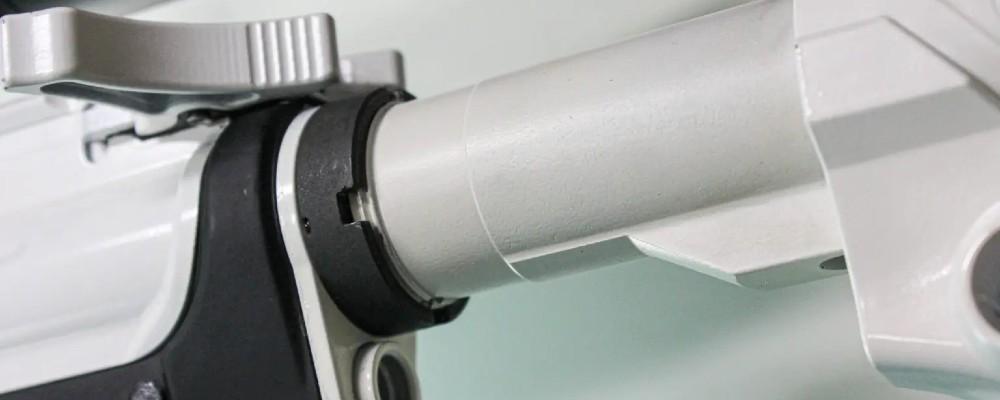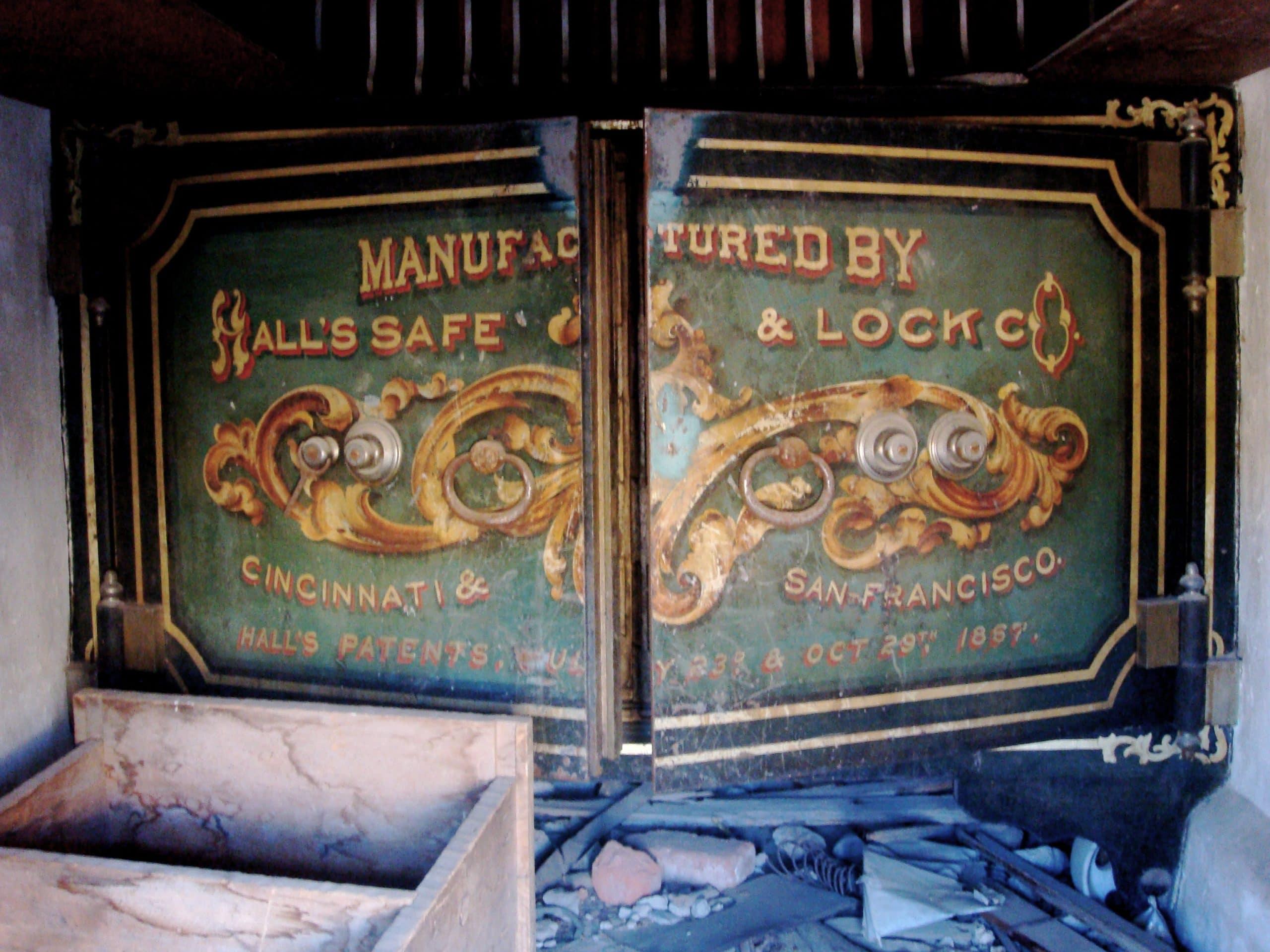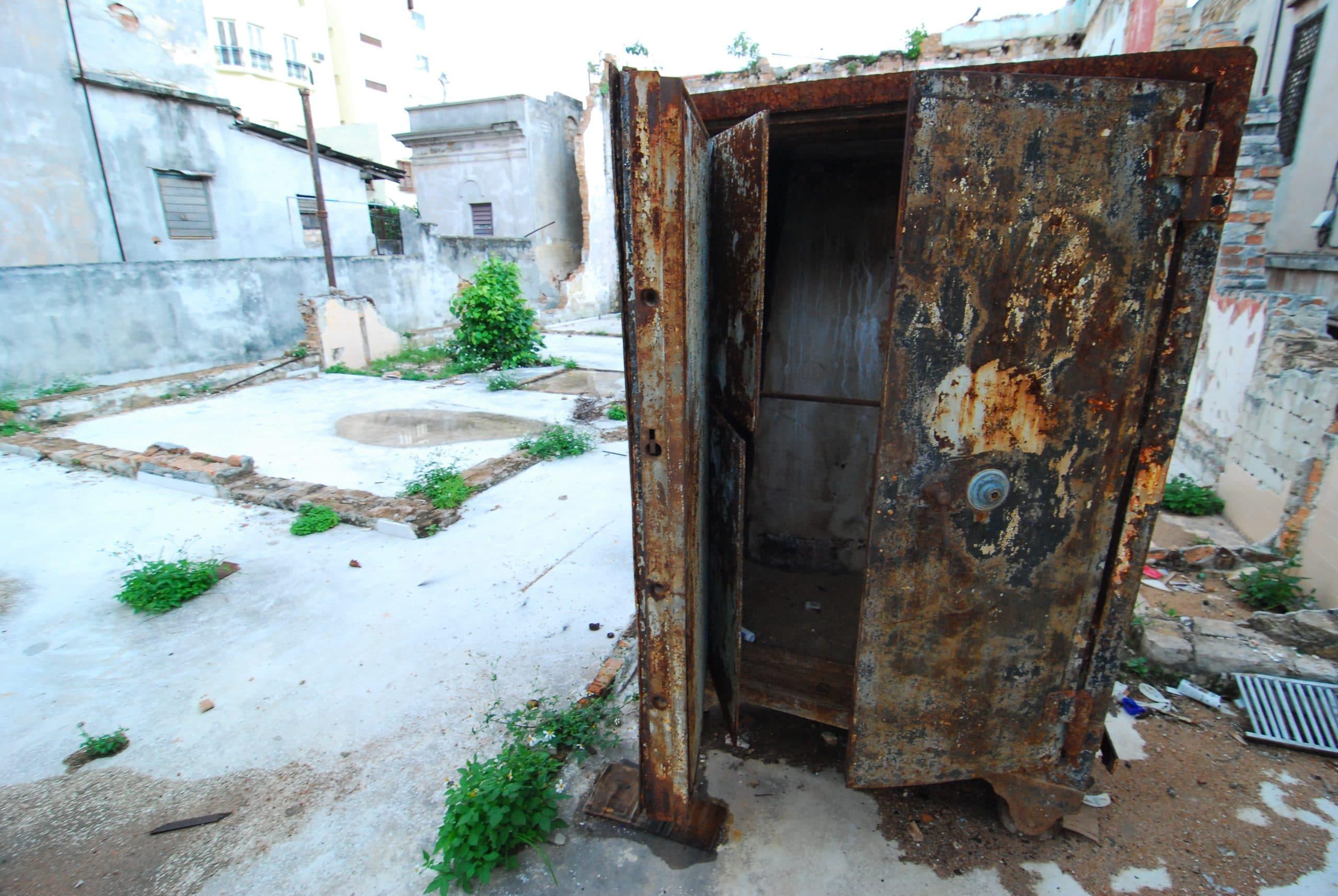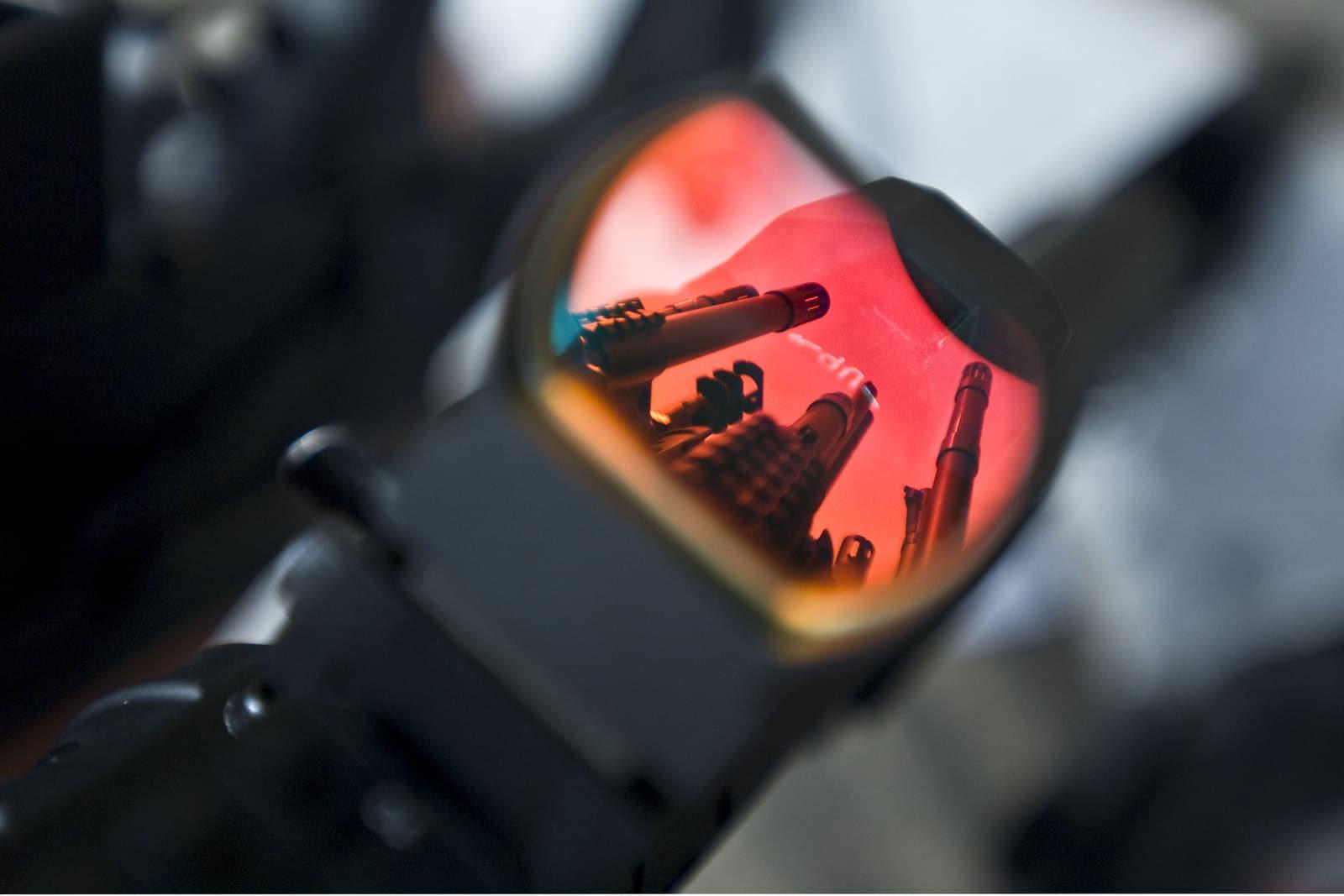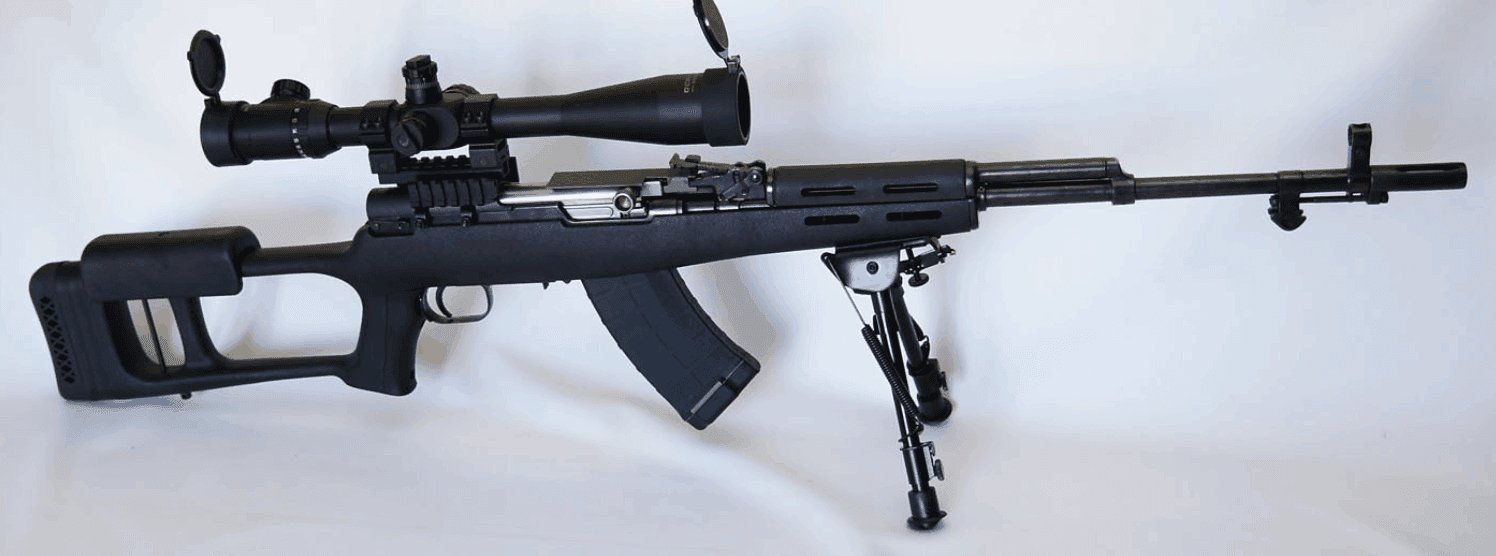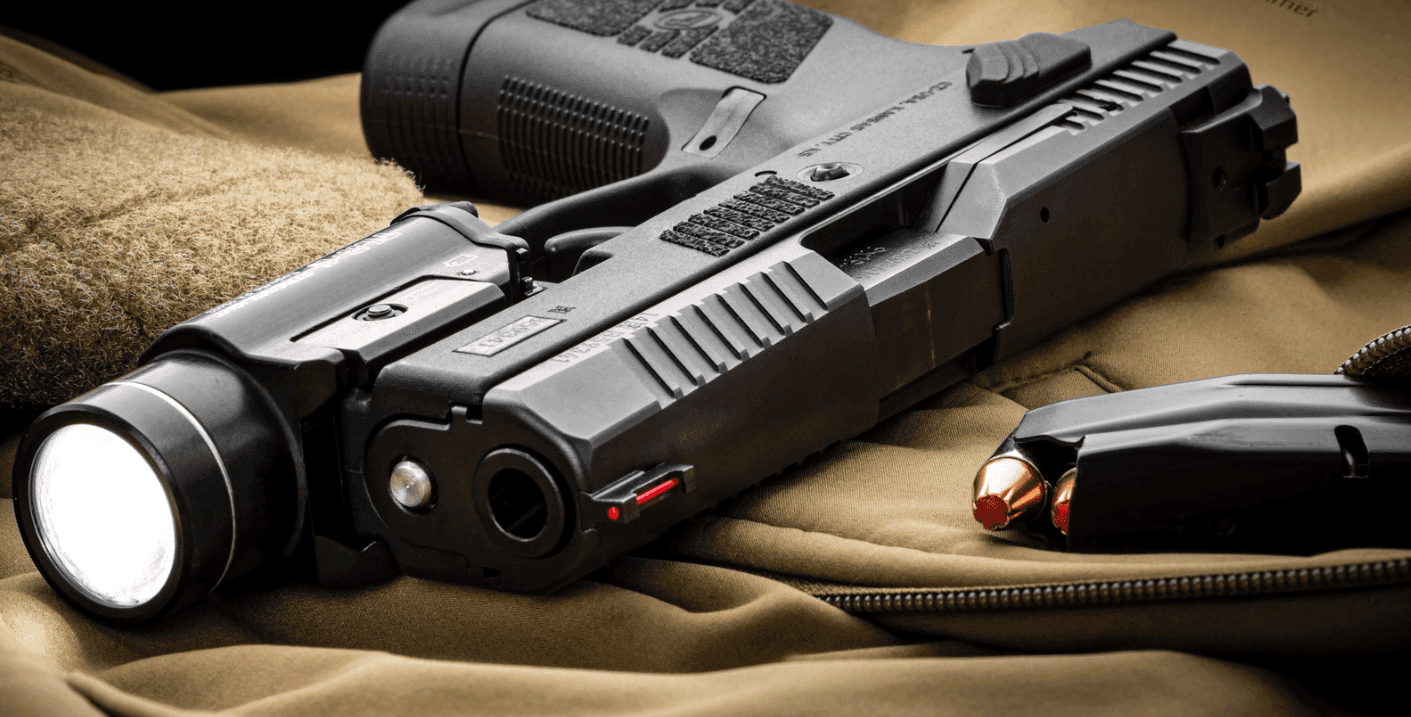Best .22LR Pistols: Find Your New Favorite Plinker
From rimfire revolvers to viable concealed carry options, here are our top 22 LR pistol picks for every situation. From Browning to Walther, find your perfect fit.
Written By
Kenzie Fitzpatrick
Competitive Shooter
Edited By
Michael Crites
Licensed Concealed Carry Holder
Share:
Products are selected by our editors. We may earn a commission on purchases from a link. How we select gear.
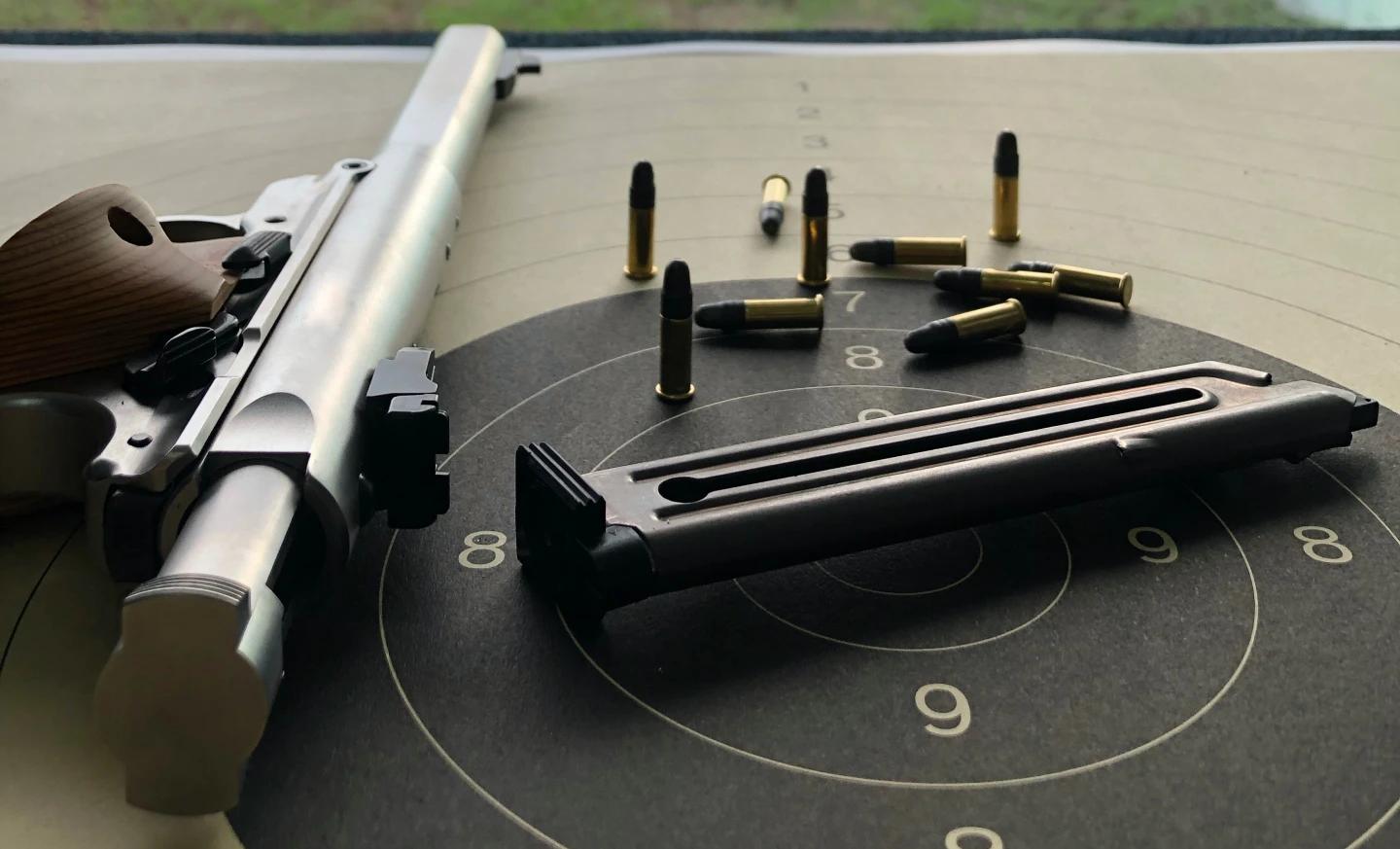
Updated
Jul 2025
From rimfire revolvers to viable concealed carry options, here are our top 22 LR pistol picks for every situation. From Browning to Walther, find your perfect fit.
In This Article
Why .22LR Pistols Matter
In the annals of firearm history, the humble .22LR once occupied a niche corner, primarily reserved for Bullseye-style competition shooting and military handgun marksmanship training. However, its evolution tells a story of adaptability and innovation that has made it an essential cornerstone of American shooting culture.
Did you know that during the early 20th century, .22LR firearms were often used in shooting galleries at fairs and carnivals? Their low recoil and affordability made them a favorite for both novices and seasoned marksmen (although I’m sure OSHA would have had a conniption fit about it.)
Fast forward to today, and the .22LR has transformed from a carnival mainstay to an essential piece in every firearm enthusiast’s collection—and for damn good reasons.
The Economics of Excellence
The financial benefits alone make a compelling case. Ammunition for the .22LR is not only ubiquitous but also remarkably cost-effective, often priced at just 10% per round compared to its larger-bore counterparts. While a box of 9mm might set you back $20-30, you can burn through 500 rounds of .22LR for the same cost. This affordability transforms what would be an expensive training session into an afternoon of trigger time that won’t break the bank.
But the modern .22LR pistol is not just about cost savings and historical anecdotes. The latest generation of .22LR autoloaders has shattered the mold of historical rimfire limitations. These firearms now come equipped with features and capabilities that would have been considered revolutionary in bygone eras—optics-ready slides, threaded barrels for suppressors, ambidextrous controls, and magazine capacities that rival some centerfire pistols—all at an entry point that doesn’t require a second mortgage.
The Perfect Training Platform
Here’s where .22LR pistols truly shine: they’re the ultimate training tool. Whether you’re a seasoned competitor looking to maintain muscle memory without the expense of centerfire ammunition, or a new shooter learning the fundamentals without the intimidation factor of heavy recoil, a quality .22LR pistol delivers.
The virtually nonexistent recoil allows shooters to focus on the fundamentals—sight picture, trigger control, and follow-through—without developing bad habits like flinching or jerking the trigger in anticipation of recoil. Many professional instructors start new shooters on .22LR for precisely this reason.
Beyond the Backyard
While many dismiss .22LR pistols as “just plinkers,” their utility extends far beyond knocking tin cans off fence posts. These versatile firearms excel in pest control situations where precision matters more than raw power. They’re legitimate hunting tools for small game, competition-ready platforms for Steel Challenge and rimfire divisions, and surprisingly capable training substitutes for their centerfire cousins.
Moreover, the contemporary .22LR pistol is tailored to the needs of today’s discerning shooter. Whether it’s for sport, training, or practical shooting scenarios, these firearms are more than up to the task, showcasing how far they’ve come from their early days at the carnival shooting gallery.
What Makes a Great .22LR Pistol
Not all .22LR pistols are created equal. The best examples on today’s market combine reliable feeding (no small feat with rimfire ammunition), intuitive ergonomics, quality construction, and features that enhance the shooting experience rather than complicate it. They’re guns that work consistently, clean easily, and put rounds where you point them—session after session, box after box.
In this comprehensive guide, we’ll cut through the marketing fluff and give you the straight dope on which .22LR pistols deserve your hard-earned cash. We’ve tested these firearms extensively, analyzed their strengths and weaknesses, and ranked them based on real-world performance rather than brand loyalty or price tags.
Let’s get into the good stuff!
.22LR Pistol Comparison
Our Top Picks
Displaying 1 - 1 of 8
Awards
Price
Overall Rating
Description
Rating Categories
Accuracy
Ergonomics
Features
Fit & Finish
Reliability
Value

$419.99 at Palmetto State
Jump to Details29
A knockout for Glock's first rimfire pistol.
7/10
4/10
4/10
5/10
5/10
4/10

$499.99 at Palmetto State
Jump to Details47
With 33 rounds on tap, the only real drawback is how much time you'll spend reloading.
8/10
7/10
9/10
8/10
7/10
8/10

$205.99 at Palmetto State
Jump to Details44
Ruger's budget take on the more expensive (and more modular) single-action revolver has proven to be quite the hit.
7/10
6/10
8/10
5/10
9/10
9/10

$349.99 at Palmetto State
Jump to Details29
A rimfire concealed carry powerhouse.
5/10
4/10
6/10
5/10
5/10
4/10

$522.99 at Palmetto State
Jump to Details33
More tactical features than just about any .22 pistol on the market,
6/10
5/10
6/10
6/10
6/10
4/10

$555.99 at Palmetto State
Jump to Details51
Tough to go wrong with this accurate blowback.
9/10
8/10
8/10
9/10
9/10
8/10
$427.99 at Palmetto State
Jump to Details32
Stands apart from the competition when it comes to features, capacity, and reliability.
8/10
5/10
4/10
6/10
5/10
4/10

$493.99 at Palmetto State
Jump to Details25
A great competition rimfire pistol that received almost universally positive reviews since its debut in 2019.
5/10
4/10
4/10
4/10
3/10
5/10
| Name | Selection | Weight | Action |
|---|---|---|---|
Glock G44 | Best Overall | 14.64 oz. | Striker Fired |
KelTec CP33 | Most Capacity | 1.25 Lb. | Direct Blowback |
Ruger Wrangler | Best .22LR Revolver | 30 oz. | SA Revolver |
Walther P22 | Concealed Carry Pick | 17 oz. | Hammer-fired |
FN 502 | Tactical Pick | 23.7 oz | Hammer-fired |
Browning Buck Mark | Beginner Pick | 34 oz. | Blowback Action Single-Action |
Sig Sauer P322 | Also Great | 17 oz. | Semi-Automatic |
Taurus TX22 Competition | Competition Pick | 17.3 oz. | Striker Fired |
How We Test
Accuracy and Reliability
We bench fire four five-round groups with a variety of 22 LR ammunition types from 10 and 30 yards to evaluate their accuracy at various distances.
Design and Ergonomics
We evaluate the overall weight and balance of the 22 LR handgun, including the grip feel and texture, and how these factors impact accuracy and ease of use.
Trigger
We measure the weight of the trigger pull using a trigger scale and assess how consistent it is from shot to shot.
Durability
We also review the materials used in the production and subject test handguns to a variety of stress tests, including a five-foot drop test, and prolonged use without maintenance.
More on our testing process
.22LR Pistol Reviews
1. Best Overall: Glock G44 .22 Pistol

$419.99

29
AVERAGE
2025 Awards & Rankings
Performance Scores
Specifications:
- Weight: 14.64 oz
- Capacity: 10
- Length: 7.28”
- Barrel Length: 4.02”
- Height: 5.04”
- Action: Striker Fired
The Good:
- Reliable Glock technology
- Full-sized firearm (same as the G19)
- Internal components are steel
- Great trainer gun
- Same controls as other Glocks
The Bad:
- Smaller rounds will require longer break-in period
- Expensive relative to other options
- No threaded barrel option
- .22LR does not always feed well out of the included magazines
- Stock sights are plastic
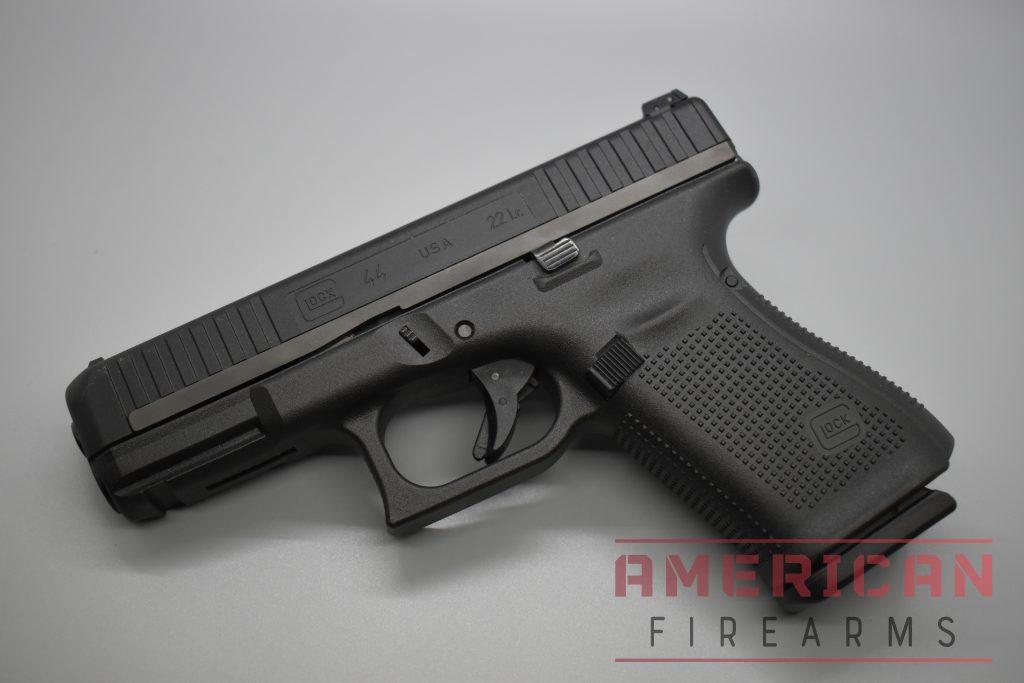
Somehow, Glock made it 35 years without making a .22LR pistol.
A knockout for Glock’s first .22 pistol
Secure in the knowledge that their centerfire handguns are among the best-selling modern pistols in the world, the Glock Model 44 is identical in size and layout to Glock’s G19 while running a pound lighter due to its hybrid polymer/steel slide.
This allows G19 owners to have the side benefit of picking up a G44 for inexpensive training to help keep their skills sharp. About the worst detractor on these guns is that they do not come suppressor-ready, and quality aftermarket threaded barrels are sometimes hard to find. Every Glock fan with a G19 has a holster that will accommodate the G44.
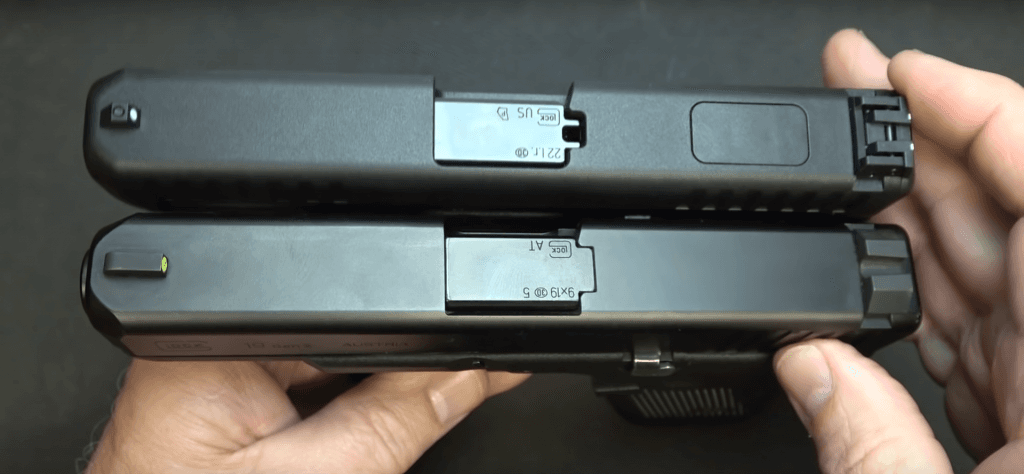
One of the few striker-fired rimfire pistols
It’s surprisingly difficult to make a reliable rimfire pistol due to the balance required to ensure the lighter recoil spring can completely pull the slide forward to feed the next round from the magazine – a feat the diminutive round struggles to pull off consistently due to the lip on the round.
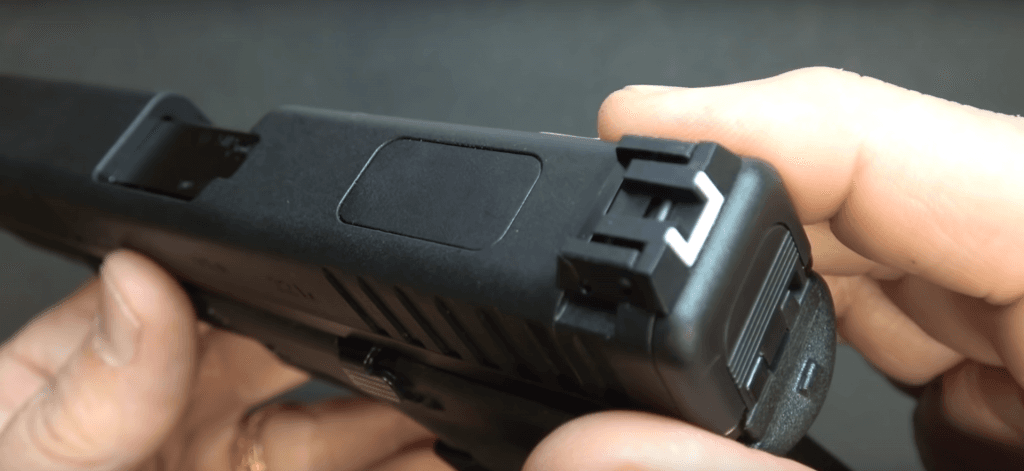
This is also why the below Smith and Wesson M&P .22LR pistol looks exactly like the 9mm version, except it’s actually hammer-fired.
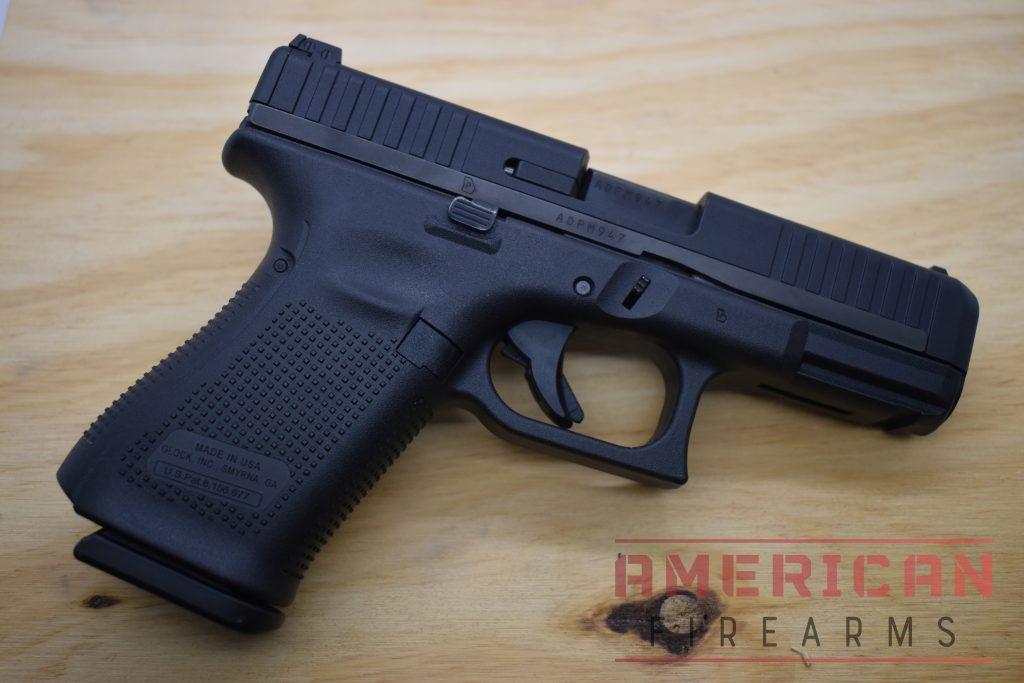
Just Like the G19 but in .22LR
Glock pulled off a near-perfect clone of their incredibly versatile Glock 19 in terms of dimensions, appearance, and layout, surface controls, & feel — hell, the lightweight pistol fits in the same holsters and accessories with both front and rear slide serrations.
They also used their polymer/steel hybrid slide on the G44 to ensure the balance required for maximum reliability was achieved without needing to engineer a new solution just for this little .22 LR semi-auto popper.
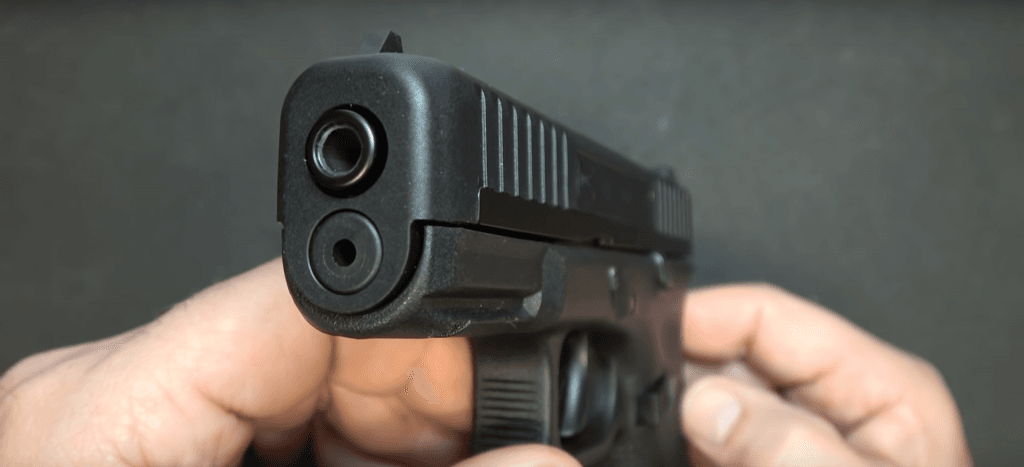
The G44 is an incredibly fun gun that gives the G19 owner a training pistol that offers enough ammo savings to pay for itself while also giving the next generations of shooters an introduction to the same tried and true Glock platform — polymer frame, ambidextrous slide stop, and crisp trigger included.
Of course, without the muzzle blast and recoil of full-powered 9mm rounds.
2. Best Capacity: KelTec CP33
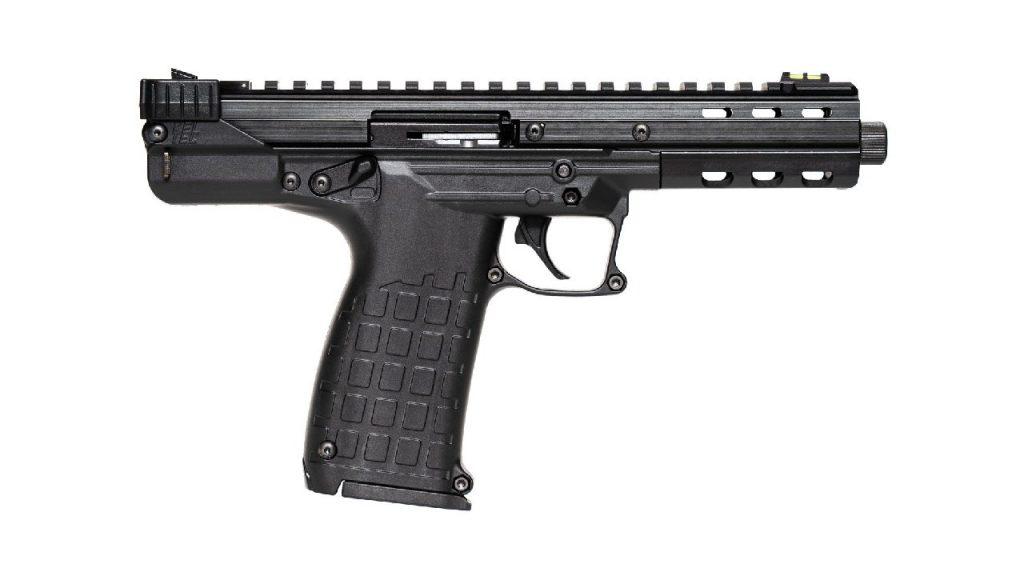
$499.99

47
EXCEPTIONAL
Performance Scores
Specifications:
- Weight: 1.5 pounds
- Capacity: 33
- Length: 10.6″
- Barrel Length: 5.5″
- Height: 6”
The Good:
- Incredible magazine capacity
- Versatile design & full Picatinny rail
- Generous, comfortable grip
- Ambidextrous safety and charging handle
The Bad:
- Limited aftermarket trigger options
- Proprietary bolt and charging handle
- Non-ambi controls
- Polymer receiver
So many .22 pistols adhere to conventions — they look like other guns or take tried and true approaches. Not the CP33. The competition pistol from KelTec gives you M-Lok slots, a 9-inch Picatinny rail up top, a threaded barrel, and 33-round quad-stack(!) magazines.
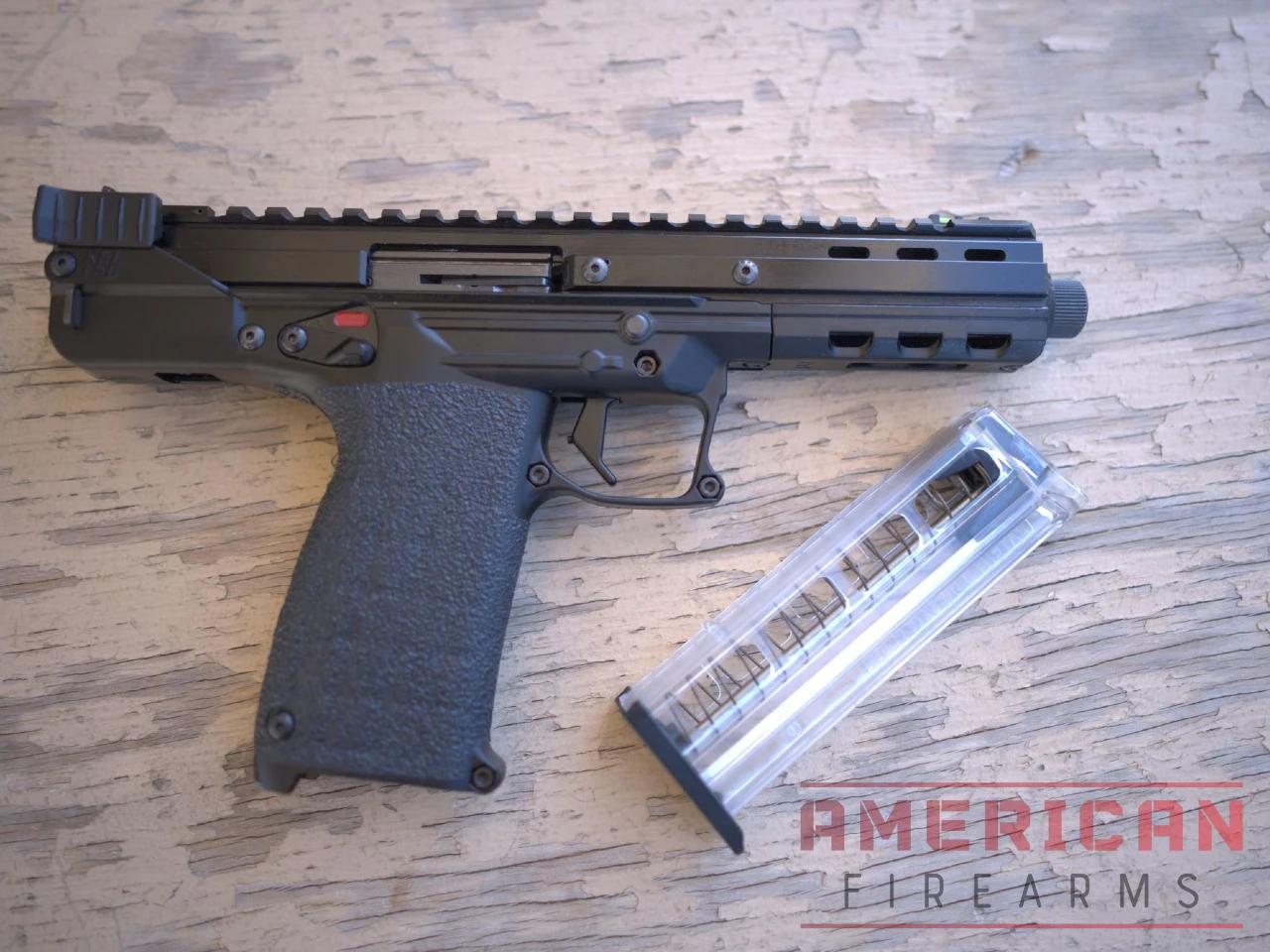
Many folks would look at this CP33 and its unique approach to a rimfire pistol and think it’s got to be something like a toy, but the factory trigger breaks at just under 5 pounds and is nice and crisp. Plus, the pistol is big (it’s just over 10 inches long) and the centered grip balances the gun well and eliminates almost all recoil, so even rapid-fire shooting stays remarkably flat and easy to control.
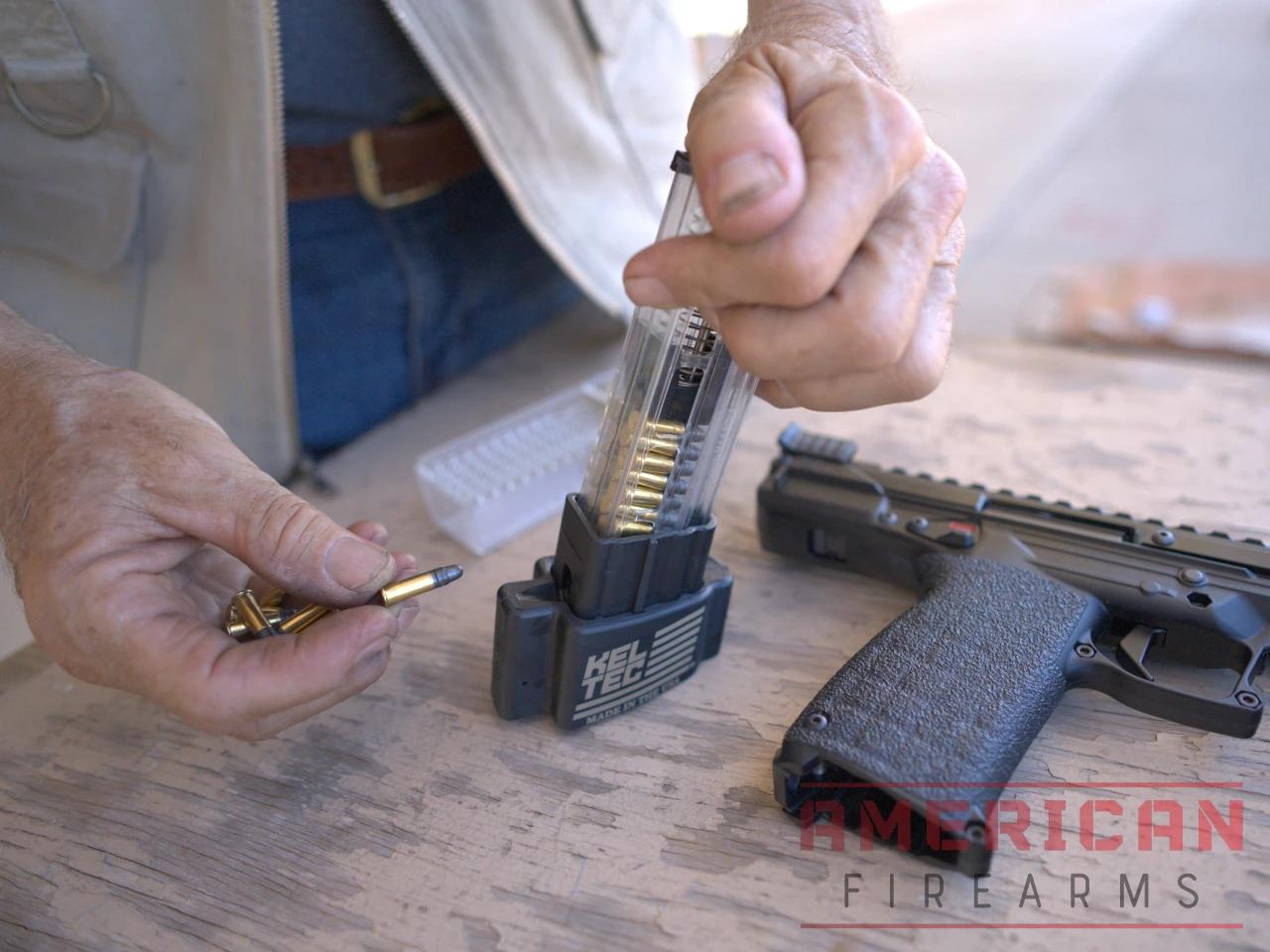
That massive capacity means loading the magazines is very time-consuming. Plus, when done by hand you have to ensure the cartridge rims overlap the right way to avoid jams and feed issues.
That said, KelTec sells a nice Speedloader that makes the process much less painful.
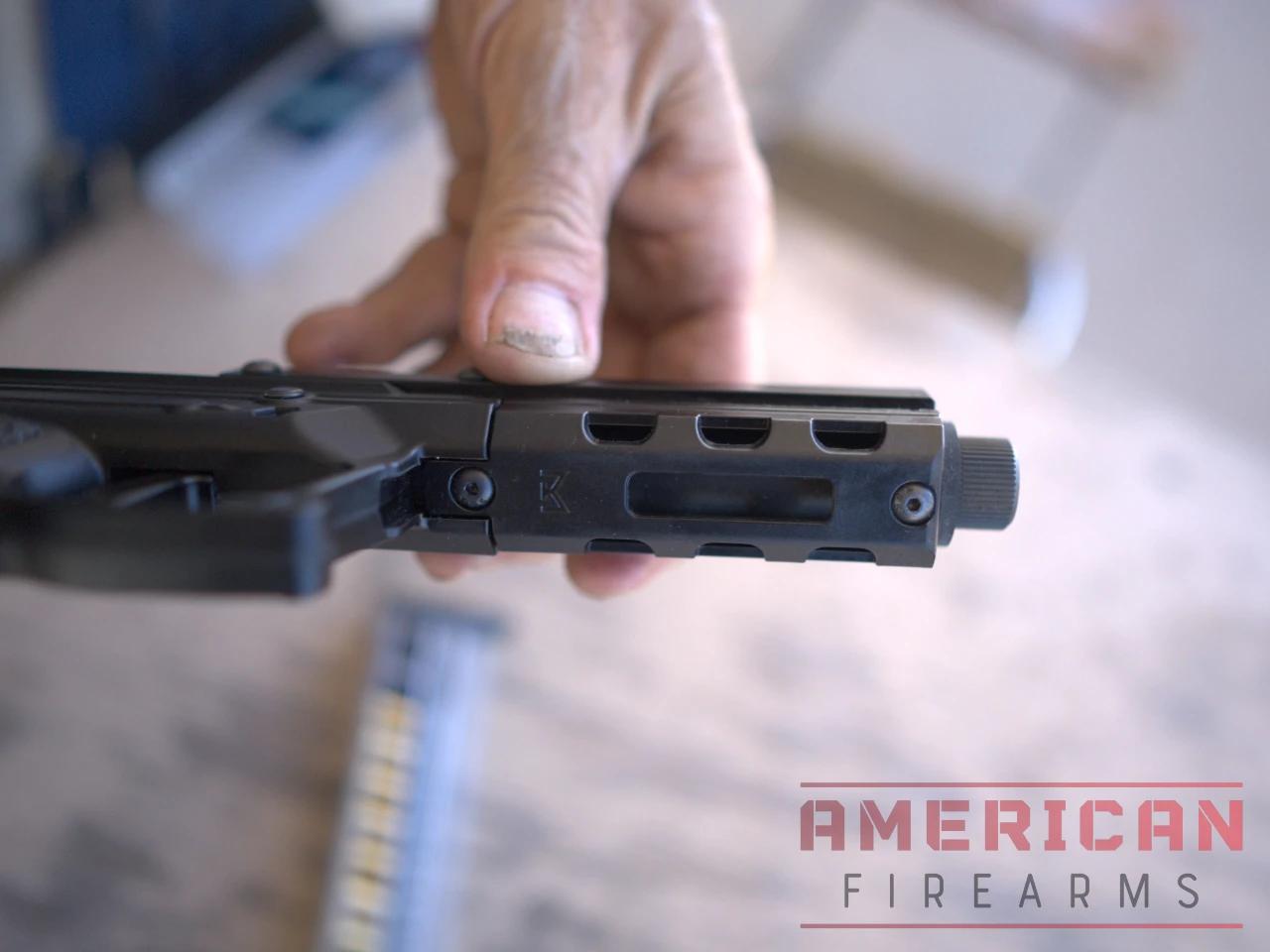
The pistol uses a lightweight aluminum alloy frame with polymer in all the right places and the end result is a really lightweight pistol. It weighs a full pound less than the Ruger Mark 3 22/45 pistols but has 3X the capacity.
The CP33 is a ton of fun and works well as both a competition gun and a fantastic learner pistol. Check out our video above and full hands-on CP33 review.
3. Best Rimfire Revolver: Ruger Wrangler
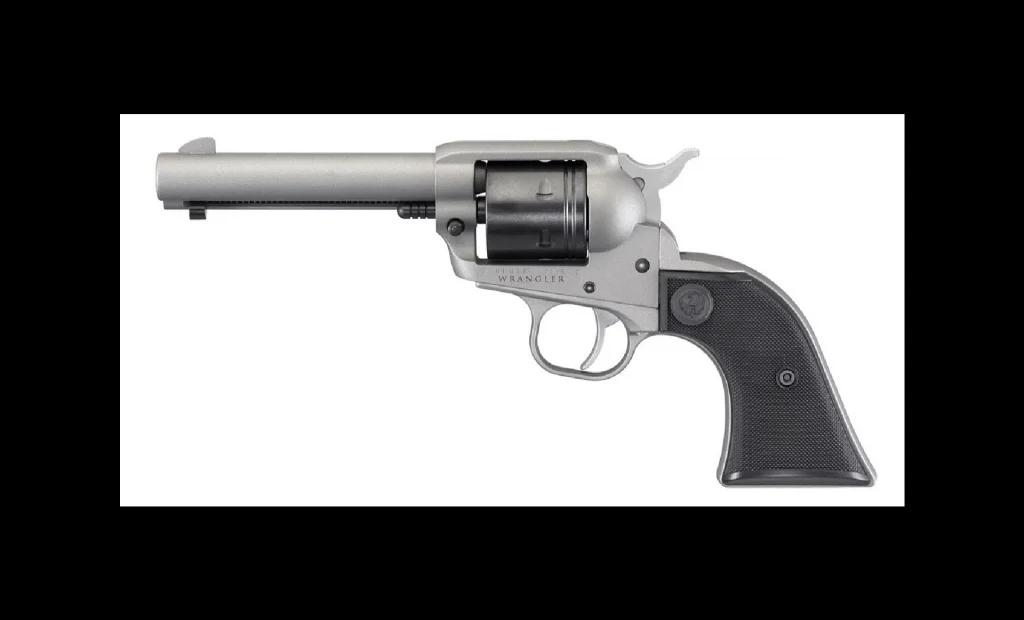
$205.99

44
EXCEPTIONAL
2025 Awards & Rankings
Performance Scores
Specifications:
- Weight: 30 oz
- Capacity: 6
- Length: 10.25”
- Barrel Length: 4.62”
- Action: Single-Action Revolver
The Good:
- Modern take on a single-action
- Surprisingly well-built
- Multiple safety systems
- Recoil is AWOL
- Lighter than other rimfire revolvers
The Bad:
- Shockingly heavy trigger pull
- 6-rounds is not a lot of pew
- Non-adjustable rear sight
- Small, non-ergonomic grip
- Non-interchangeable cylinder

Building on Ruger’s Single Six revolver heritage, their budget take on the more expensive (and more modular) single-action revolver has proven to be quite the hit, supplanting the ubiquitous Heritage Rough Rider on our list this year in the revolver category.
The Wrangler takes a lot of what has made the Single Six a classic — SAA looks, quality build, and multiple safety systems — but strips away the more expensive components, like interchangeable cylinders and a steel alloy frame in favor of lighter aluminum, to give shooters a shocking high-quality rimfire revolver that packs a ton of target shooting fun into an old-school package.
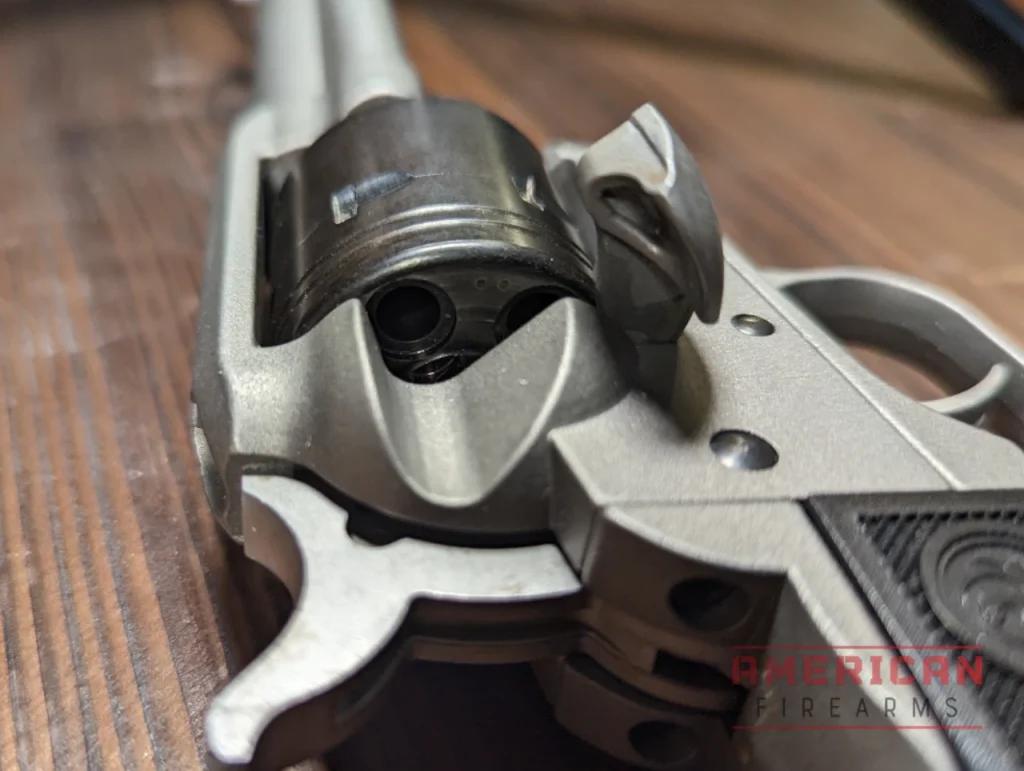
Sure, there are areas where the Wrangler comes up short — the trigger is far too heavy, you don’t get the interchangeable cylinders of the Single Six, there’s odd finish decisions like the unpainted metal grip retaining nut that stands out like a sore thumb on an otherwise all black grip, and the fixed sights are also very, very basic — but the sum of these issues is much less than the joy of knocking cans off a post with the little revolver.
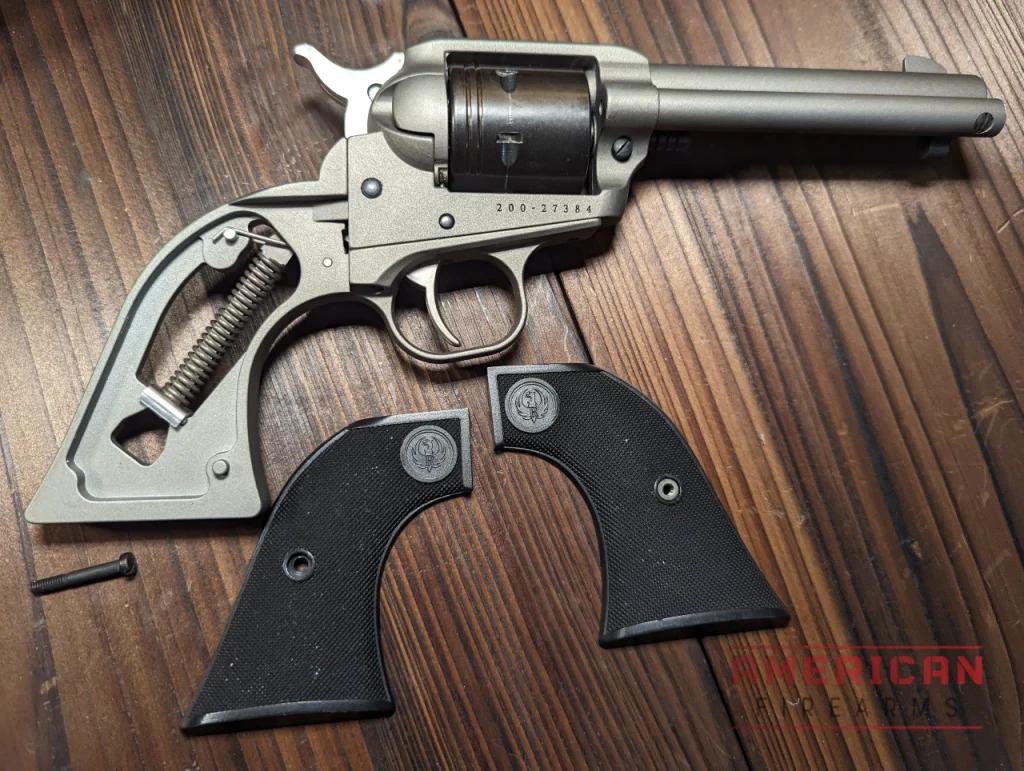
All things considered, the Ruger Wrangler really surprised me, and I go way into its performance in our hands-on review. Ruger has a reputation for a quality product that hits the bulls-eye of budget-friendliness, and the Wrangler lives up to that legacy — especially when you look at sales numbers.
Ruger’s brand, as of late, is all about approachable, value-minded recreational shooting products that work — and the Wrangler is a worthy addition to those ideals.
4. Best Concealed Carry Pick: Walther P22
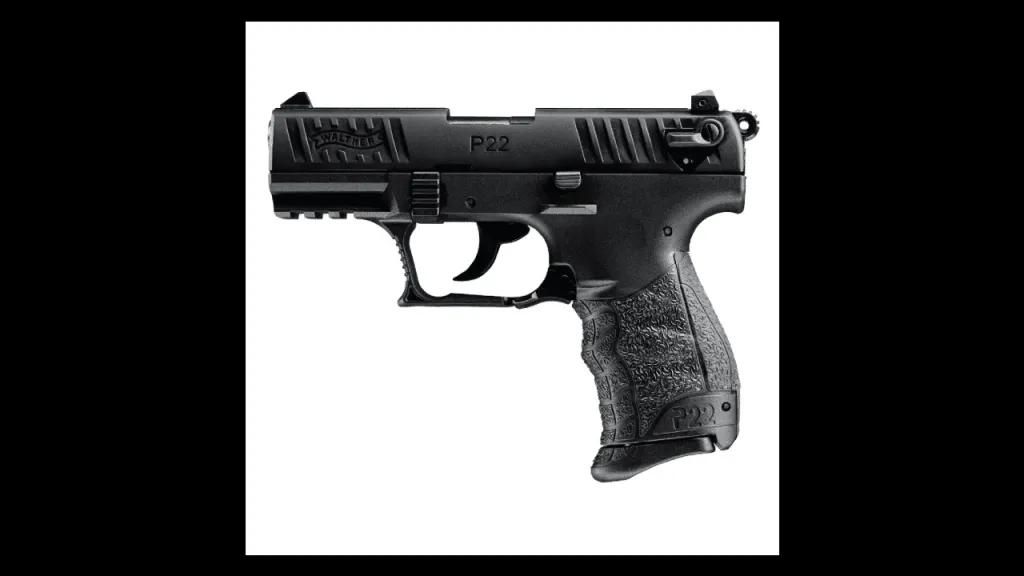
$349.99

29
AVERAGE
Performance Scores
Specifications:
- Weight: 17 oz
- Capacity: 10
- Length: 6.3”
- Barrel Length: 3.42”
- Height: 4.5″
- Action: Action: Double-Action, Single-Action Hammer Fired
The Good:
- Double or single-action trigger
- Very lightweight and small size
- Easy to hold thanks to the textured grip
- Fixed barrel for reduced vibration
- Excellent sights
The Bad:
- Small slide release button
- German mag release presents a learning curve
- Heavy trigger
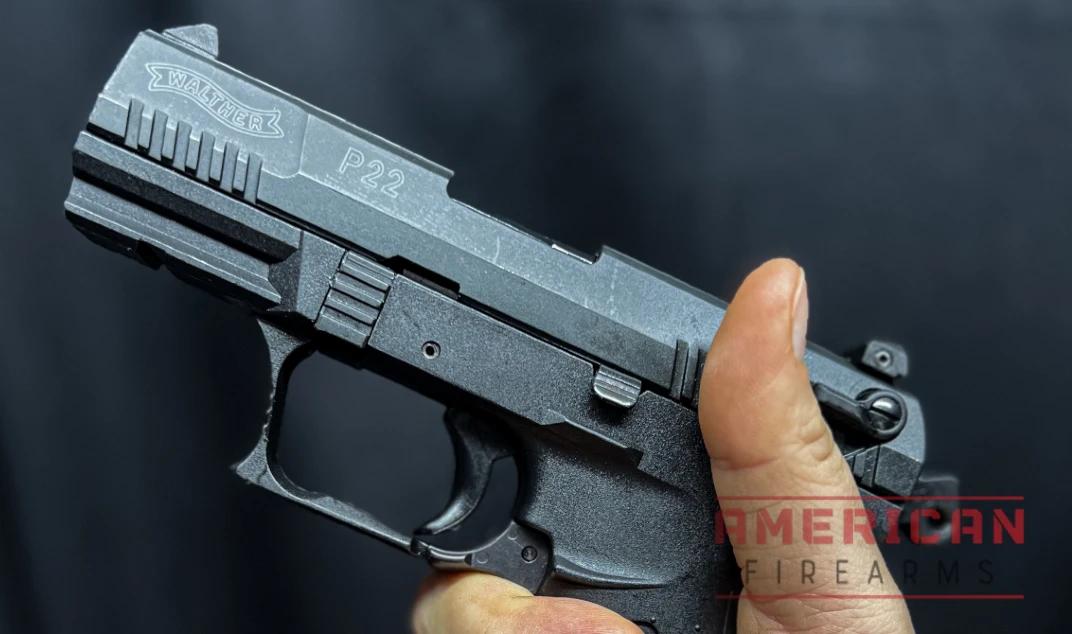
A .22LR concealed carry & self-defense powerhouse
Anyone looking for the quintessential concealed carry .22 LR handgun will want to check out the Walther P22.
It’s one of the best .22 pistols for concealed carry, if you’re comfortable carrying a rimfire pistol.
It is easy to argue that the Walther P22 kickstarted the modern rimfire pistol market when it debuted 20 years ago. Essentially a scaled-down P99 of James Bond fame, the P22 was polymer-framed with an accessory rail and included adjustable combat-style sights and aggressive texturing on the grip frame and slide, borrowing many features of the Walther PPQ pistols, but in the .22 caliber.
Further, whereas guns like the Ruger Standard had to visit a gunsmith to accept a suppressor, the P22 could be quickly made suppressor ready. On the downside, they are notoriously finicky regarding ammo, preferring hotter loads like CCI Mini Mags to cycle properly.
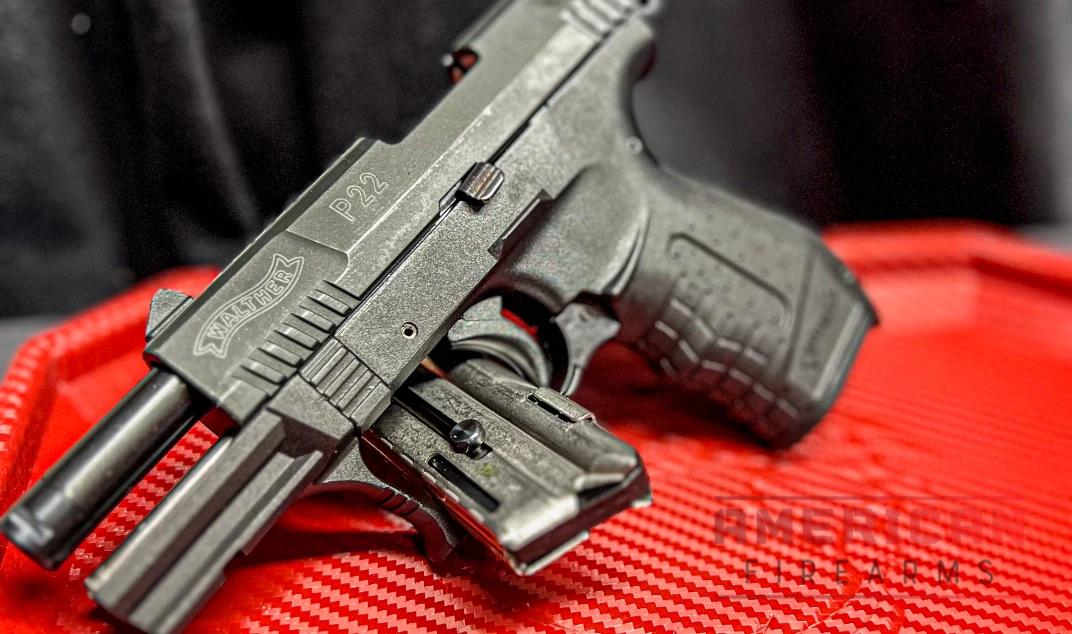
Walther pistols are great shooting guns, and the P22Q is both a ton of fun and makes a great trainer pistol. It is the size of many compact everyday carry handguns with great ergonomics for various hand sizes. The P22Q is chambered in .22LR, and the total weight empty is just one pound, so it practically disappears when carried.
This gun is outfitted with a thumb safety with safe and fire markings, making it approachable for new shooters. Plus, it comes in various models of colors, such as Angel Blue and FDE, with a threaded barrel and one model with a laser, giving you lots of options to find the right mix of features in one pistol.
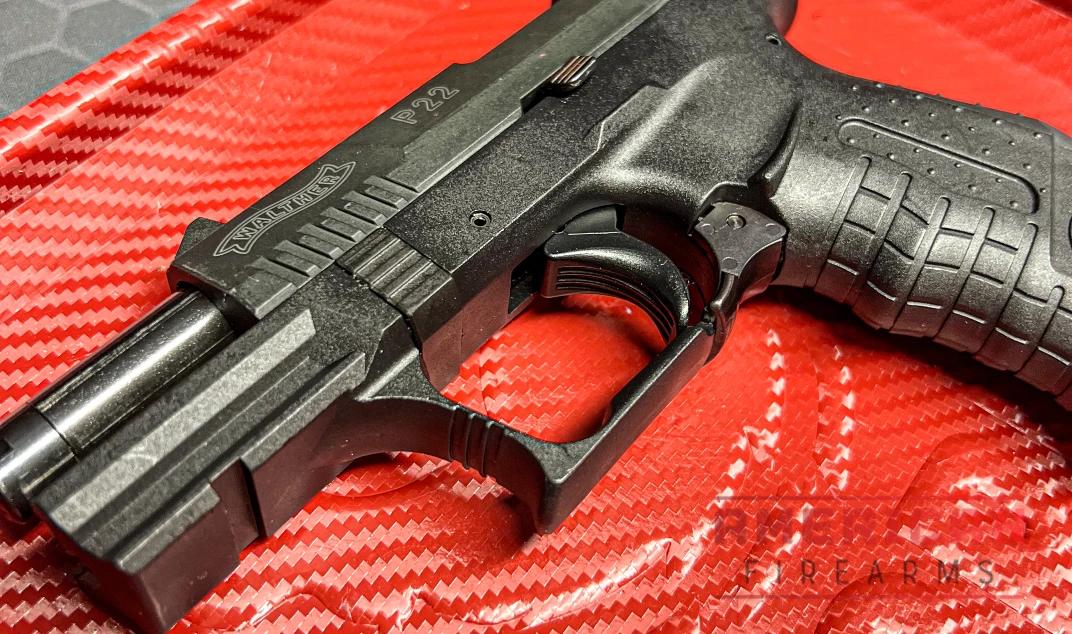
Something unique about this pistol is it does feature a paddle release instead of a magazine release button. It also has an ambi slide safety making it ambidextrous for right-handed and left-handed people to enjoy. With interchangeable backstraps that come with the gun, you can set up the gun to your grip and hand size.
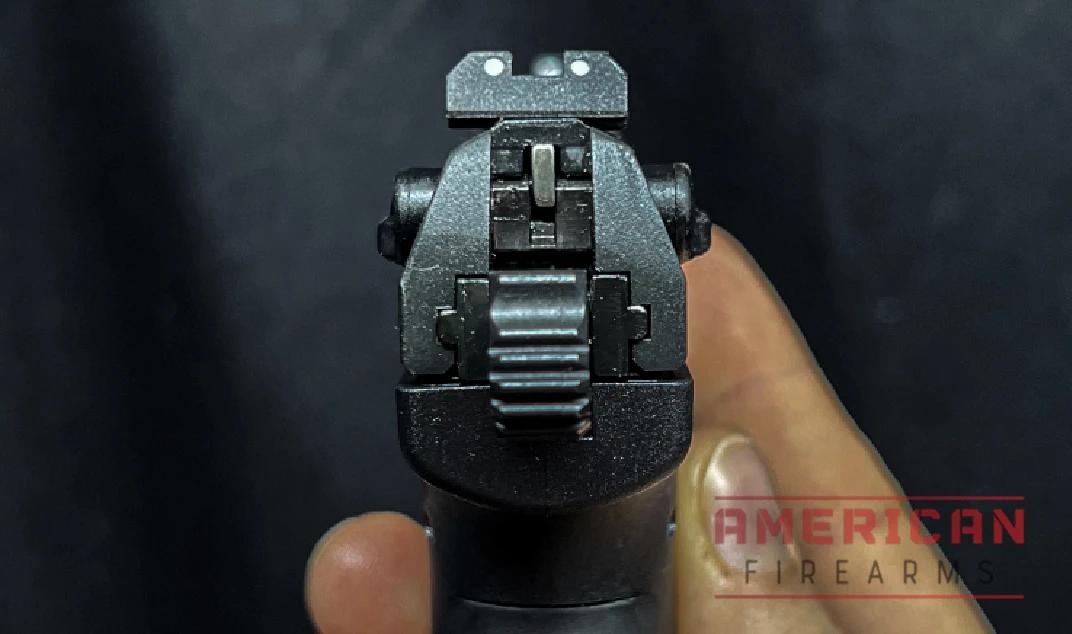
The rear sight is adjustable for windage and is dead-on accurate once sighted in. The recoil spring is captured, and the gun can operate in single-action or double-action mode.
There is an external hammer that can be manually cocked to fire. The double-action trigger is 12 pounds, while the single-action trigger pull is 4.8 pounds.
Finally, this .22LR gun has a 10-round capacity, making it ready for shooting Steel Challenge or Rimfire Challenge.
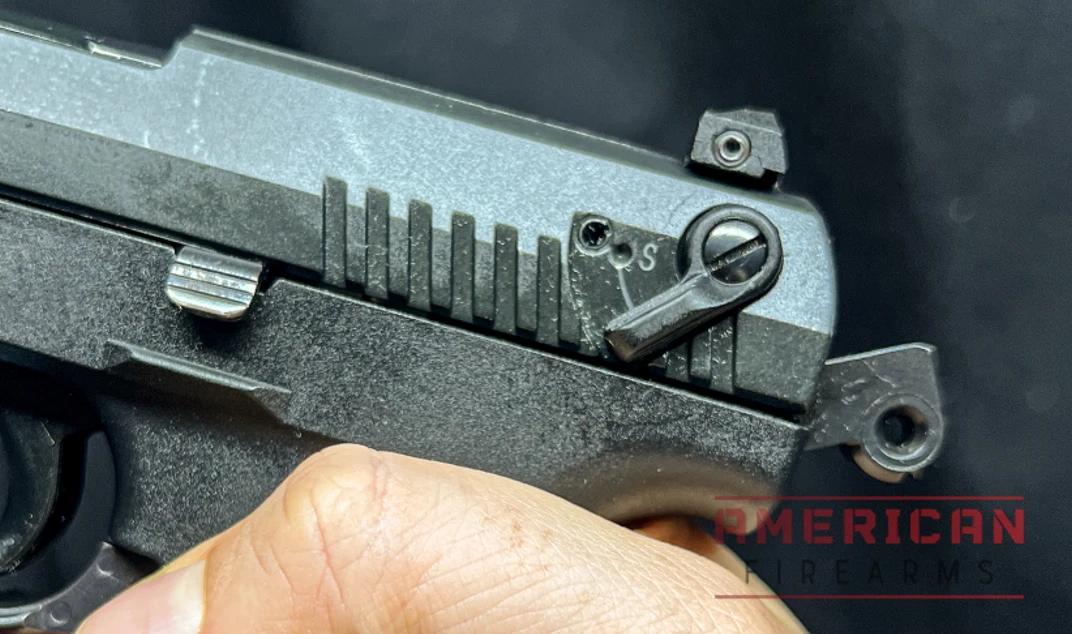

5. Tactical Pick: FN 502
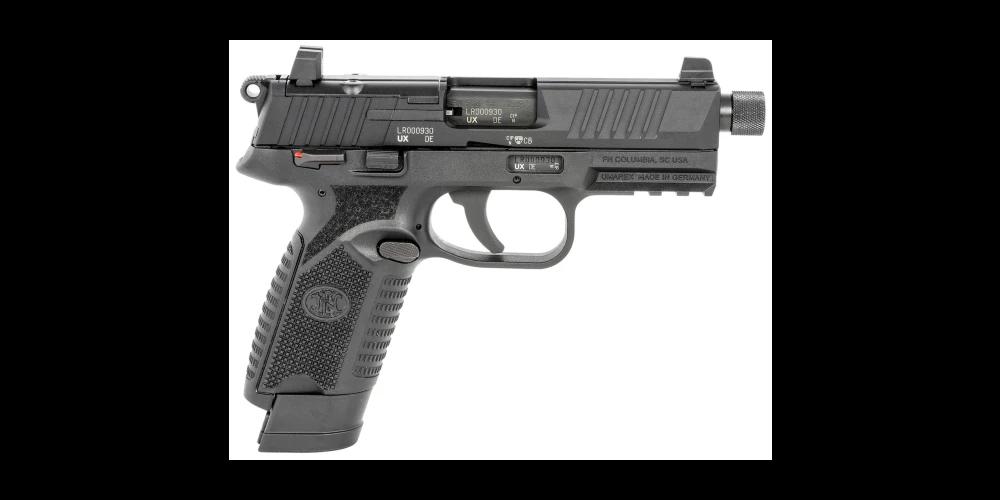
$522.99

33
AVERAGE
2025 Awards & Rankings
Performance Scores
Specifications:
- Caliber: .22 LR
- Barrel Length: 4.6 inches
- Overall Length: 7.6 inches
- Weight: 23.7 ounces, unloaded
- Magazine Capacity: 10 or 15 rounds
The Good:
- More tactical features than just about any .22 pistol on the market
- Both optics- and suppressor-ready.
The Bad:
- Only as dependable as the ammo that you feed it.
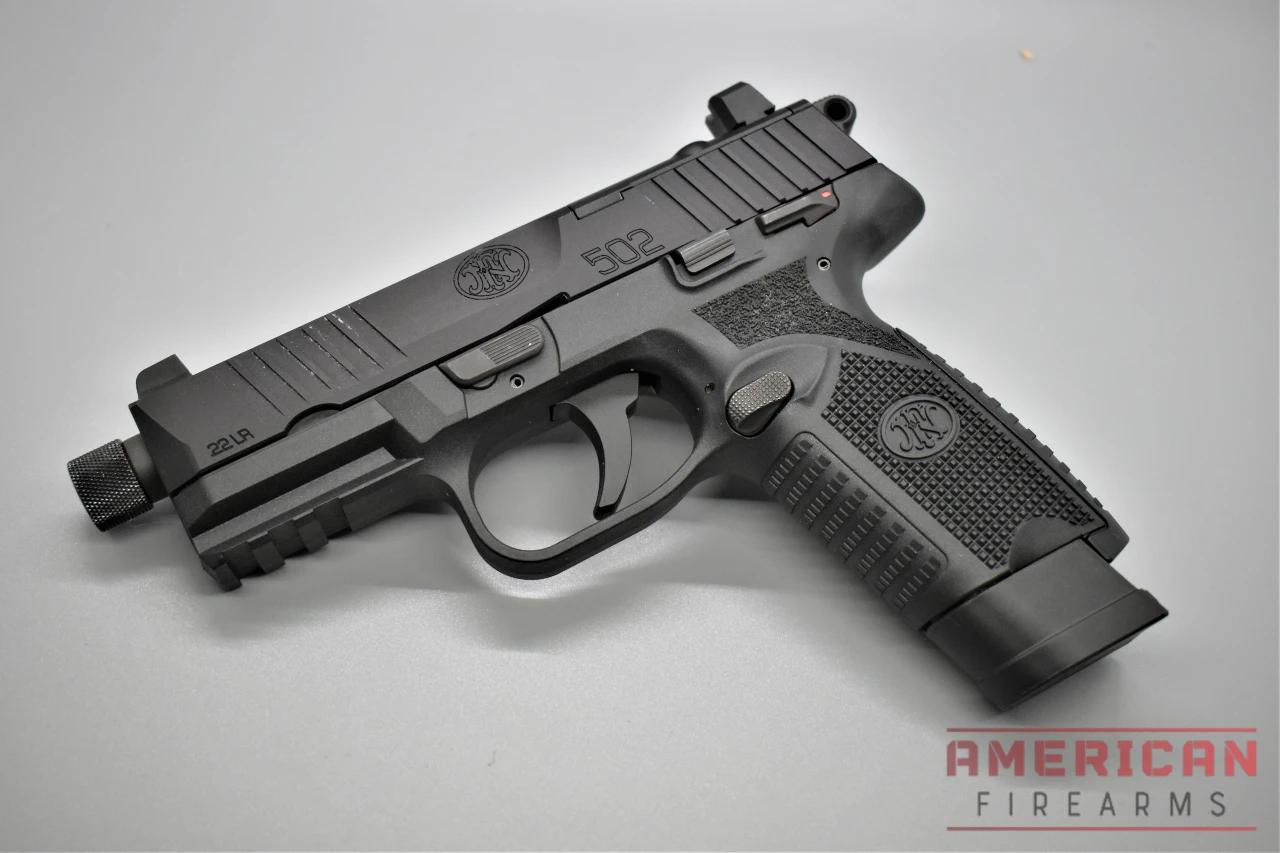
FN America’s hammer-fired rimfire .22 pistol has a lot to offer but, like most 22s, can be a little finicky.
While Fabrique Nationale’s Browning subsidiary has long offered a variety of .22 caliber pistols such as the Buck Mark, FN never really went all-in for a rimfire handgun. That is until the FN 502 was introduced in 2022.
Hammer-fired with a blowback action, the FN 502 is based on the company’s FN 509 series striker-fired 9mm pistols and has a similar styling if not the same internals. Offering a 4.6-inch threaded barrel, it is suppressor-ready right out of the box with a 1/2×28 TPI target-crowned muzzle. Plus, it ships with both a 10-round flush fit and a 15-round extended magazine.
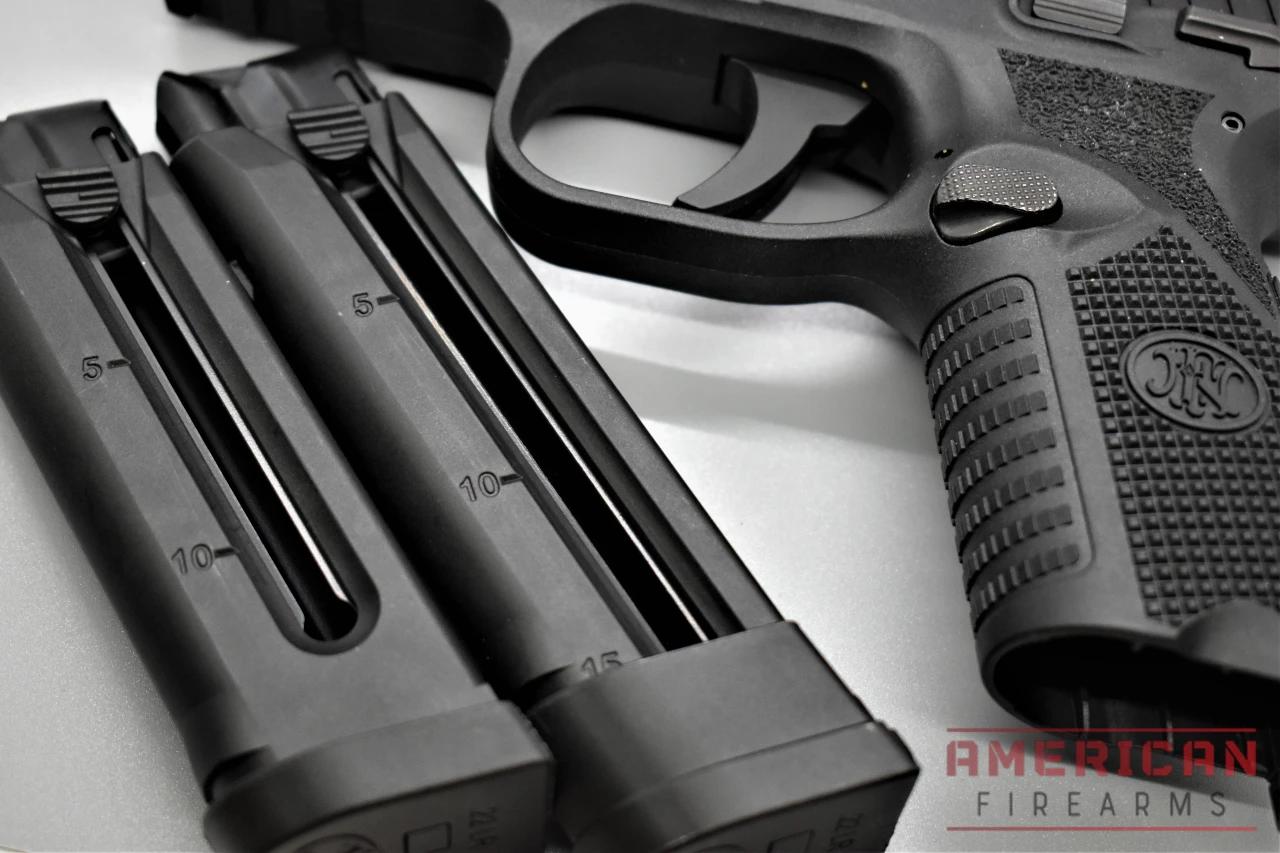
The FN 502 is fully ambidextrous with both left and right-side manual thumb safeties, magazine release, and slide locks. The magazines drop free easily.
The pistol also has full 360-degree stippling that is very aggressive and a natural grip angle, and I had no issues with one-handed shooting.
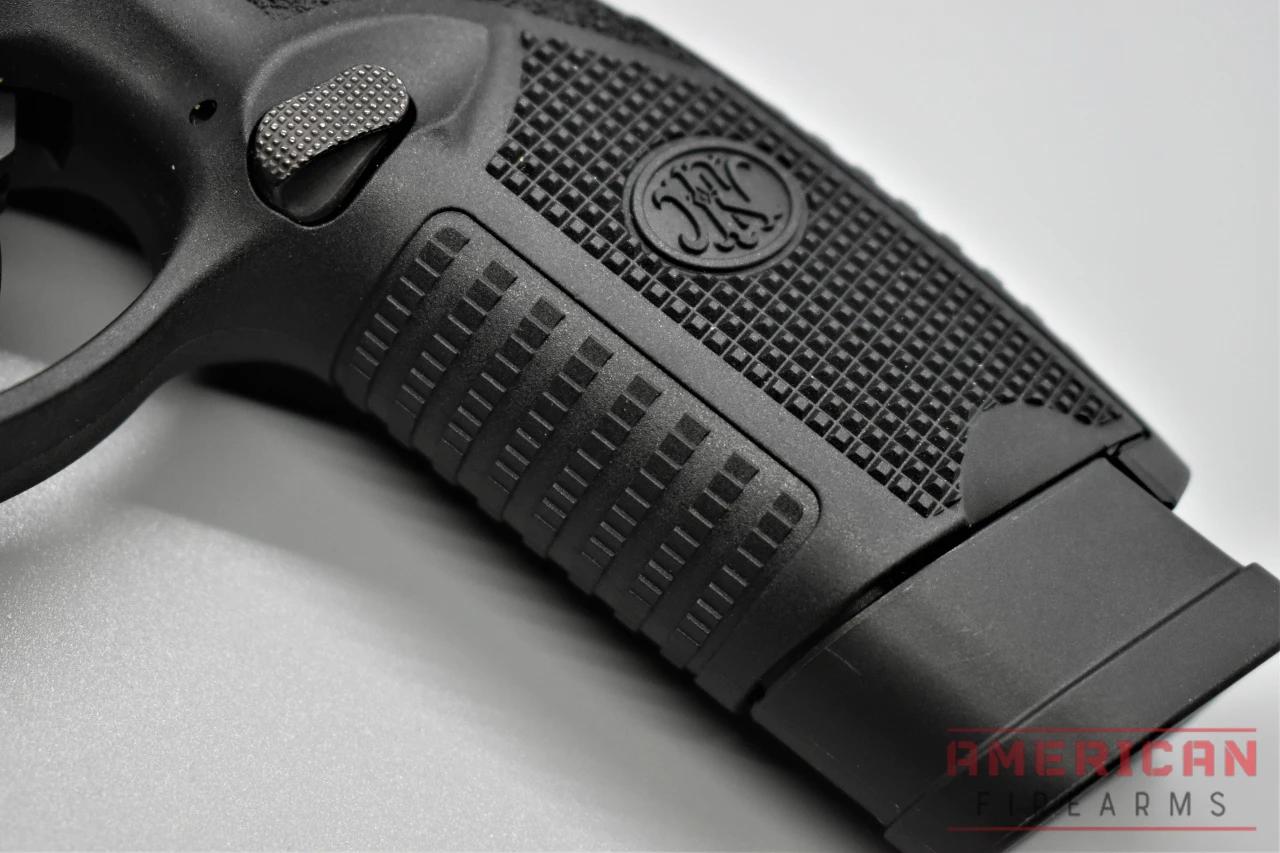
As befitting most semi-auto rimfire pistols, function varies across different ammunition loads. I found that better ammo such as that from CCI had fewer failures and jams than cheap bulk-pack ammo such as the Remington Golden Bullet.
The optics-ready slide is compatible with most micro red dots, so you can likely slap on your preferred red dot sight — and the tall suppressor-height sights easily co-witness.
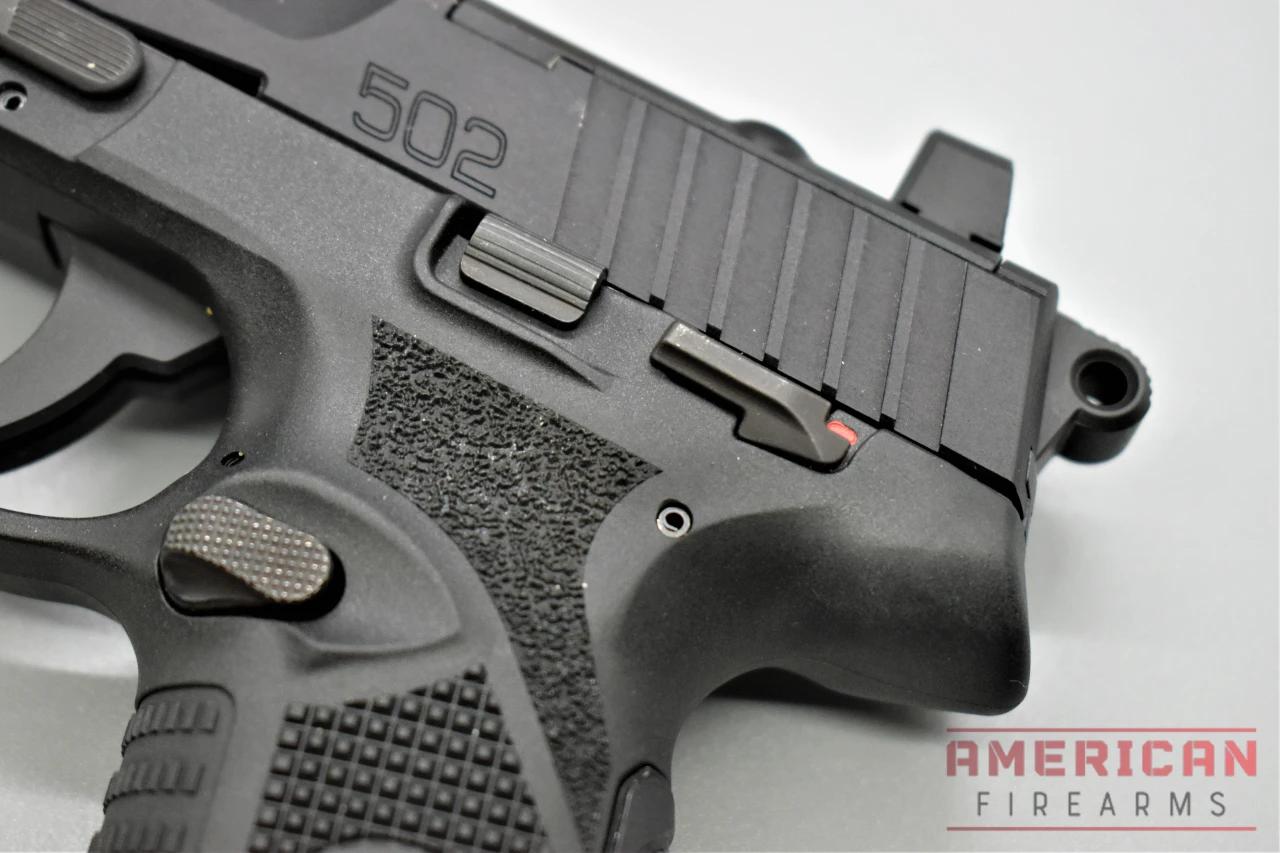
The FN 502 has a trigger that breaks cleanly at about 5 pounds with a longer than we’d like take up before hitting the wall.
For plinking, the FN 502 is good to go, and I found it able to zap tin cans and small plates all day at practical (10-15 yard) distances.
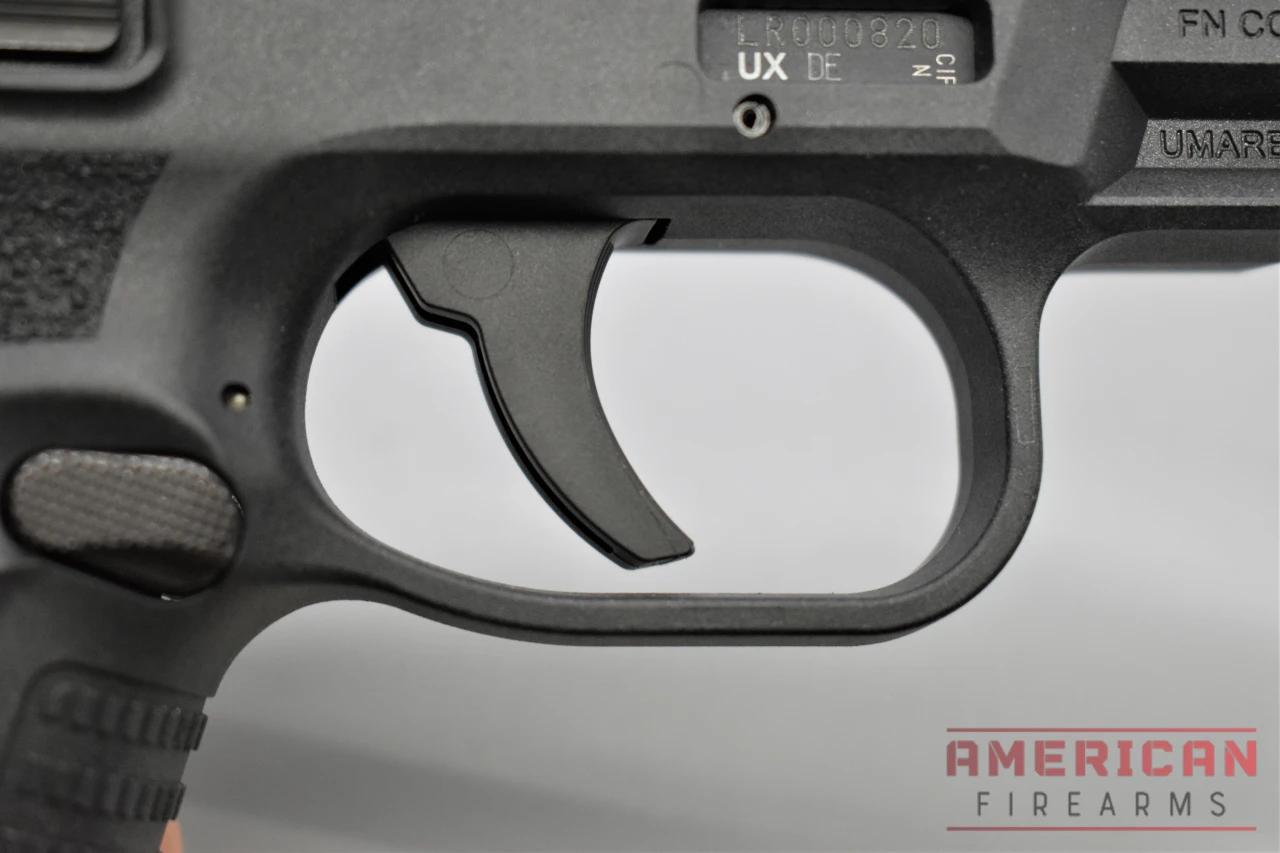
The 502 is new to the market so additional accessories outside of FN’s web store are limited. However, as the gun closely mimics the FN 509, it works with most standard-sized 509 holsters.
6. Beginner Pick: Browning Buck Mark

$555.99

51
EXCEPTIONAL
2025 Awards & Rankings
Performance Scores
Specifications:
- Weight: 34 oz
- Capacity: 10
- Length: 9.5”
- Barrel Length: 5.5”
- Action: Blowback Action, Single-Action Trigger
The Good:
- Comfortable grip
- Trigger pull is very smooth and crisp
- Excellent adjustable sights
- Made with lightweight/durable aluminum alloy
- Matte black finish looks good and resists rust
The Bad:
- Swapping out parts is tricky without a workbench
- Heavier than other options
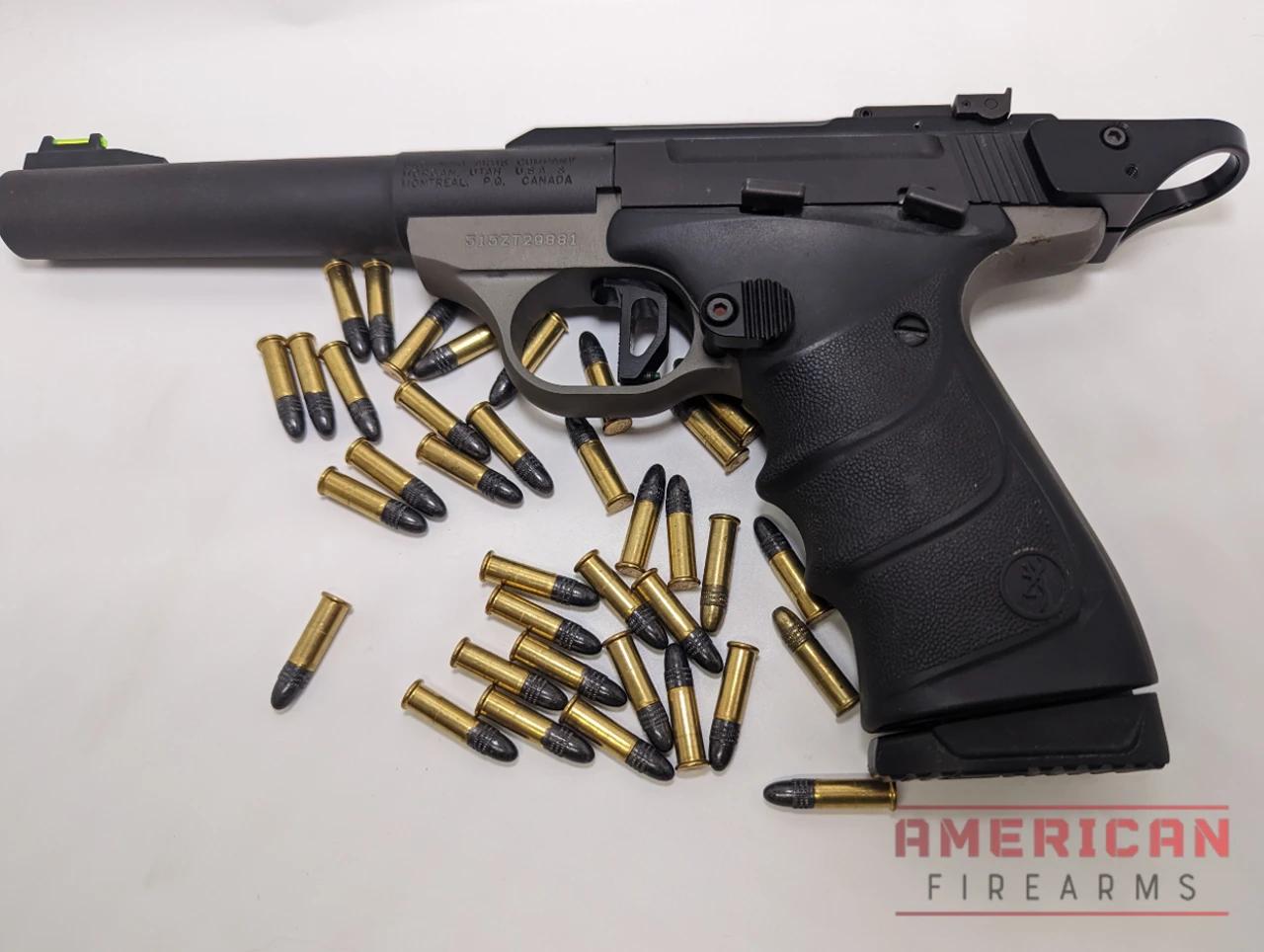
Introduced in 1985, the Browning Buck Mark replaced the company’s long-running and popular Challenger series pistols, which used a tapered barrel, with a model that incorporated a lightweight alloy frame, slab-sided barrel, and Pro-Target adjustable grips.
First debuted with a 5.5-inch barrel and wood grips, a better fit these days is the more standard 4-inch model with ambidextrous URX grips. It is tough to go wrong with this accurate blowback.
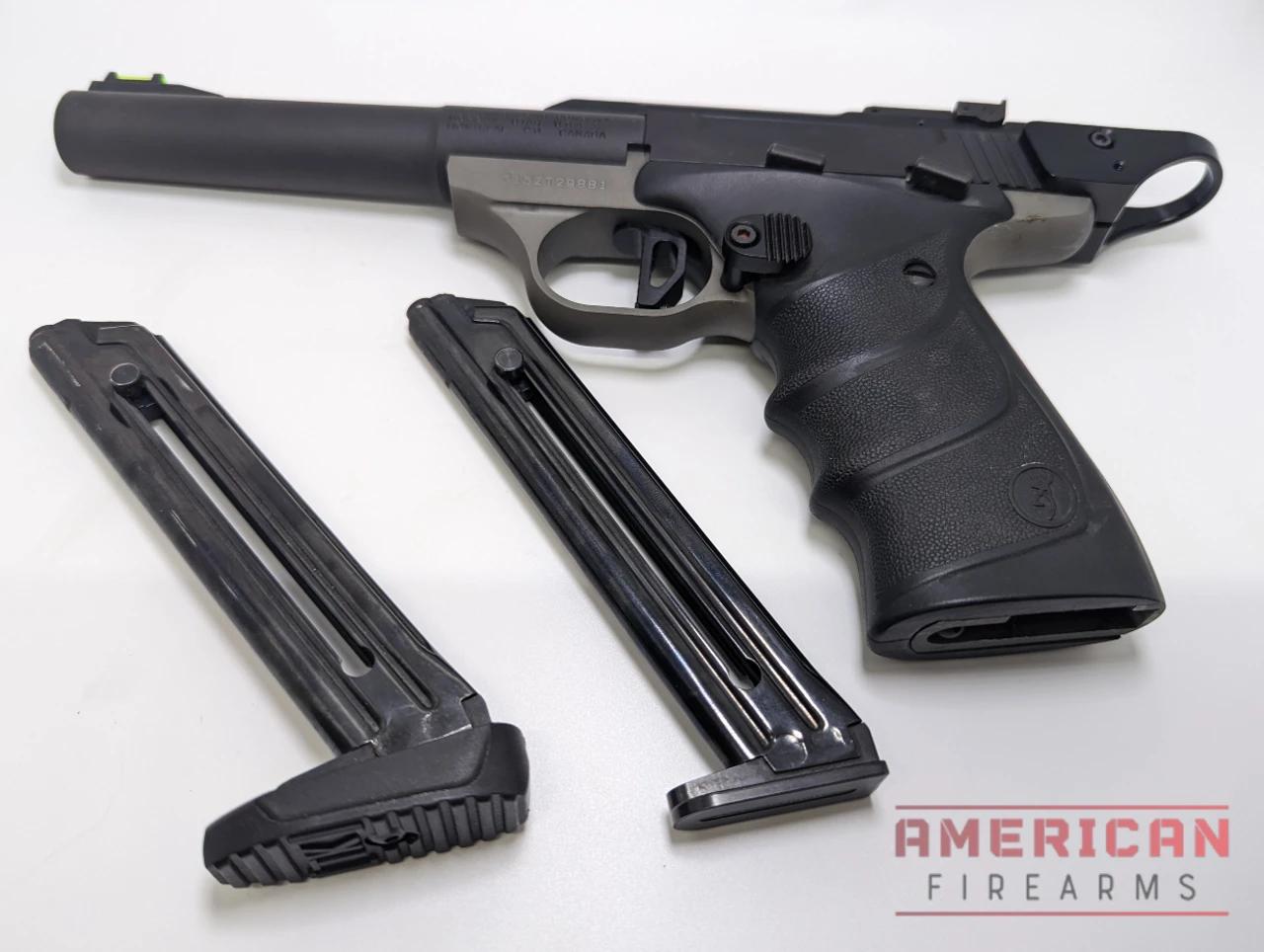
Perfect for learning how to shoot
The gun is a perfect choice if you want to teach someone how to use a pistol but they don’t have much experience with firearms in general.
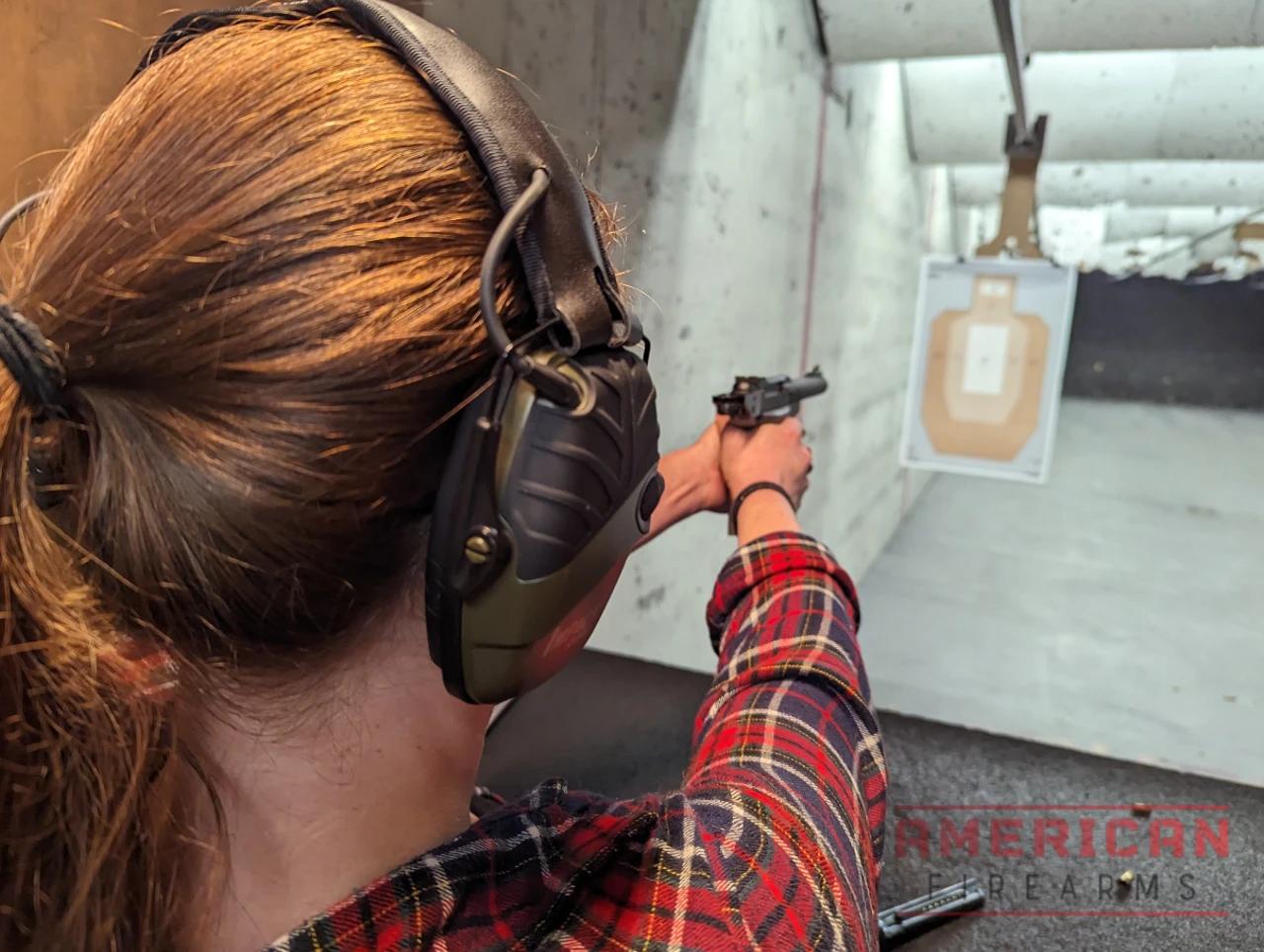
Looks great & easy to use
While not a functional note – the weapon certainly looks great. The grip is comfortable, ergonomic, and balanced to help maximize target acquisition and accuracy at a distance.
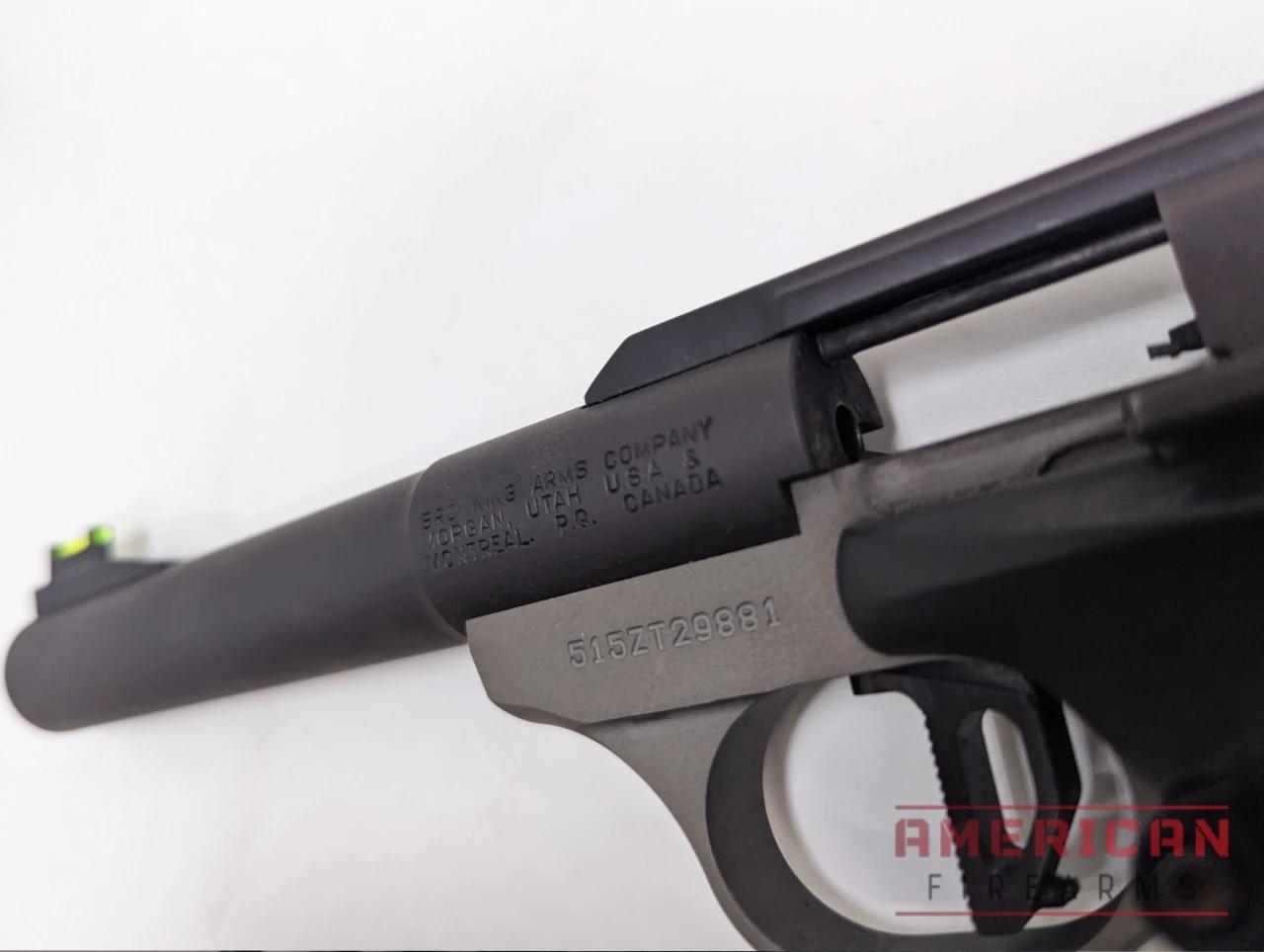
The single-action trigger pull is particularly crisp and resets easily, allowing you to fire multiple follow-on shots quickly and stay on target.
We also really like the front and rear targeting sights, which, when paired with the balanced grip, make learning how to use a pistol a bit easier and a lot of fun.

In the end, it’s affordable and easy to use, making it a great starter pistol or just a reliable backup sidearm if your larger caliber pistol is out of commission. We have a full Buck Mark review if you want more on this fantastic Luger-inspired pistol.
7. Also Great: Sig Sauer P322
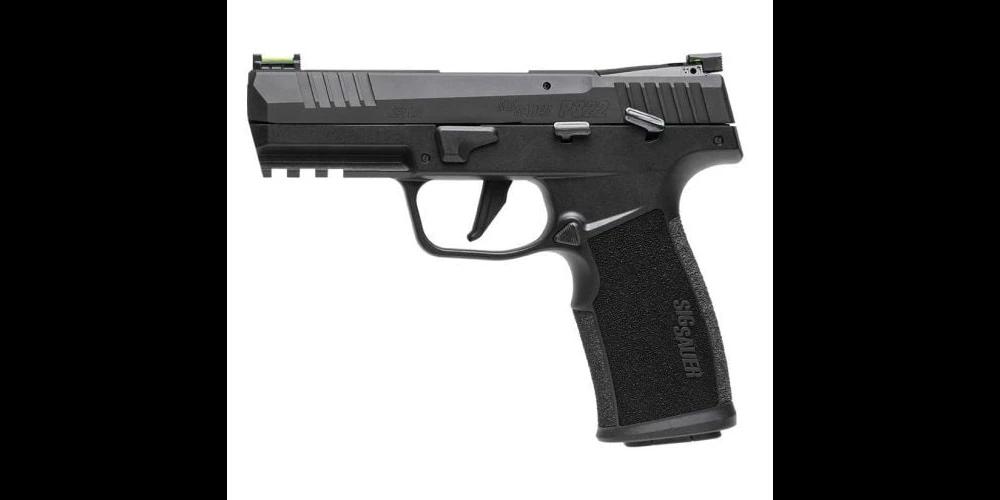
$427.99

32
AVERAGE
2025 Awards & Rankings
Performance Scores
Specifications:
- Caliber: .22 LR
- Barrel Length: 4 inches
- Overall Length: 7 inches
- Weight: 17 ounces, unloaded
- Magazine Capacity: 20+1 standard, 10+1 restricted
The Good:
- More features, capacity, and reliability than most competing pistols
The Bad:
- There is limited aftermarket support
- Better than most when it comes to reliability but still handicapped by its ammo quality
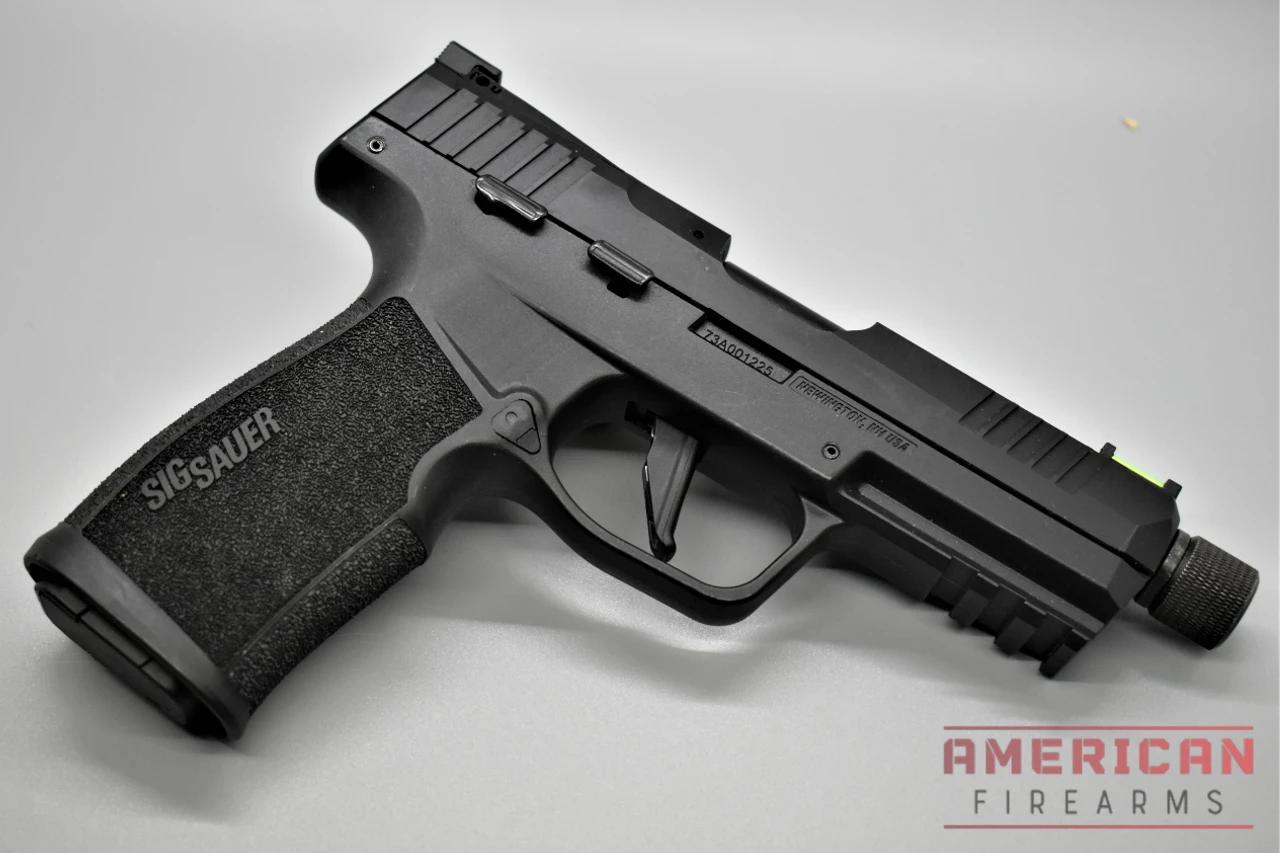
SIG’s first rimfire pistol since the failed Mosquito, the P322 is one of the most exciting .22LR handguns to come about in the past 25 years.
Introduced on 3/22/22 (get it?), the Sig Sauer P322 was the company’s first rimfire pistol since the disastrous Mosquito jam-a-matic was discontinued a decade prior. While the Mosquito had been built for SIG by other folks, the P322 was designed in-house taking cues from the successful P320 and P365 programs.
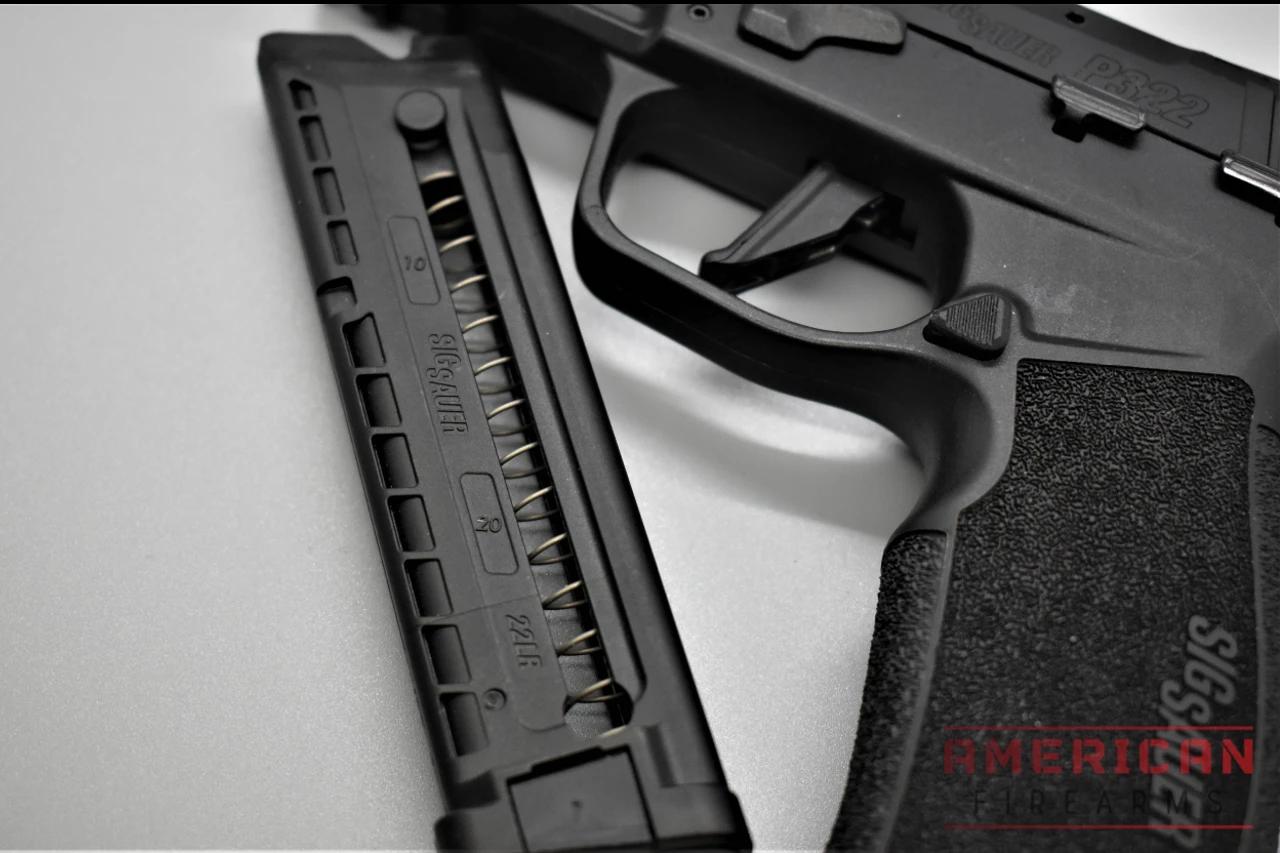
Running 20-round flush-fitting magazines in a world where most pistol makers only offer their .22s with a 10-round stick, the P322 is suppressor-ready with a 1/2x28TPI adapter lug.
It is also optics-ready via a removable rear sight plate so you can easily direct a Shield RMS/SMS footprint red dot without the use of annoying adapter plates. Plus, it has an accessory rail and extended magwell.
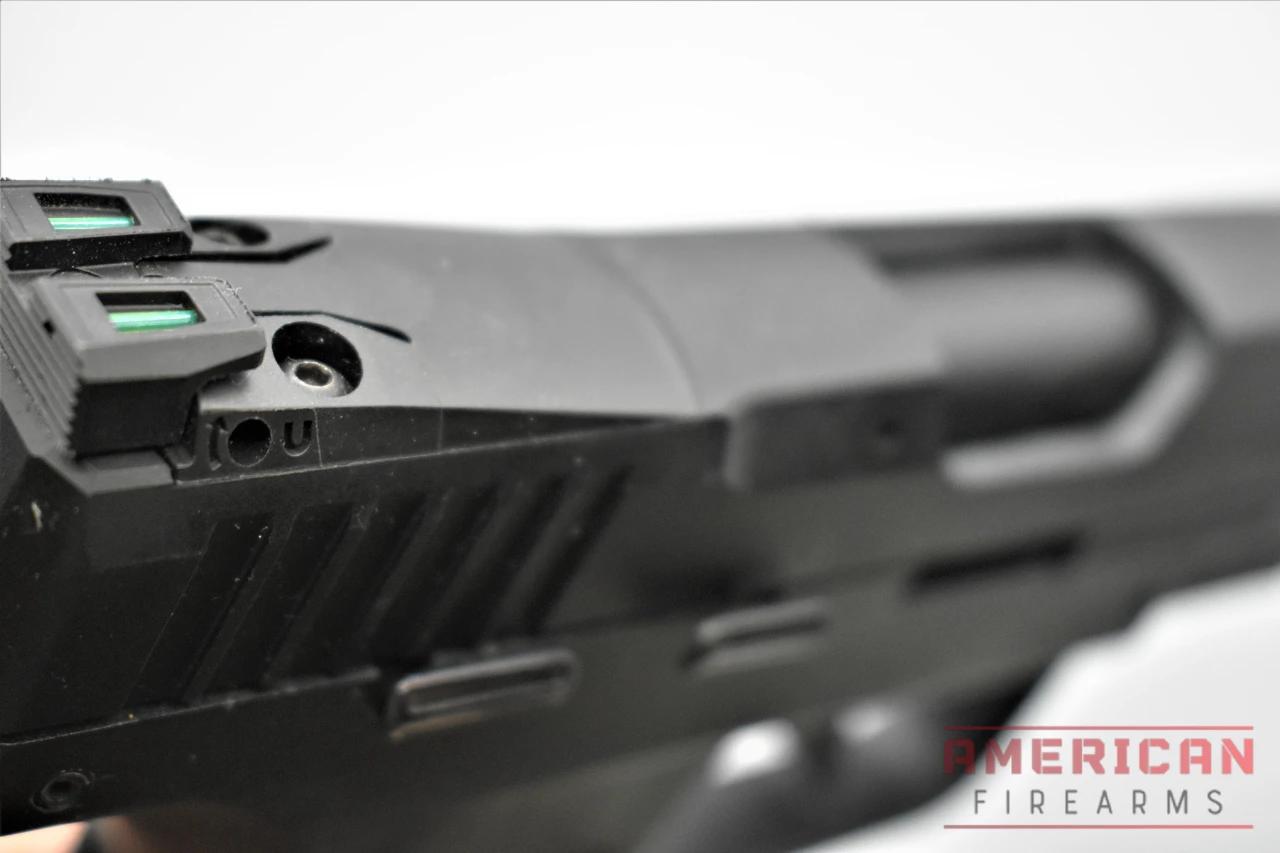
The P322 has an ambidextrous slide catch and manual safety levers that are oversized and easy to use.
The push button magazine release button comes installed on the left side of the frame for right-handed shooters but is swappable to the other side. Throughout my range day testing the magazines dropped free easily.
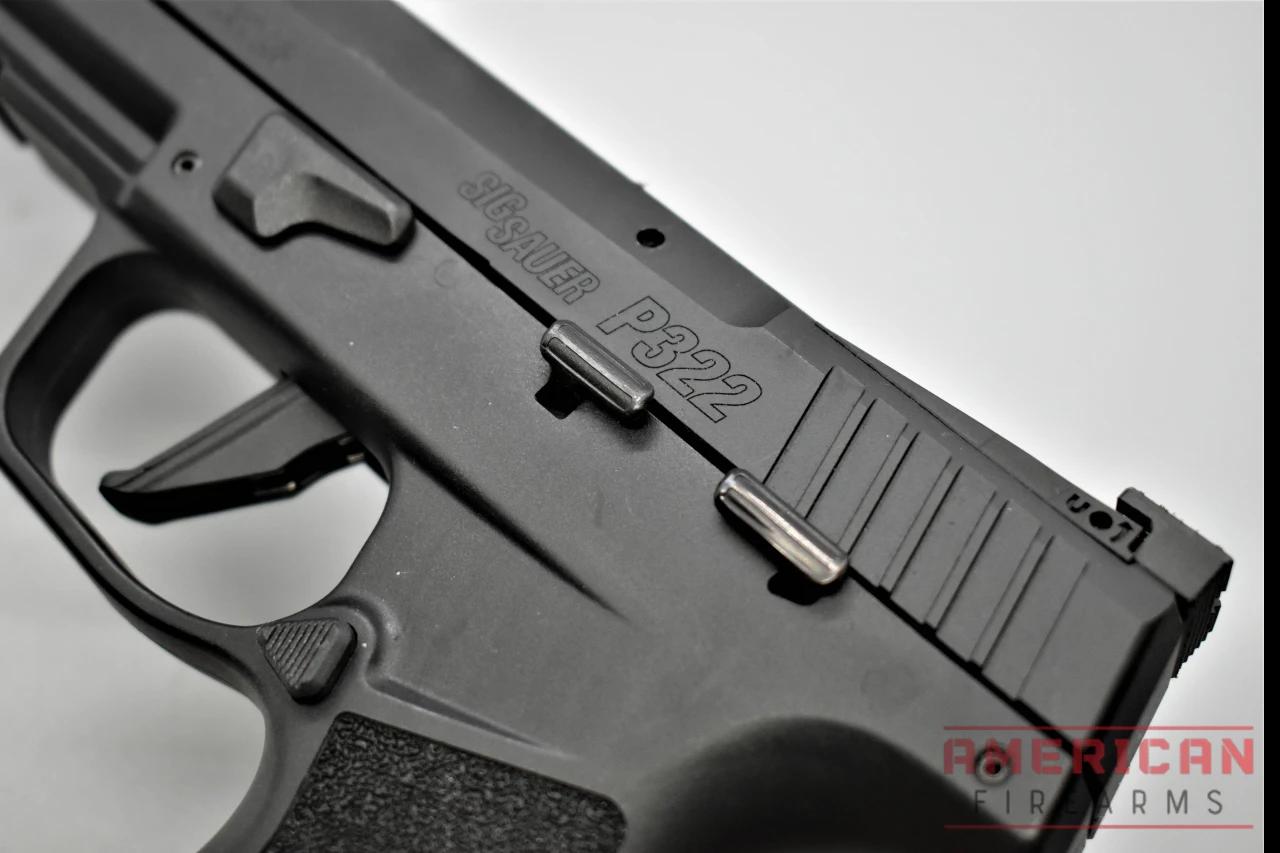
SIG repeated most of the same layout of the well-liked .380/9mm P365 micro compact carry gun with the P322. This means the guns feel and (kind of) look alike, with a high cut under the trigger guard and a contoured grip module that feels better molded to the palm than lots of competitors. The texture is 360-degree and, while effective, is not overly aggressive.
It is tough to make a dependable autoloading rimfire pistol due to the wildly varying nature and quality of .22 LR ammo. However, during a 5,000-round extended test, I found the P322 to be one of the most dependable on the market, chewing through just about everything, even bulk pack cheap-o stuff, with typically just seeing a stoppage about every 100-150 rounds.
The secret to keeping it running is in how you load the magazine. As the rims can suffer rim lock and thus create a jam, be sure to use the on-magazine loading tool to depress the spring as you load, then be sure to push the case all the way to the back of the mag body when you insert it.
Most people who complain about this gun do so because they are having jams on incorrectly loaded mags. Also, keep it clean every 500 rounds to avoid excessive barrel leading problems.
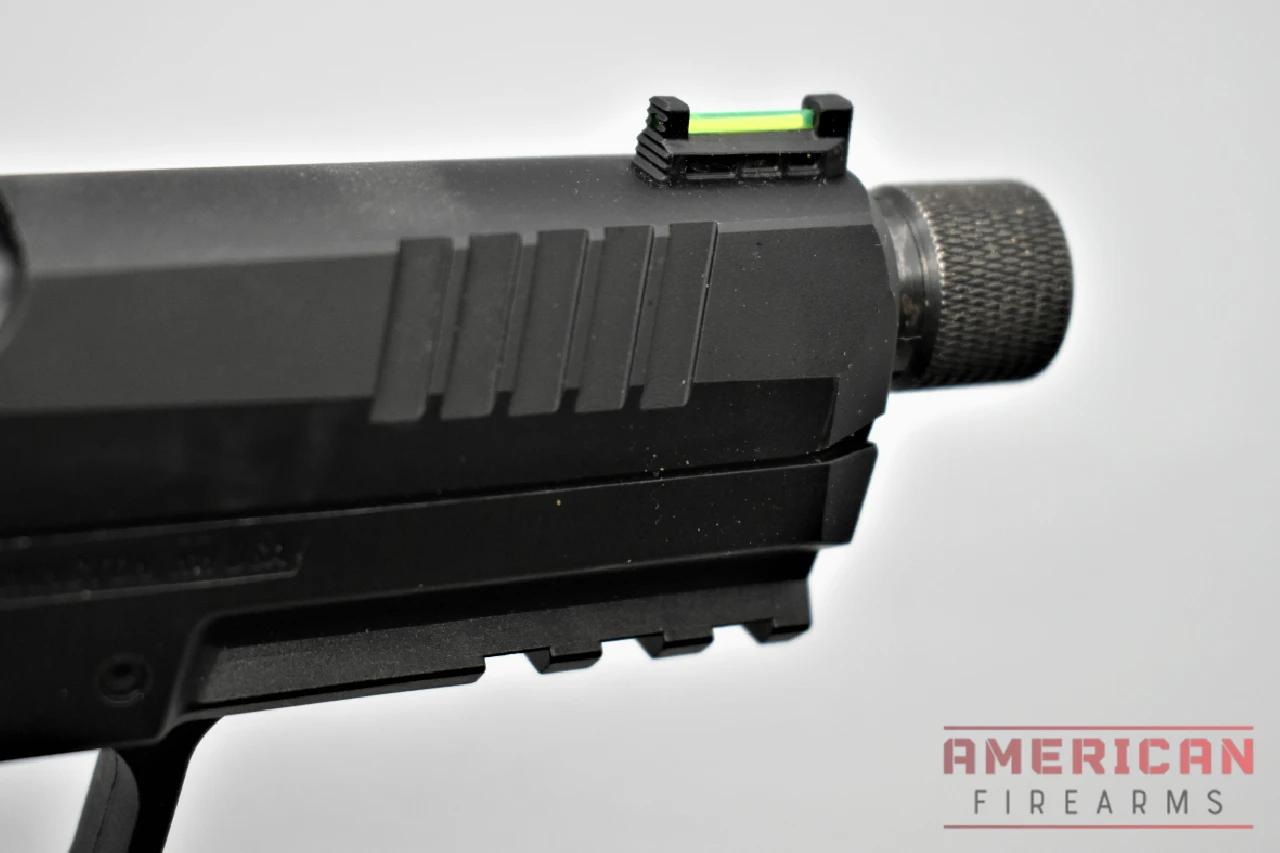
The P322 ships with fiber optic front and rear sights that include two assorted colors (green and red) strips that can be swapped out by the user without special tools.
The sights are excellent, if plastic, and easy to see in both low and bright light. The only bad thing is that the rear sight must be removed if mounting a red dot.
The flat-faced trigger, while made of injection molded plastic, has a good feel to it and I found it to break at a pleasing 3-pounds after pulling to a quick wall. It also has interchangeable trigger shoes, shipping with both flat and curved variants. I do not hate it and wish other companies would do the same.
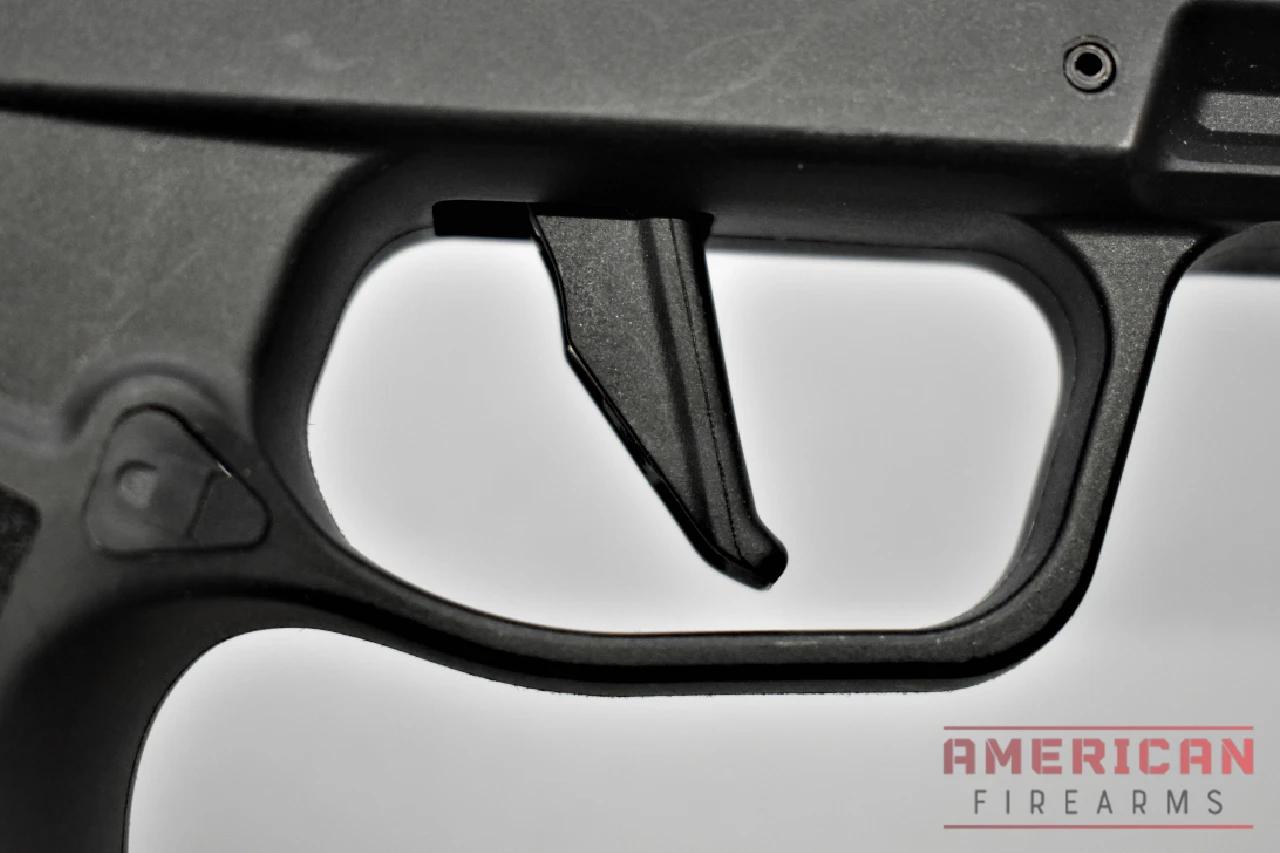
While not a bullseye target pistol and unlikely to be seen at the Olympics any time soon, the P322 performs well as a plinker, being able to hit anything realistic that you put in front of it out to 25 yards.
A very new gun to the market, there are few aftermarket accessories around for the P322, but you can expect that to change. However, reports are that a lot of generic P365-ish holsters work for the pistol.
8. Competition Pick: Taurus TX22 Competition
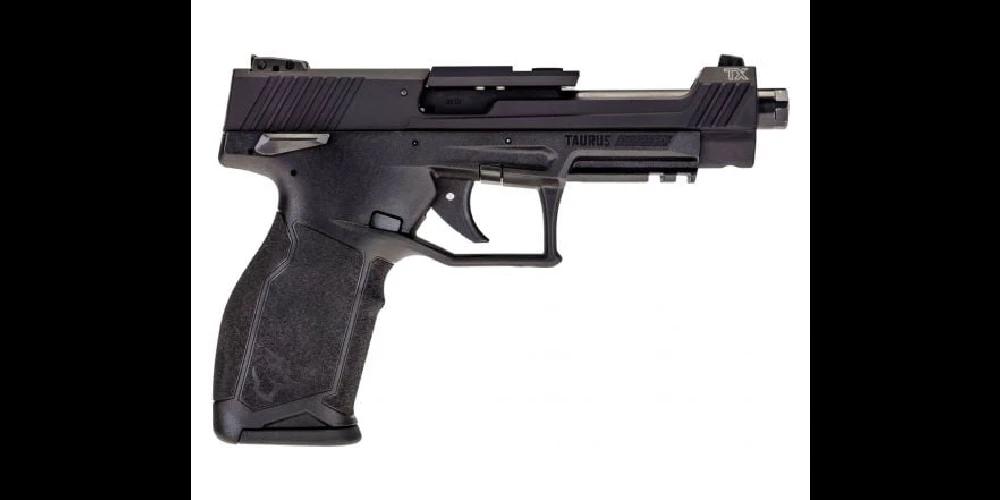
$493.99

25
AVERAGE
Performance Scores
Specifications:
- Width: 1.25”
- Length: 8.15”
- Barrel Length: 5.25”
- Height: 5.44”
- Weight: 23.2 oz.
- Capacity: 16+1
The Good:
- Surprisingly reliable: Fires and ejects the tricky rimfire round reliably
- Ample magazine capacity: Includes three 16-round magazines with pull-down tabs for easier loading
- Factory-installed optics base plate: also includes adapter plates provided for other optic footprints
The Bad:
- Grip could use more texture
- Expensive for a Taurus rimfire
- Reports of quality control issues, especially with the polymer magazines
For decades, Taurus made a series of .22LR revolvers that were well-received. Following up with the PT22, a compact semi-auto mouse gun, the Brazilian company moved to introduce a full-sized TX22 autoloader in 2019 and expanded that into the TX22 Competition to take the rimfire pistol in a more competitive direction.
With intuitive ergonomics that include memory pads and a high-cut grip, the Taurus also brings adjustable sights, an accessory rail, and a threaded barrel and compensator along for the ride.
Best of all, it has a 16+1 round magazine and has received almost universally positive reviews since its debut.
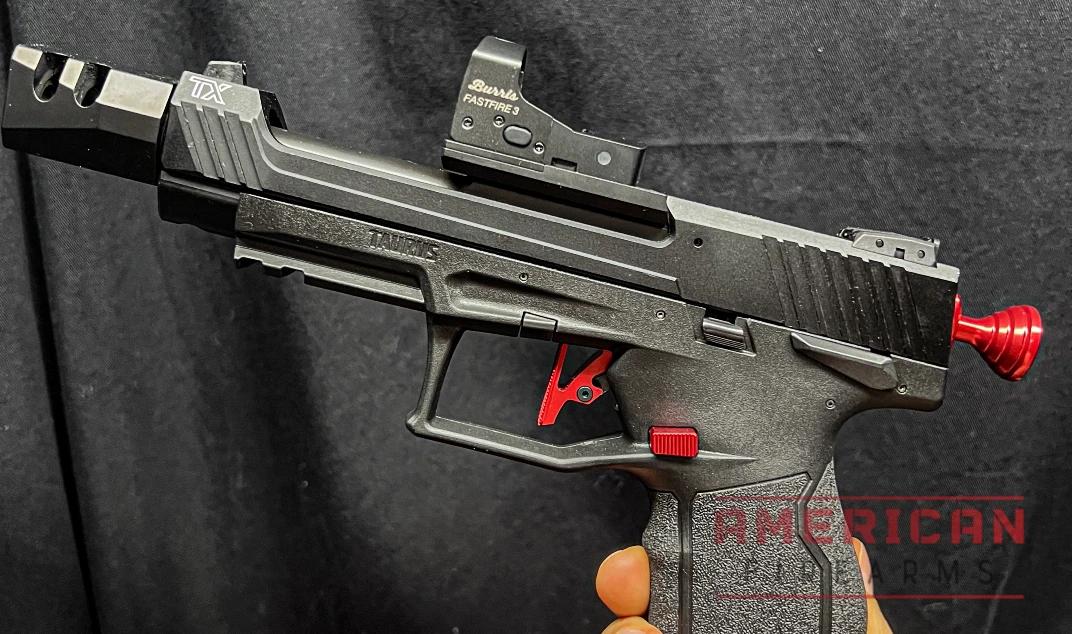
The Taurus TX22 is the perfect fun range gun to plink around with and is the best value 22LR pistol for competition shooting. I have been shooting this gun for about a year and have shot it in Steel Challenge, and it’s been a machine to run. I’ve shot about 6,000 rounds through it and haven’t had a single hiccup with the gun, an astonishing feat for a rimfire pistol.
The price point of these pistols is also unbelievable.
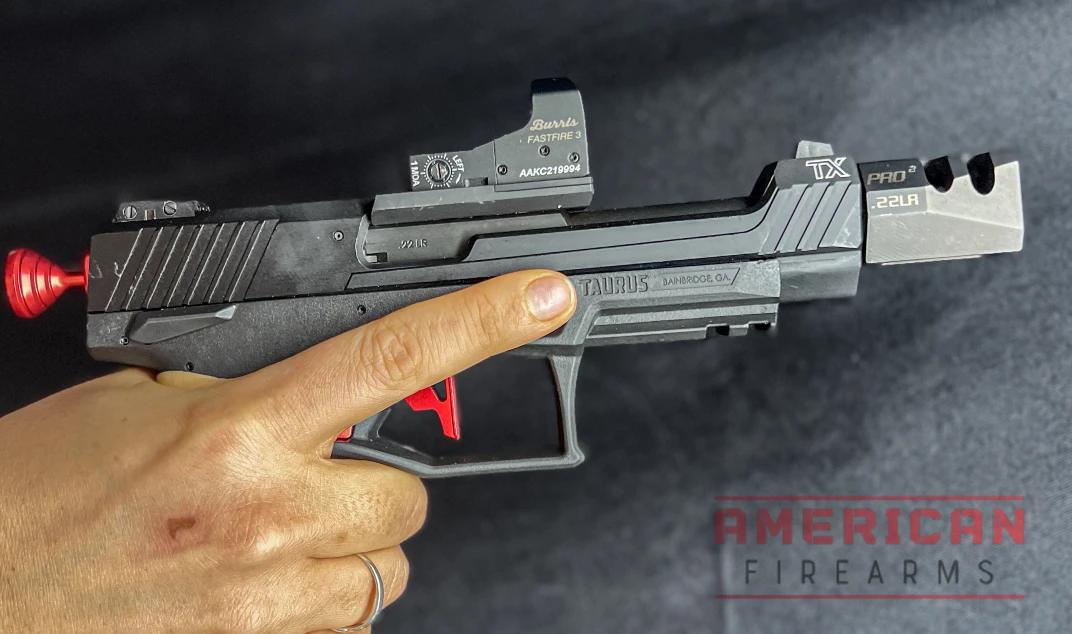
While I bought a stock Taurus TX22, I upgraded the gun with the Tandemkross trigger, charging handle, compensator, and magazine base pad extensions. These upgrades are affordable and make the TX22 smoking fast for a race gun.
TandemKross Game Changer PRO squared compensator adds weight for better gun balance and accuracy. It also redirects propellant gases to counter recoil and unwanted muzzle rise. The compensator vents gases at dual 45° angles for better visibility and control and to keep your red dot lens clear of any gases or debris.
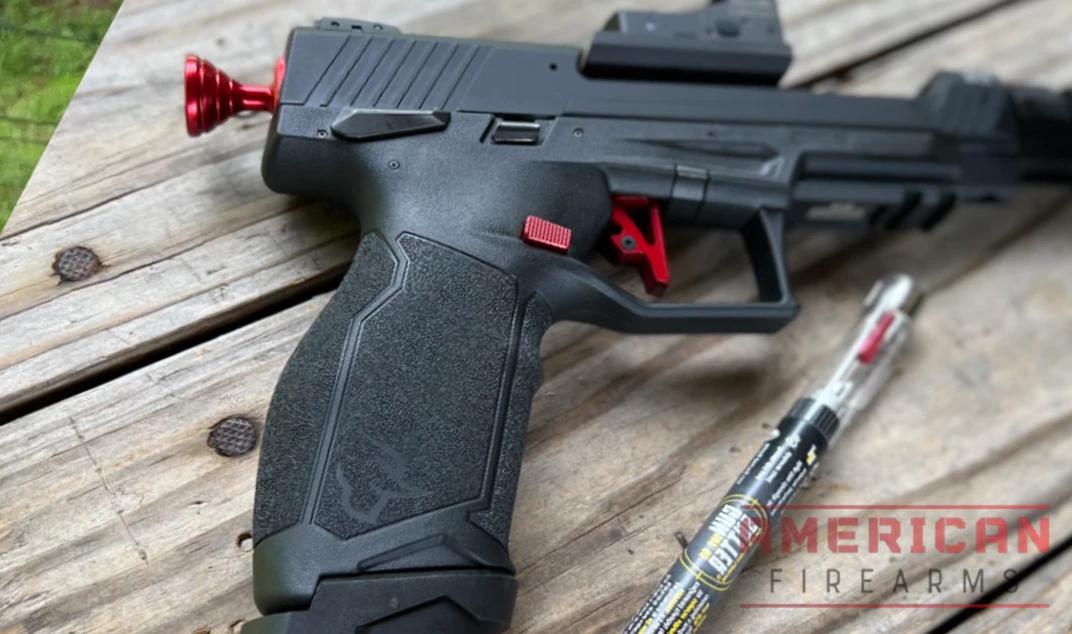
The magazine base pad extensions add +5 rounds to a 16-round magazine. The feed ramp in this gun features a high polish to improve feeding and reliability, which I’ve seen firsthand how reliable this gun is. It has an extremely comfortable grip for all hand sizes, and I’ve seen women and junior shooters compete using this pistol nationwide.
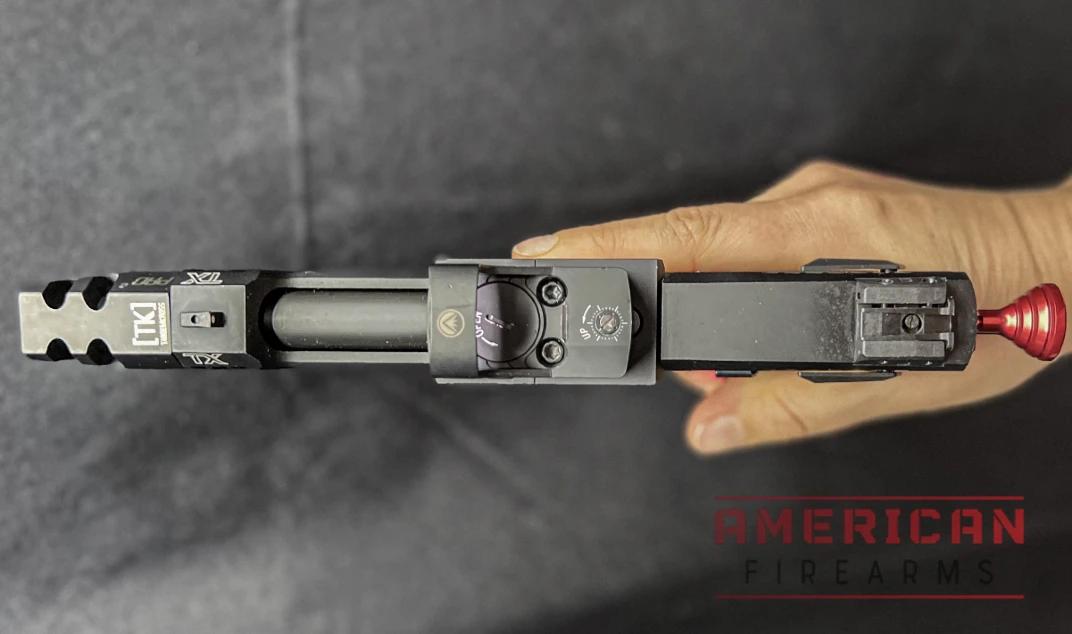
It’s a great gun that’s easy on the wallet, coming in less than many other options. For an optics-ready version, check out the new TX22 Competition which adds a threaded bull barrel and skeletonized, high-grade aluminum slide for an even lighter package.

How to Pick a .22 LR Pistol

No two .22 pistols are alike, and you’ll have the option of both pistols and revolvers. So be mindful of the following features as you research, and you’ll be more likely to grab a great gun that you’ll enjoy for a long time to come.
Know Your Purpose First
Before you fall in love with that shiny new rimfire sitting in the gun store case, ask yourself one crucial question: What the hell do you actually plan to do with this thing?
Training and Practice
If you’re looking for a training gun to complement your carry piece or duty weapon, prioritize ergonomics that match your centerfire pistol. The Glock 44, despite its quirks, fits in G19 holsters and replicates the manual of arms. Similarly, if you’re a 1911 shooter, consider a .22LR conversion kit or dedicated rimfire 1911-style pistol.
Training guns should emphasize reliability over raw accuracy. You need something that goes bang every time you pull the trigger, not something that shoots ragged holes but jams every third magazine.
Target Shooting and Competition
Competition shooters need different priorities: accuracy, ergonomics, and modularity top the list. Look for guns with adjustable triggers, optics-ready slides, and robust aftermarket support. The Browning Buck Mark and Ruger Mark IV series dominate here for good reason—they’re inherently accurate platforms with decades of aftermarket development.
Steel Challenge and rimfire competition divisions have specific rules, so check regulations before buying. Some matches restrict magazine capacity or require certain safety features.
Plinking and Fun
If you just want to blast tin cans and have a good time, prioritize capacity, ease of use, and value. The Taurus TX22 with its 16-round magazines or the KelTec CP33 with its ridiculous 33-round capacity will keep you shooting longer between reloads.
Fun guns should be, well, fun. Don’t overthink it—if it makes you smile when you pick it up, that’s half the battle.
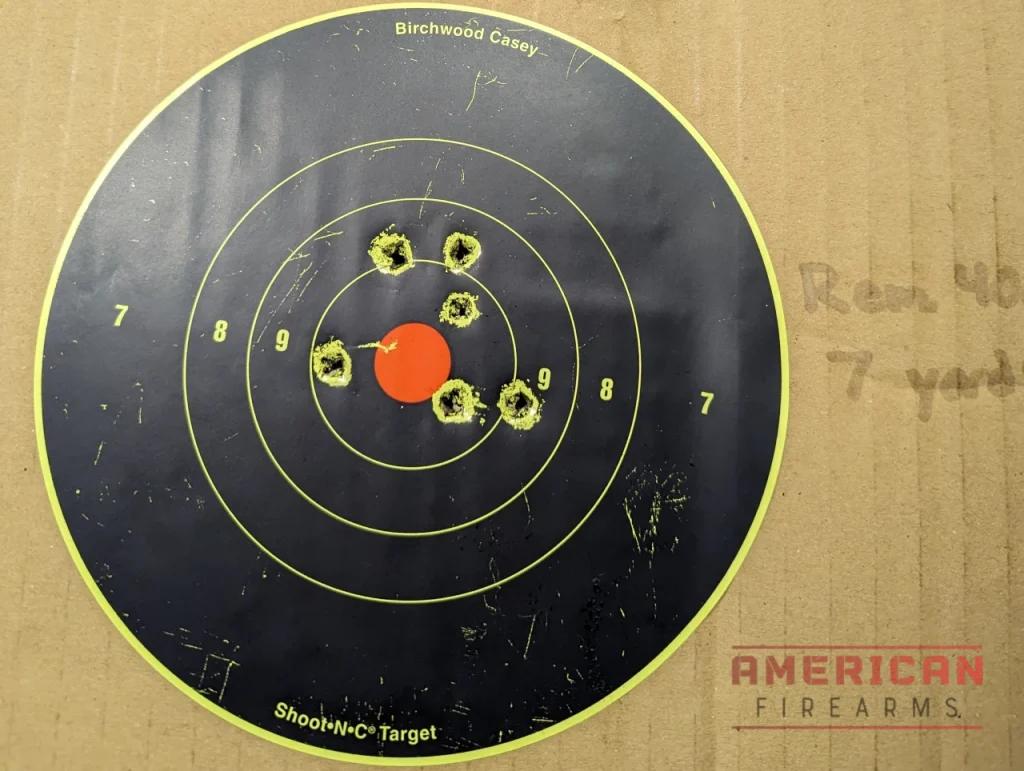
Small Game Hunting
Hunters need accuracy above all else, followed by reliability in field conditions. Longer barrels help here, as does the ability to mount optics. The Ruger Mark IV Hunter or similar target-oriented pistols excel in this role.
Consider suppressor compatibility if your state allows it—a .22LR with a good can is whisper-quiet and won’t spook other game in the area.
Concealed Carry (With Serious Caveats)
Let’s address the elephant in the room: .22LR for self-defense is a controversial topic, and for good reason. The round lacks the penetration and expansion characteristics of proper defensive calibers, and rimfire ammunition has higher failure rates than centerfire rounds.
That said, if physical limitations make larger calibers impossible, or if you absolutely cannot handle the recoil of a .380 ACP or 9mm, a .22LR is infinitely better than harsh language. Choose something with an external hammer for restrike capability, prioritize high-quality ammunition like CCI Stingers, and understand the limitations of what you’re carrying.
Key Features to Evaluate
1. Barrel Length: Finding the Sweet Spot
Ever since the pocket-sized Mossberg Brownie micro pistol of the Prohibition-era and then later the Beretta Minx hit the scenes in the 1950s, offering a downright lilliputian rimfire handgun with a barrel in the 2-inch range, there has been a steady effort to make ultra-concealable .22 semi-autos.
Today, Beretta still makes a modern version of the Minx, the Model 21 series, and both Ruger (LCP 22) and Taurus (PT22) market similarly shrunken pistols, pitched to the concealed carry market. However, these guns all suffer from increased malfunctions for a variety of reasons as well as rapidly declining accuracy at distance, due largely to the abbreviated sight radius and poorly designed sights.
Likewise, competition-length barrels, like the 6-inch bull seen on the Volquartsen Black Mamba LLV, are taking it a little far for average use unless you’re interested in competition-oriented target pistols.
With that in mind, pistols with barrels falling in the 4-inch range split the difference, providing a platform for decent adjustable sights (and optics cuts) while offering a nice sight radius at the same time.
2. Capacity: More is Usually Better
In the semi-auto .22LR pistol game, the common denominator tends to be a minimum of a 10-shot magazine capacity. Seen on Ruger’s MK IV, the Glock G44, the S&W SW22, Walther P22, and so forth, which keeps them readily available in states where magazine restrictions artificially inhibit what is in the gun case at your local dealer.
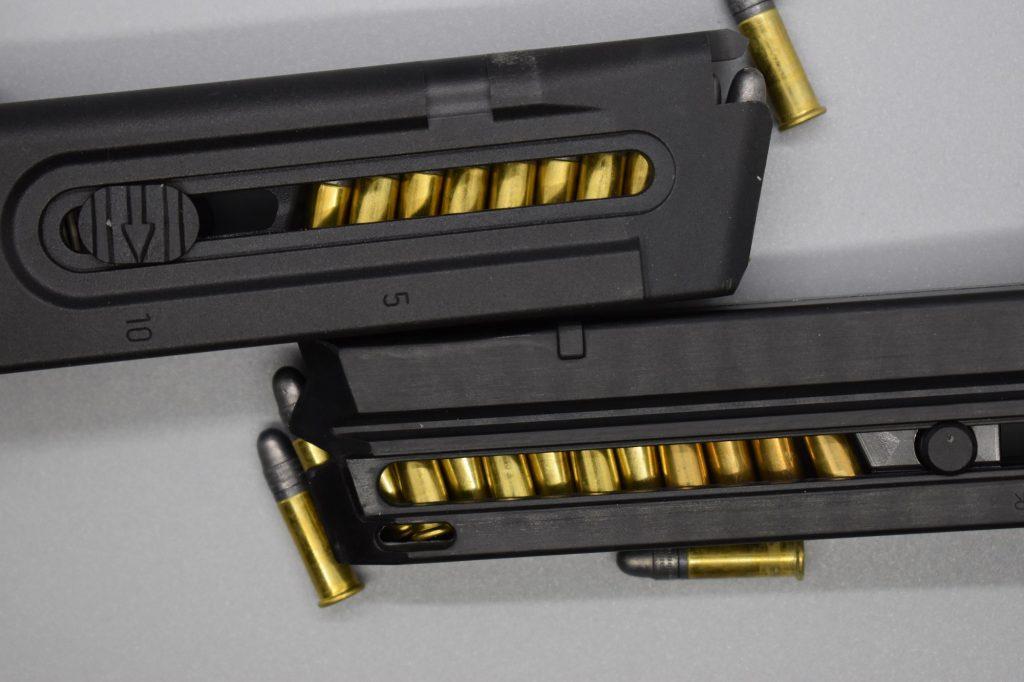
A few manufacturers offer a larger mag that still fits flush in the grip frame, notably KelTec—with their P17 and CP33 models—and Taurus with their new and very popular TX22. Anything less than ten shots, and you should consider a revolver.
Again, there’s no right or wrong answer. But more rounds are usually better for backyard plinking and can make shooting these guns more fun. Self-defense or concealed carry pistols (being smaller on average) can do their job just fine with fewer rounds (5-6 rounds can be all you need), which helps reduce the firearm’s size and improve concealment.
3. Action Type: What Fits Your Needs
Semi-Automatic Pistols dominate the .22LR market for good reason—they’re fast, hold more rounds than revolvers, and generally offer better value. Most use simple blowback actions that are reliable and easy to maintain.
Revolvers offer simplicity and the ability to fire different .22 cartridge lengths (Short, Long, and Long Rifle) without modification. They’re nearly jam-proof but slower to reload and typically hold only 6-10 rounds.
Single-Action vs. Double-Action: Single-action triggers are generally crisper and lighter, making them better for accuracy. Double-action triggers offer the ability to restrike a dud round—important with rimfire ammunition’s higher failure rate.
4. Reputation & Reliability: Stick with Known Quantities
As the pressures involved in rimfire pistols are slight when compared to firearms meant for full-power centerfire defensive rounds, over the years there has been a variety of bargain-basement .22 brands to hit the market.
Inexpensive rimfire pistols and revolvers, often with zinc alloy frames and thin plastic grips, from obscure firms in Germany, Italy, and Spain who ordinarily made blank-firing starter pistols, flooded the market after World War II and they could often be had for about $12 in the 1960s.
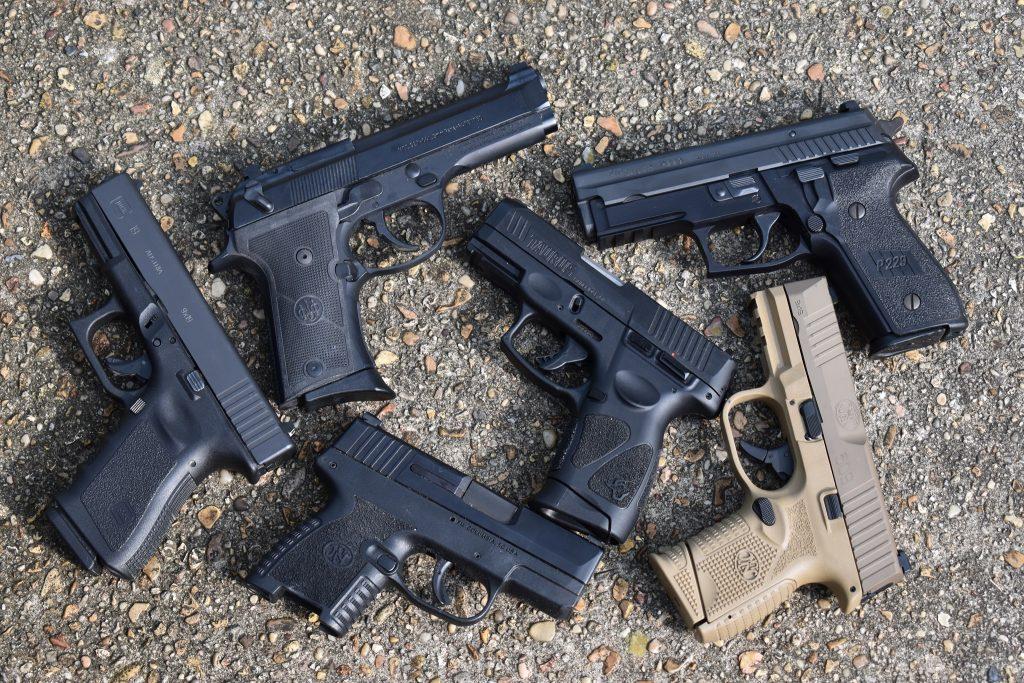
The thing is, you got what you paid for as the guns were typically junk. Federal legislation dropped the ban hammer on a lot of these cap guns in 1968 but today there are still a few companies—hailing from much the same places as before—that make low-quality jam-a-matics, only this time they are large enough to meet the “sporting purposes” test imposed by the ATF on imports.
When it comes to selecting a decent .22LR semi-auto pistol, try to stick with recognizable household names: Ruger, Smith & Wesson, Browning, Glock, SIG, Walther, and yes, even Taurus (they’ve really stepped up their game lately).
5. The Reliability Reality Check

The biggest stumbling block for a .22 semi-auto pistol is its diet: the rimmed .22LR cartridge.
Designed originally for revolvers, where a rim must exist for the case to seat properly in the cylinder and then later be self-extracted, that same rim makes feeding in vertically-stacked 22LR ammo from a magazine into a pistol somewhat problematic.
Couple this with the fact that rimfire ammunition suffers a higher failure rate per round than centerfire ammo due to the nature of both its design and production—which favors an economy of scale to fill bulk-pack boxes and tubs by weight to make the rounds as inexpensive as possible—and you’re bound to have jams, light strikes, and other malfunctions when shooting .22s.
Going past that, unjacketed lead bullets, the most common load, cause extensive fouling of barrel rifling and actions. All of this adds up to the fact that .22LR semi-autos are almost doomed to fail and that they only succeed due to superb designs.
Keep in mind that successful .22 pistol makers have a background in producing rugged and reliable firearms. That is why you see companies like Browning, Smith & Wesson, and Glock on our list. They have perfected low recoil functionality and overcome problems such as properly stacking those pesky rimmed .22LRs in a magazine so that they feed correctly.
6. Modern Features That Matter
While the .22 LR handguns of old were extraordinarily basic, the better ones on the market today include features that were formerly seen only on combat pistols, if they were seen at all.
Modularity and Ergonomics: To better adapt to a wide range of users, several of the better pistols are supplied with different backstraps to increase the modularity of the gun. Look for grips that fit your hands—a gun that feels awkward will never shoot well for you.
Threaded Barrels: To accommodate muzzle devices and suppressors—which are legal for consumer ownership in 42 states—direct threaded barrels are increasingly common on production guns. Even if you don’t plan on running a suppressor immediately, having the option is worth the small price premium.
Adjustable Sights: These are increasingly standard rather than the rare exception. Look for sights that are dovetailed to the top of the frame and thus readily upgradable. Fiber optic front sights are a nice touch for target acquisition.
Optics Ready: Many modern .22LR pistols come with optics cuts or removable rear sight plates. A good red dot sight can dramatically improve your accuracy and speed, especially for older shooters or those with vision issues.
Accessory Rails: Picatinny rails on the dust cover allow mounting of lights and lasers, adding versatility for different shooting scenarios.
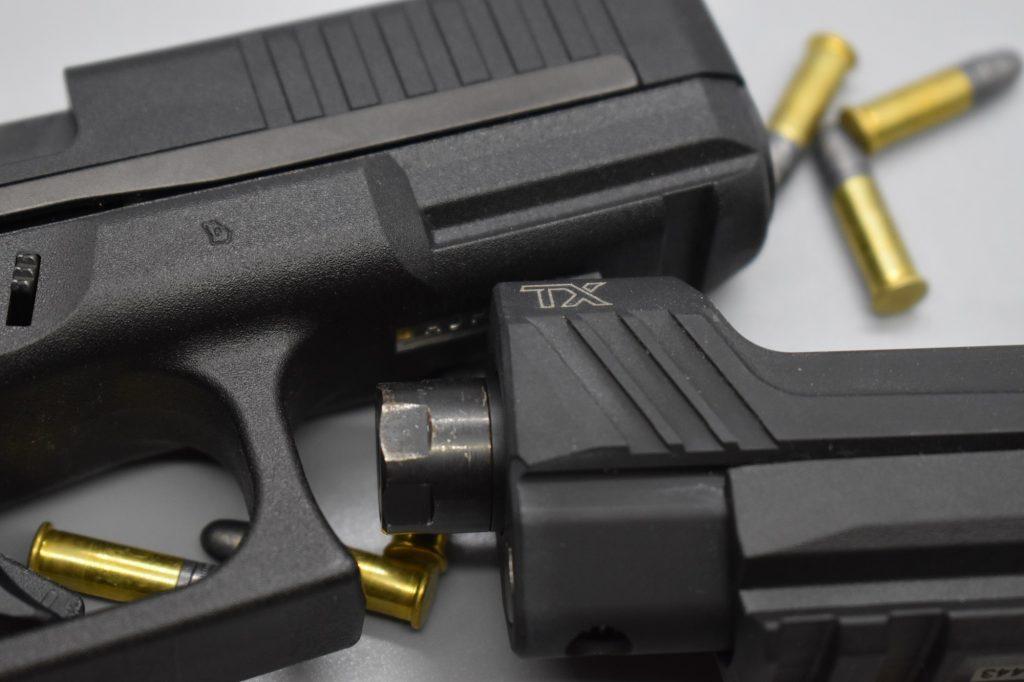
Budget Considerations
Entry Level ($200-350)
Expect basic functionality with some compromises in fit, finish, or features. The Heritage Rough Rider and Taurus TX22 live here and offer surprising value. You’ll get a functional gun that goes bang reliably, but don’t expect match-grade triggers or premium materials.
Mid-Range ($350-500)
This is the sweet spot for most shooters. You’ll find proven designs like the Ruger Mark IV, Browning Buck Mark, and Walther P22. These guns offer good reliability, decent accuracy, and enough features to keep most shooters happy.
Premium ($500+)
High-end options like the Smith & Wesson Model 41 or custom Volquartsen pistols live here. You’re paying for match-grade accuracy, premium materials, and often hand-fitted components. Only worth it if you’re serious about precision shooting or competition.
The Aftermarket Advantage
One often-overlooked factor is aftermarket support. Companies like Tandemkross and Volquartsen have built entire businesses around upgrading popular .22LR platforms. If you think you might want to modify your pistol down the road, choose a platform with robust third-party support.
Popular platforms like the Ruger 10/22 action (used in various pistol configurations) and the Ruger Mark series have literally hundreds of upgrade options available. Less common guns might leave you stuck with whatever the factory provides.
Red Flags to Avoid
Overly Complex Designs: If it takes a PhD in engineering to field-strip the gun, you probably don’t want it. .22LR pistols get dirty fast and need frequent cleaning.
No-Name Brands: That $150 pistol from a company you’ve never heard of is cheap for a reason. Stick with established manufacturers.
Proprietary Everything: Guns that require special tools, unique ammunition, or manufacturer-only parts are a headache waiting to happen.
Poor Reviews: In the age of the internet, there’s no excuse for buying a gun with consistently poor user reviews. Do your homework.
A Note On Ammunition
Here’s the hard truth about .22LR pistols: they’re pickier eaters than a toddler at dinnertime. Feed them the wrong ammo, and you’ll spend more time clearing jams than actually shooting. Get it right, and they’ll run like clockwork.
The Ammo Hierarchy: What Actually Works
Not all .22LR ammunition is created equal. While that bulk pack might look tempting at three cents per round, your pistol will likely reward your frugality with frustration.
Tier 1: The Reliable Performers
| Brand | Velocity | Why It Works |
|---|---|---|
CCI Mini Mag | 1,235 fps | Gold standard for semi-autos |
CCI Stinger | 1,640 fps | Hot load w/excellent reliability |
Federal AutoMatch | 1,200 fps | Designed specifically for semi-autos (my personal fav) |
Aguila Super Extra | 1,255 fps | Consistent & clean-burning |
Tier 2: Usually Fine
| Brand | Model | Notes |
|---|---|---|
Winchester Super-X | Works in most guns w/occasional hiccups | |
Remington Golden Bullet | Hit or miss depending on lot | |
Federal Champion | Good value & decent reliability |
Tier 3: Proceed with Caution
Bulk pack ammunition from major manufacturers can work but expect more failures. Ultra-cheap brands and reloads are generally a recipe for disappointment in semi-automatic pistols.
High Velocity vs. Standard Velocity
Most .22LR pistols prefer high-velocity ammunition (1,200+ fps) because the extra energy helps cycle the action reliably. Standard velocity rounds often lack the oomph to fully cycle lightweight blowback actions, leading to failures to extract or eject.
Exception: Some high-end target pistols are designed around standard velocity match ammunition. Check your manual.
Special Purpose Loads
Subsonic Ammunition: If you’re running a suppressor, subsonic loads like CCI Quiet or Aguila SSS eliminate the supersonic crack. Expect reliability issues in some pistols due to reduced energy.
Hollow Points: CCI Velocitor and Speer Gold Dot offer expansion for those using .22LR for pest control or self-defense. They typically run hotter and cycle actions well.
Match Ammunition: Eley, Lapua, and RWS make incredibly accurate target loads, but they’re expensive and often too light to cycle semi-auto actions reliably.
Storage and Buying Tips
Buy in bulk when you find good ammo. Quality .22LR can disappear from shelves during shortages, and good ammunition doesn’t go bad if stored properly.
Test before committing. Buy a box or two of different brands to see what your pistol prefers before ordering cases.
Store properly. Keep ammunition in a cool, dry place. Moisture is rimfire’s enemy and can cause corrosion that leads to misfires.
The Bottom Line
Spend the extra few cents per round on quality ammunition. CCI Mini Mags cost roughly twice what bulk ammo costs, but they’ll run in virtually any .22LR pistol without issues. Your trigger time is too valuable to waste clearing jams caused by cheap ammunition.
Remember: the most expensive ammunition is the stuff that doesn’t go bang when you need it to.
Maintenance & Care: Keeping Your .22LR Running Right
Here’s the uncomfortable reality: .22LR pistols are dirty little beasts that require more babysitting than their centerfire cousins. The ammunition burns dirtier, leaves more residue, and will turn your pristine pistol into a lead-fouled mess faster than you can say “bulk pack.”
But don’t worry—with the right approach, keeping these guns running is straightforward.
Cleaning Frequency: More Than You Think
Every 200-250 rounds for most semi-automatic .22LR pistols. Yes, that’s roughly every range session for most folks. Revolvers can go a bit longer, but don’t push it past 400 rounds.
Some target pistols with tighter tolerances need cleaning every 150 rounds or they’ll start choking. Your gun will tell you when it needs attention—listen to it.
Essential Cleaning Supplies
Basic Kit Essentials
- Quality bore solvent (Hoppes No. 9 or CLP)
- Lead removal cloth or Lewis Lead Remover
- Bronze bore brush (.22 caliber)
- Patches and cleaning rod
- Cotton swabs for detail work
- Gun oil (light application)
- Nylon brush for action cleaning
Lead Removal is Critical: Unlike centerfire ammunition, most .22LR uses plain lead bullets that deposit material in your barrel. This buildup kills accuracy and can cause pressure issues.
Step-by-Step Cleaning Basics
1. Safety First: Ensure the gun is unloaded, magazine removed, and action locked open.
2. Initial Bore Cleaning: Run a solvent-soaked patch through the barrel from breech to muzzle if possible. Let it sit for 5-10 minutes.
3. Scrub the Bore: Use a bronze brush with solvent, making 10-15 passes through the barrel. Don’t reverse direction while the brush is in the bore.
4. Lead Removal: Use a lead removal cloth or specialized lead remover according to manufacturer instructions. You’ll be amazed at the black crud that comes out.
5. Clean the Action: Remove bolt or slide according to your manual. Clean all surfaces with solvent and a nylon brush. Pay special attention to the chamber and feed ramp.
6. Final Patches: Run clean, dry patches through the barrel until they come out white.
7. Light Lubrication: Apply a thin coat of gun oil to moving parts. More is not better—excess oil attracts dirt.
Common Problems & Solutions
We all know .22 LR pistols are less reliable than your standard centerfire options, so we highlighted a few of the possible issues than crop up from time to time, and how to resolve them.
| Problem | Symptoms | Most Likely Cause | Solution |
|---|---|---|---|
Failure to Feed | Cartridge doesn't chamber or bolt closes empty | Dirty chamber or weak ammo | Clean feed ramp thoroughly and switch to high-velocity loads |
Failure to Extract | Spent case stuck in chamber | Lead buildup in chamber | Aggressive cleaning with lead removal system |
Failure to Eject | Case stovepipes in ejection port | Dirty bolt face or weak ammo | Clean extractor groove and try hotter loads |
Light Primer Strikes | Firing pin dents primer but no ignition | Dirty firing pin channel | Clean firing pin channel with solvent |
Poor Accuracy | Groups open up significantly | Lead fouling in barrel | Deep clean barrel with lead removal cloth |
Frequent Jams | Multiple malfunction types | Wrong ammunition type | Switch to proven high-velocity ammunition |
Won't Cycle | Action doesn't fully open/close | Insufficient recoil energy | Use higher velocity ammunition only |
Magazine Issues | Won't feed from certain positions | Damaged feed lips or weak spring | Inspect magazine and replace if damaged |
All that said, don’t let it dissuade you from picking up a rimfire pistol. Yes, .22LR pistols require more attention than centerfire guns, but they’re not high-maintenance nightmares if you stay ahead of the cleaning curve. The key is consistency—clean regularly, use good ammunition, and address problems early before they become bigger issues.
Remember: a clean .22LR pistol is a happy .22LR pistol. Treat yours right, and it’ll give you years of reliable, accurate service.
Wrap up
Choosing a .22LR pistol doesn’t have to be complicated, and there has probably never been a better selection of rugged and dependable semi-auto .22LR pistols available to the consumer than there is today.
Identify your primary use case, set a realistic budget, and prioritize reliability over flashy features. A simple, well-made gun that goes bang every time you pull the trigger will serve you better than a feature-packed wonder that spends more time in the shop than on the range.
Remember: the best .22LR pistol is the one you’ll actually shoot. Choose something that fits your hands, your budget, and your intended use, then get out there and burn through some ammo. After all, that’s what these guns are for.
An almost timeless concept as the type has been around for over a century, the autoloading rimfire handgun is fully mature and ready to clock in to perform roles ranging from pest control and target practice– much like older models– to training for tactical/practical use with the aid of optics and suppressors if desired. Welcome to the 21st Century.
FAQs
Which .22 pistol offers the best accuracy?
What about .22 pistols for self-defense?
Which 1911 .22 pistol reigns supreme?
More Reading
- Chuck Hawks, History of .22 Rimfire
- NRA Women, Do .22 LR pistols make sense for self-defense?
- ATF, Projectile Classification Framework
- Wiki Commons, Colt Woodsman Image
- Wk Commons, Smith & Wesson Model 41 Image
Updated
Sign up for our newsletter
Get discounts from top brands and our latest reviews!

